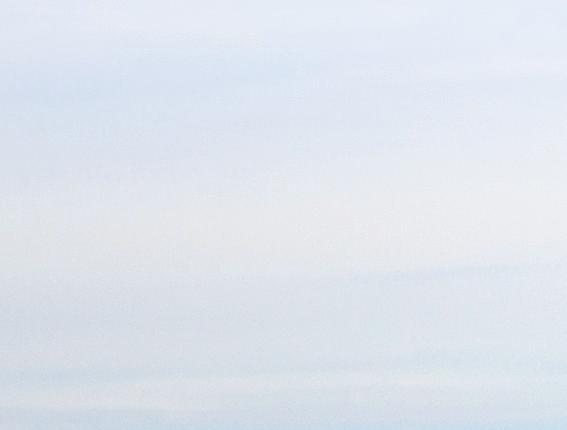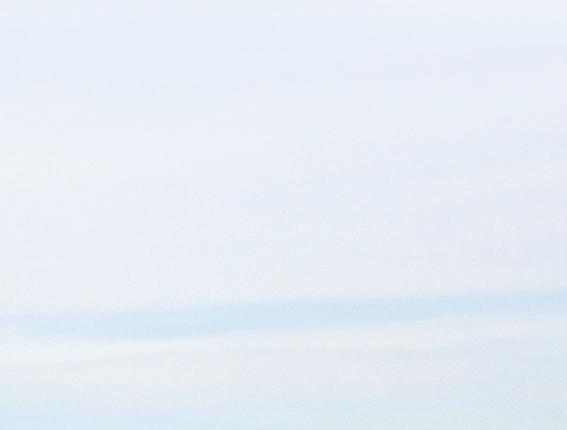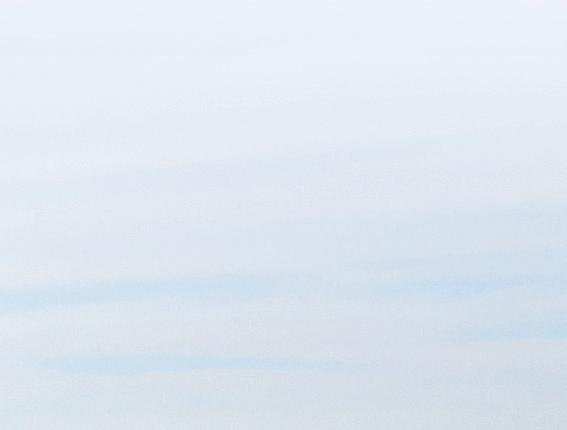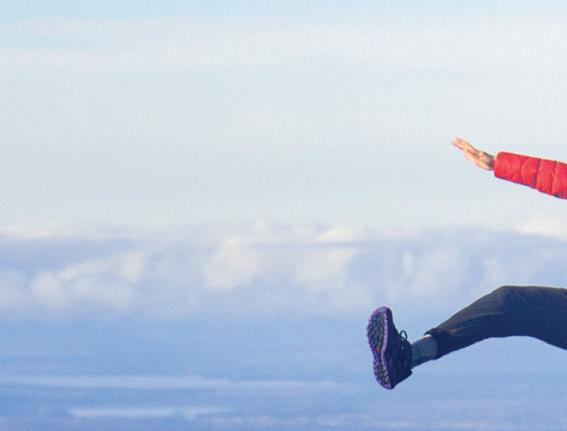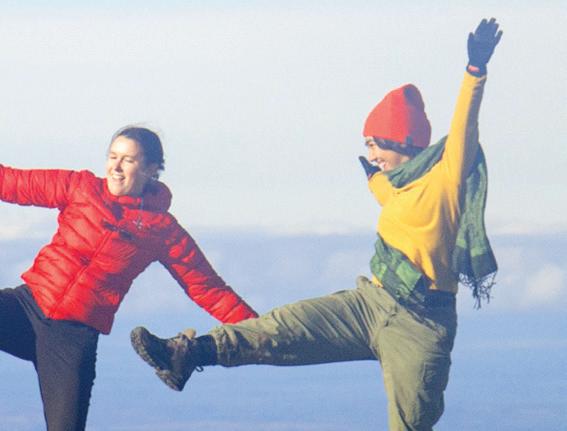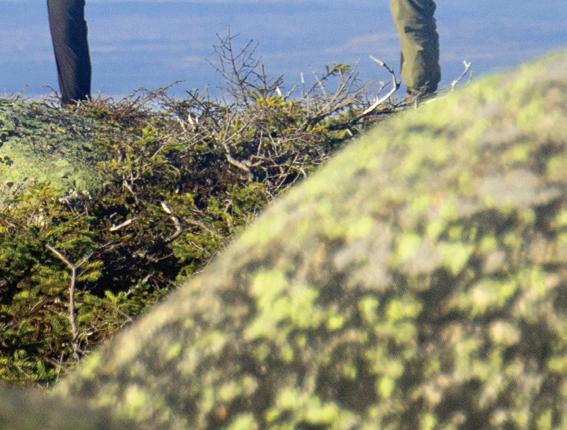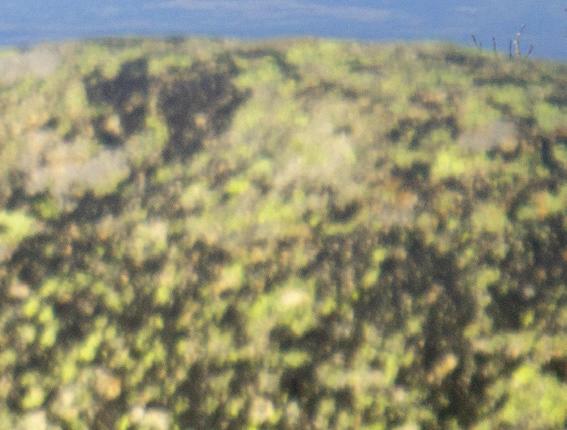






















Beth Gardiner, Chair, London, UK
Marthann Samek, Vice Chair, New York, NY
Hank Schmelzer, Vice Chair, Somesville, ME
Ronald E. Beard, Secretary, Bar Harbor, ME
Barclay Corbus, Treasurer, San Francisco, CA
Cynthia Baker, Washington, DC
Timothy Bass, Washington, DC
Michael Boland ’94, Bar Harbor, ME

Joyce Cacho, Washington, DC
Alyne Cistone, Mount Desert, ME
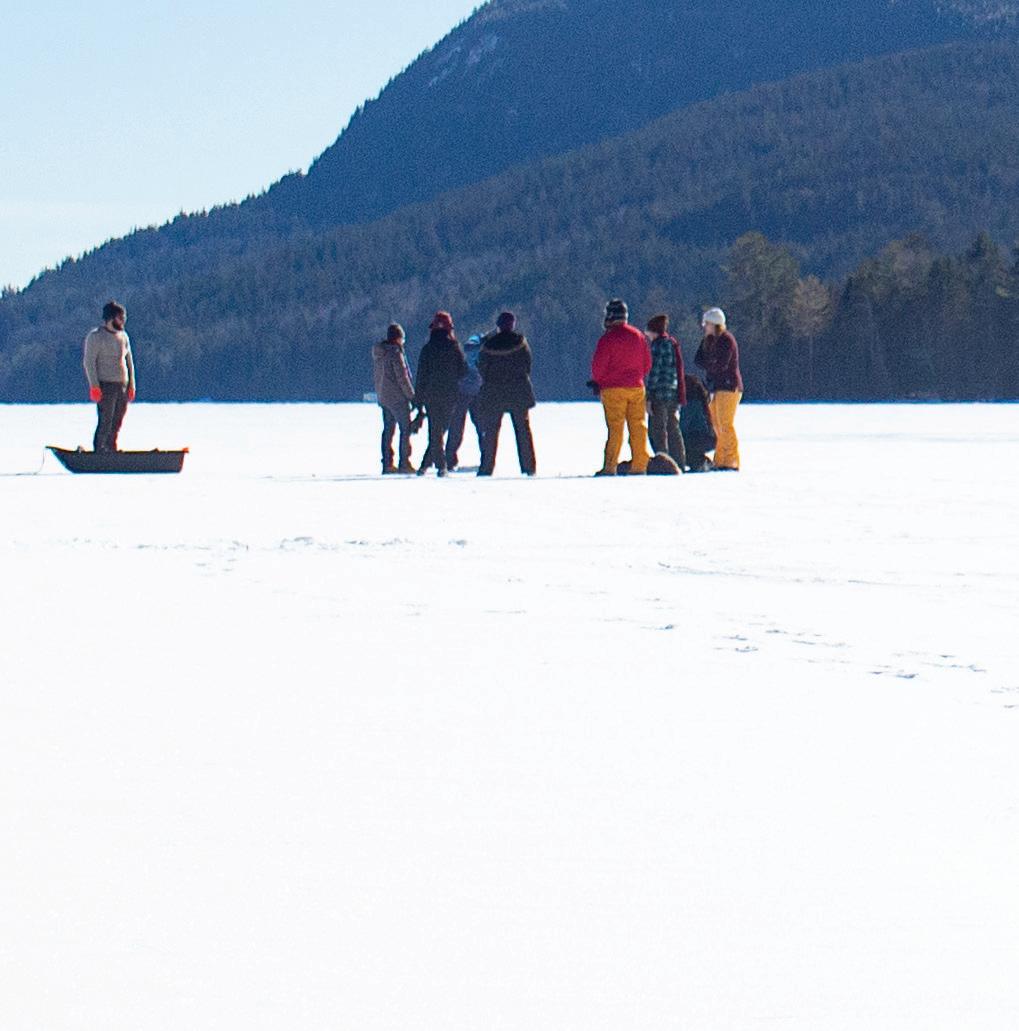
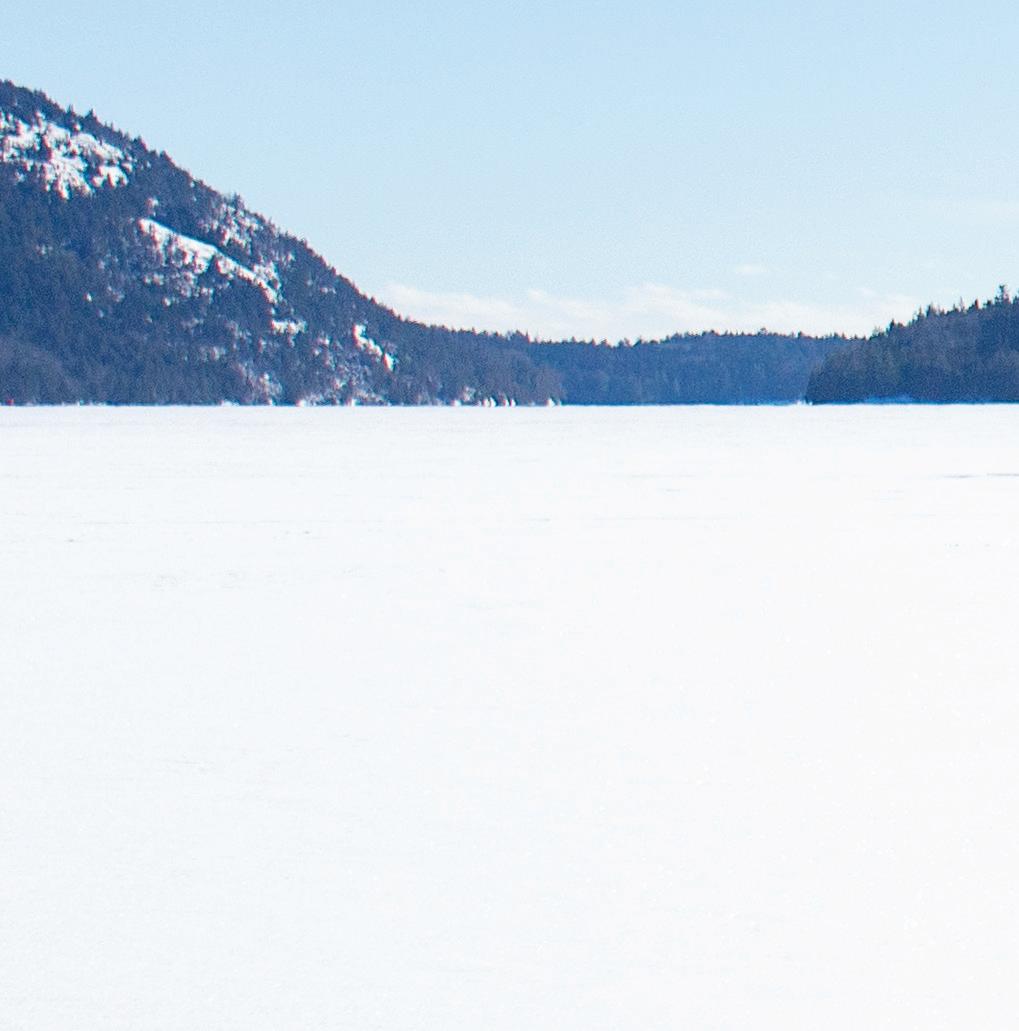
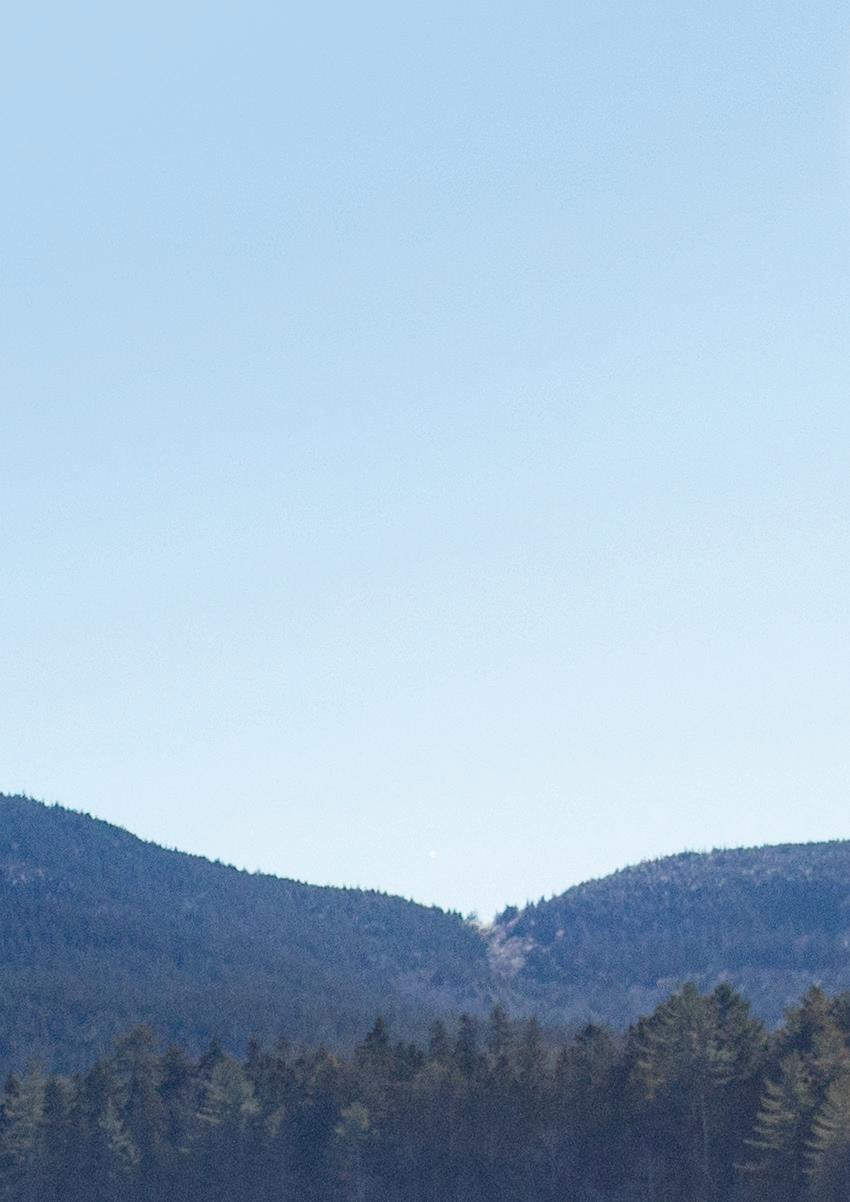
Sarah Currie-Halpern, Boulder, CO
Heather Richards Evans, Wilmington, DE
Marie Griffith, St. Louis, MO
Cookie Horner, Bar Harbor, ME
Nicholas Lapham, Washington, DC
Casey Mallinckrodt, Hartford, CT
Anthony Mazlish, Chevy Chase, MD
Chandreyee Mitra ’01, Aurora, IL
Roland Reynolds, Alexandria, VA
Nadia Rosenthal, Bar Harbor, ME

Laura McGiffert Slover, Washington, DC
Laura Z. Stone, New York, NY
Steve Sullens, New York, NY
Claudia Turnbull, Greenwich, CT
Samuel M. Hamill, Jr., Princeton, NJ
John N. Kelly, Yarmouth, ME

William V.P. Newlin, Washington, DC
John Reeves, Bar Harbor, ME
David Hackett Fischer, Wayland, MA
William G. Foulke, Jr., Bedford, NY
Amy Yeager Geier, Hobe Sound, FL
George B.E. Hambleton, Charleston, SC
Elizabeth D. Hodder, Cambridge, MA
Philip B. Kunhardt III ’77, Waccabuc, NY
Jay McNally ’84, Bar Harbor, ME
Philip S.J. Moriarty, Hinsdale, IL
Phyllis Anina Moriarty, Chestnut Hill, MA
Cathy Ramsdell ’78, Portland, ME
Hamilton Robinson, Jr., New York, NY
William N. Thorndike, Boston, MA
John Wilmerding, New York, NY
Darron Collins ’92, President, Bar Harbor, ME




All
Dear friends,
In September 2021, at the beginning of College of the Atlantic’s 50th academic year, roughly 100 incoming students split up into fi ve sections of COA’s only required course: The Human Ecology Core Course. Among other texts, each student read Robin Wall Kimmerer’s Braiding Sweetgrass. This fall, I decided to catch up with last year’s students and finally read this book.
In Braiding Sweetgrass, Kimmerer encourages us to develop a culture of reciprocity, where gifts are given, and in return, we give back. To the land, to the people, to the plants, animals, and creatures with whom we share this planet. This giving, receiving, and giving again creates a cycle of life that deepens and enriches through acts of reciprocity. Simple, elegant, powerful.
At College of the Atlantic, gifts are foundational to our community and our success. Donors like you give to COA, and in reciprocity, COA’s students and alumnx give back to the world through the knowledge, skills, and talents they developed at COA, thanks to your generosity.
This report is filled with accounts from faculty, staff, and students of how they are transforming the gifts you have given into gifts that create a better world. As I pulled these reports together I was struck by how many faculty chairs, scholarships, and funds were given by people who are no longer living, yet through investing and carefully stewarding their gifts, and drawing only a small portion of the earnings, their generosity supports students in perpetuity.
So whether you are a member of the Northern Lights Society (planned giving), our Black Fly Society (recurring donors), the Champlain Society ($1,500+), Alumnx Leadership Circle ($500+), or just made your first donation, I hope you enjoy this report and take pride in what you have given to COA and ultimately our world. We are certainly grateful!
Sincerely,
Shawn Keeley ’00 Dean of Institutional AdvancementGIVING AT A GLANCE
$17.4M OVERALL GIVING AND PLEDGES
2,744 GIFTS
1,419 DONORS
22% ALUMNX PARTICIPATION
We are showered every day with gifts, but they are not meant for us to keep. Their life is in their movement, the inhale and the exhale of our shared breath. Our work and our joy is to pass along the gift and to trust that what we put out into the universe will always come back.
— Robin Wall Kimmerer, Braiding Sweetgrass
On the heels of very strong performance by the endowment funds over the course of fiscal year 2021 (yielding one-year returns of 28.9%), the first six months of 2022 gave back much of those earned gains. The one-year return on endowed funds for the period ending June 30, 2022 finished at -16.8%. The threeand fi ve-year returns came back at 2.8% and 4.9% respectively.
Though global asset markets struggled, contributions from the Broad Reach Capital Campaign continued to arrive and new funds within the endowment continued to mature. At the close of
the 2022 fiscal year (June 30, 2022), the COA endowment stood at roughly $69.7 million. Though this was significantly below the closing mark of FY21 at $82.6 million, it was nearly $8 million above the closing mark for FY20 ($62 million).
In aggregate, the two-year period beginning June 30, 2020 and ending June 30, 2022 saw the COA endowment grow by roughly 12.4%. This was in spite of one of the worst first six-month periods of asset market performances in the past 50 years.
The COVID-19 pandemic has posed waves of challenges to the college over the past two plus years. This recent market turbulence is yet another wave for the community to navigate. The generosity of our supporters has buoyed the college through these challenges and will help us chart a course to calmer waters moving forward. Our annual endowment draw represents a
vital source of funding for program operations, equating to roughly $8,200 in annual revenue per student for the 2021-2022 academic year. The following pages include reports of the many funds within the endowment and how they support the fulfillment of the mission of the college.
JULY: Chefs, farmers, writers, policy experts, entrepreneurs, and activists joined COA for the fifth annual Summer Institute: Good Food and Food Fights.
SEPTEMBER: Alum Craig Kesselheim ’76 of COA’s first incoming class welcomed the college’s 50th incoming class during convocation and officially opened the Davis Center for Human Ecology, a new 30,000-square-foot academic center. He was joined by the center’s architects Susan T. Rodriguez and Tim Lock as well as COA governance moderator Olivia Paruk ’24 and President Darron Collins ’92.
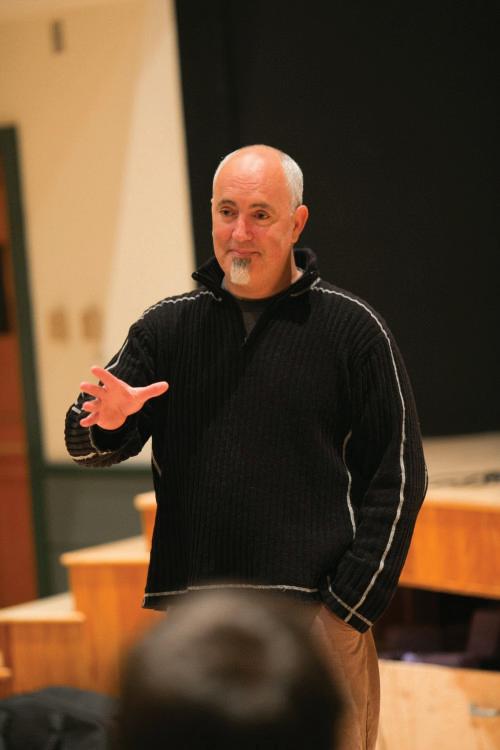


NOVEMBER: The Davis Center for Human Ecology was highlighted in the annual colleges and universities issue of Architectural Record, alongside six other innovative designs from around the world.

COA was awarded first place in a three-way-tie with the University of Puget Sound and Maine’s Bowdoin College for the highest undergraduate voting rate in the nation, according to the results of the ALL IN Campus Democracy Challenge. A total of 85.1 percent of all eligible undergraduate students at COA voted in the fall 2020 election, nearly 20 points higher than the national average.
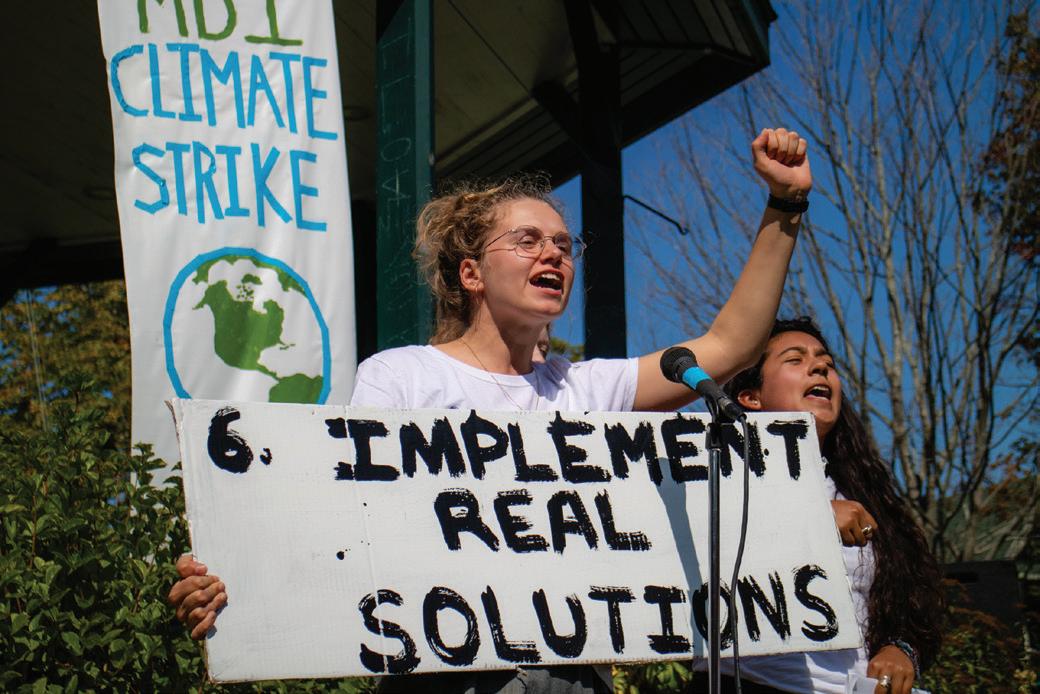


FEBRUARY: A challenge grant from Walter Robinson, Casey Mallinckrodt, and Mary K Eliot inspired 630 donors to contribute $193,013 during the 24-Hour Challenge, the highest fundraising total in the history of the challenge.
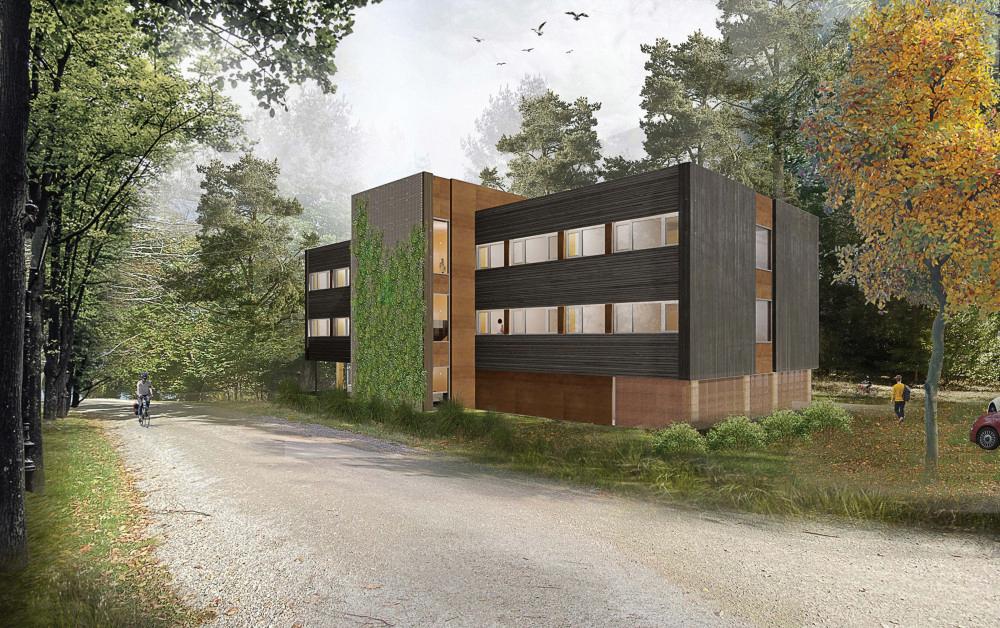
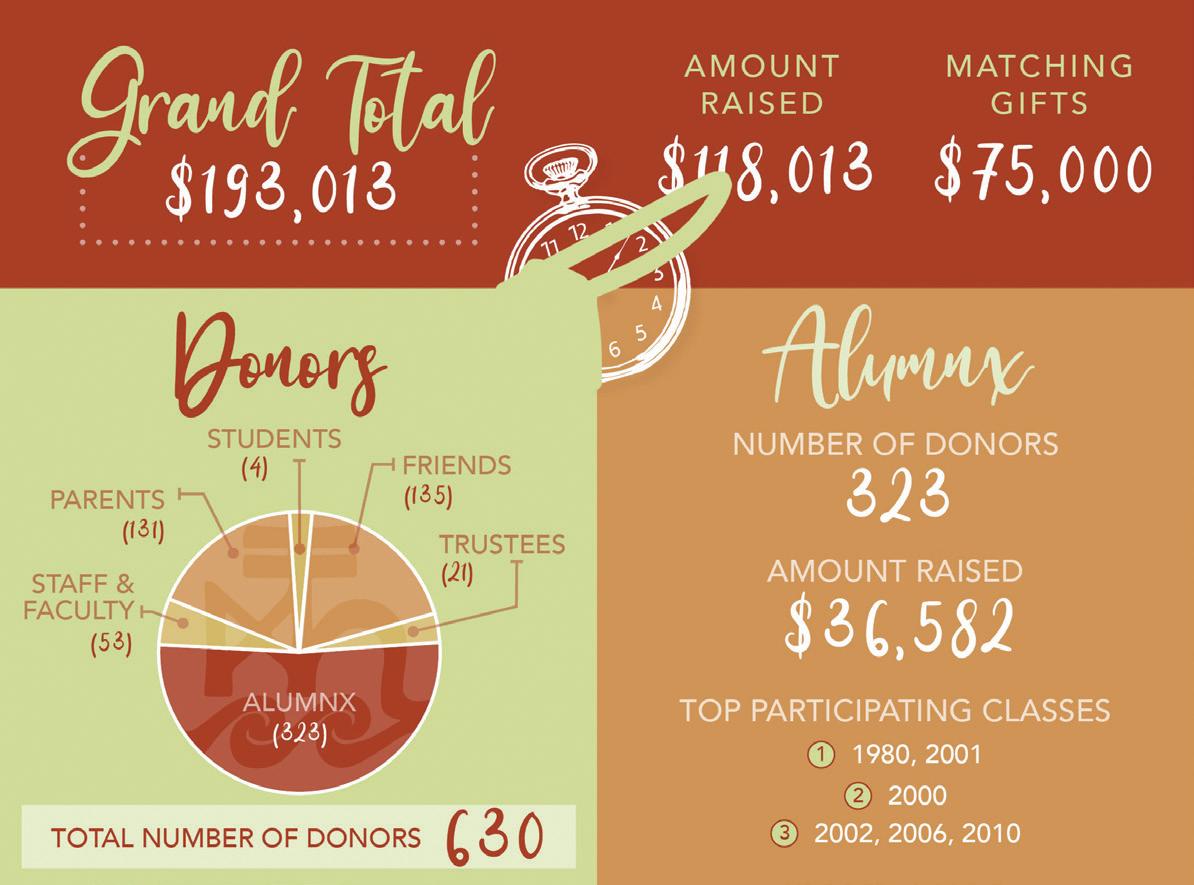
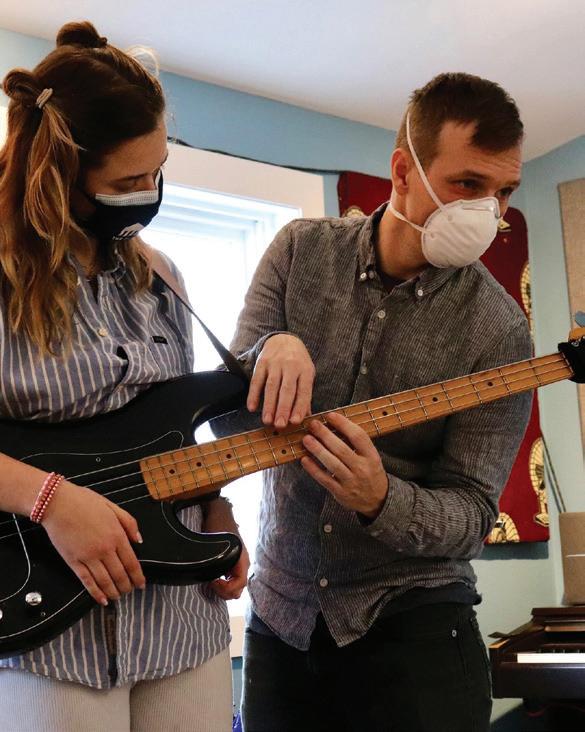

APRIL: Students Taibatou Adamou ’22 and Aniruddha Jaydeokar ’23 were awarded $10,000 for their Projects for Peace project, Empower Women Entrepreneurs for Peace in Niger, which will support a group of small business owners in Niamey.

JUNE: Alumnx Weekend capped off the 50th academic year with a celebration of Millard Dority’s 52-year career at COA, a Founders Roundtable, and a weekend full of activities.

Ornithologist and conservationist Eleanor Gnam ’23 received the prestigious Barry Goldwater Scholarship.
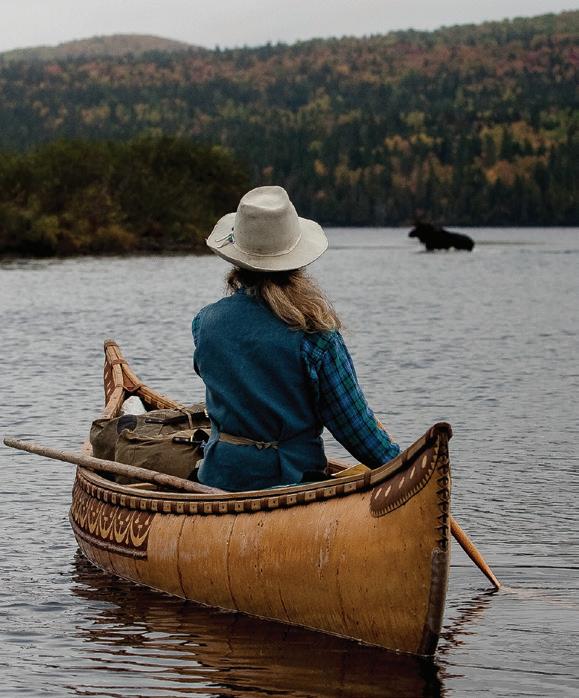
Three generations of the Davis family have made extraordinary, transformational gifts to College of the Atlantic. Throughout this report you will read about programs like the Expeditionary Fund, buildings like the Davis Center for Human Ecology, and a new student residence that will house 46 students for the coming academic year—all thanks to the generosity of the Davises.
But the program that stands above all, and has without a doubt had the single largest impact on COA in the
past quarter century, is the Davis United World College (UWC) Scholar Program. Founders Shelby Davis and Phil Geier began the program in 2000 with a single idea:
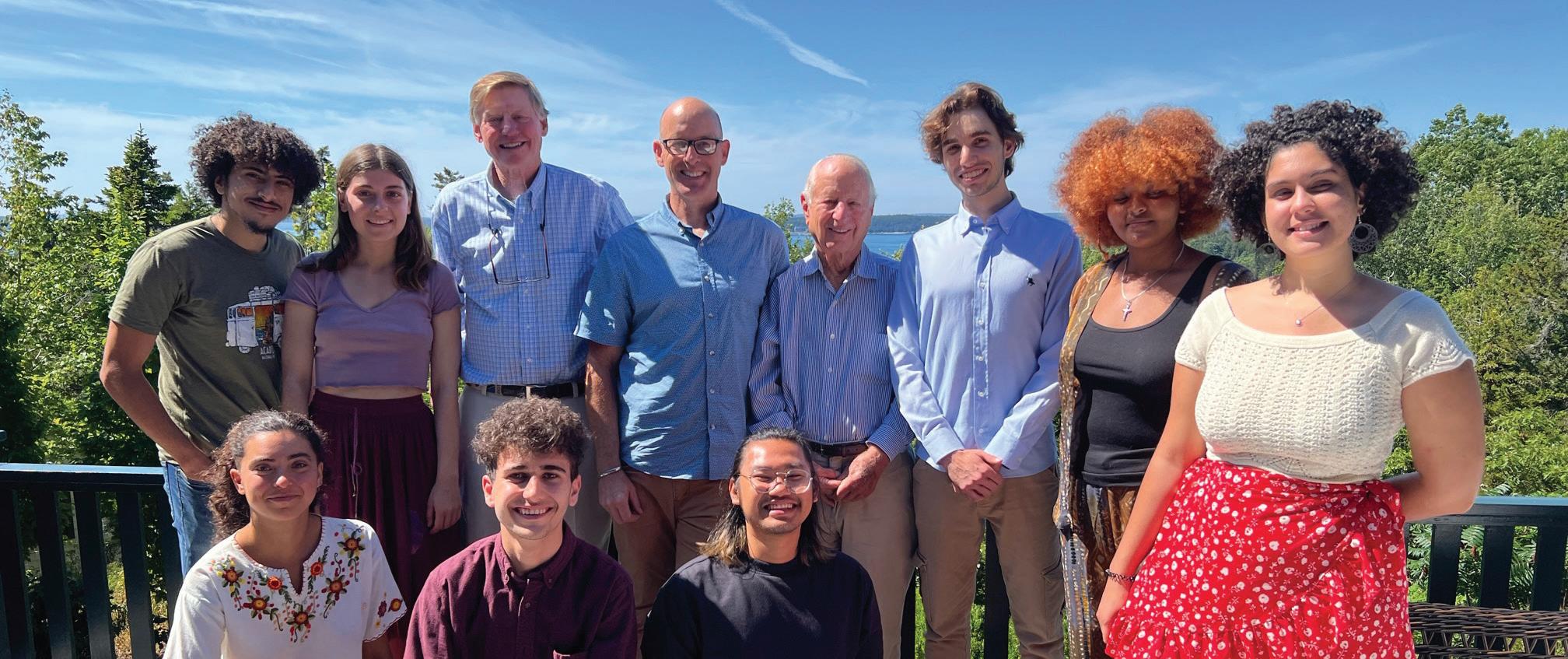
If you could bring thousands of talented students from every corner of the globe to US colleges and universities…you could create international understanding and change the world.
80 DAVIS SCHOLARS CURRENTLY ENROLLED
39 COUNTRIES REPRESENTED BY CURRENT DAVIS SCHOLARS
COA was one of just five pilot colleges to enroll Davis Scholars in the year’s first program (2000) and has never looked back. Davis Scholars have enriched COA and the study of human ecology in profound ways, have reshaped the college’s curriculum, and have helped make COA a global institution here on Mount Desert Island. Thank you Shelby, Gale, and the entire Davis family—you’ve helped COA reach new heights, and from these high places our students can see and build a better world.
$32.6M TOTAL SCHOLARSHIP FUNDING FOR DAVIS SCHOLARS SINCE THE PROGRAM BEGAN IN 2000
23% OF COA STUDENTS ARE DAVIS SCHOLARS
257 COA GRADUATES ARE DAVIS SCHOLARS
22 YEARS THAT DAVIS SCHOLARS HAVE ATTENDED COA
Shelby Davis and Phil Geier, co-founders of the Davis UWC Scholars Program, with COA President Darron Collins and some current Davis UWC ScholarsThe Bass Chair funds a range of field and lab-based opportunities. During the 2021-2022 academic year, I taught a total of 60 students and mentored 14 student advisees. Highlights included a float trip down the Penobscot River, a field trip to North Woods Ways, community water quality outreach projects, and student presentations at regional conferences.
I served as campus representative for the EcoLeague and Goldwater Fellowship, and organized senior project presentations for trustees with Jodi Baker. With students and local collaborators, I continued work with partners at Acadia National Park (ANP), Friends of Acadia, and the Mount Desert Island Biological Laboratory (MDIBL) on local/regional water quality research projects. Externally, I served in my final year as president of the Geological Society of Maine and as a Cooperating Curator of the Hudson Museum at the University of Maine.
Courses I taught during the 2021-2022 year included Geology of MDI, Rocks and Minerals, Climate and Weather, and Watersheds. In Watersheds, students learned to monitor watersheds and streams in ANP. They also assisted with a research project to document the impacts of intense precipitation events. We enjoyed an

informative and exciting fl oat trip down the Penobscot River along with Ken Cline’s Hydropolitics class, and other river experts and stakeholders.
In the winter, I co-taught Topics in Research: Geoscience and Geochemistry with Reuben Hudson. In this writing-focused course, students focused on an ongoing research project throughout the term—analyzing, visualizing, and interpreting data in collaboration with students and other researchers. Their work culminated in a draft scientific manuscript that may be submitted for publication.
Research and outreach continued to be an important part of my work in FY22. This was the final year of a three-year National Institute of Health grant with collaborators at MDIBL that supports research and student training in regional groundwater quality, hydrology, and public health. See more about this project at coa.edu/shall/geoscience.
Work-study students Isidora Muñoz Segovia ’22 and Jennifer McNamara ’23 assisted with water sample collecting, curricular resource creation, and outreach to local schools. Four students
conducted extended independent study sub-projects which they presented at regional meetings. From this work they have offered free water testing to local residents, identified new spatial and temporal characteristics of local well water chemistry, and considered the effectiveness of different well filters.

Students Hallie Arno ’22, Ben Capuano ’23, Adam Feher ’23, Mustafa Khorzam ’25, Lenka Slamova ’24, and Ludwin Moran Sosa ’24 presented their findings at the Maine Sustainability and Water Conference in Augusta (April 2022) and/or the Geological Society of Maine (April 2022).


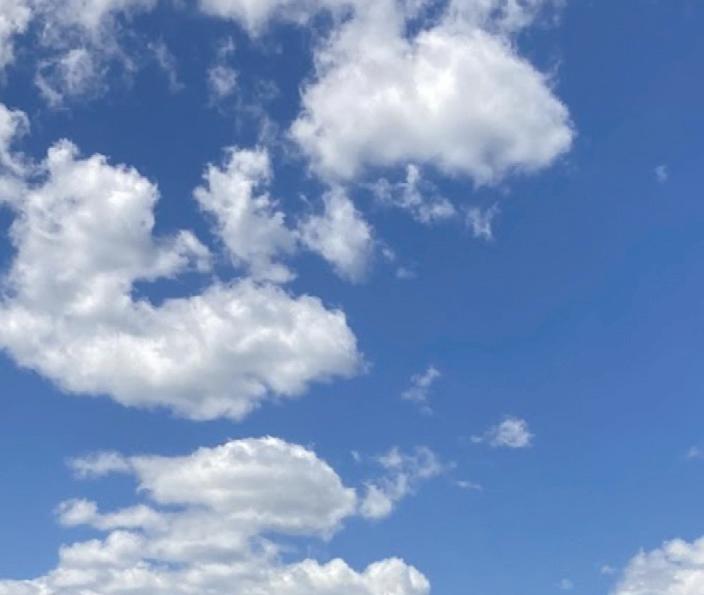
The Breakneck Brook Watershed beaver dam rupture and corresponding flood/debris flow inspired a rapid proposal to map and study the event during late summer of 2021, which continued into the following academic year. First-year student Joshua Harkness ’25 assisted in research project design and mapping efforts in the fall followed by data analysis and written interpretation within the Topics in Research course. Students in
Watersheds followed-up with additional field work, data analysis, and interpretations. We plan to present our findings to ANP personnel in fall 2022.
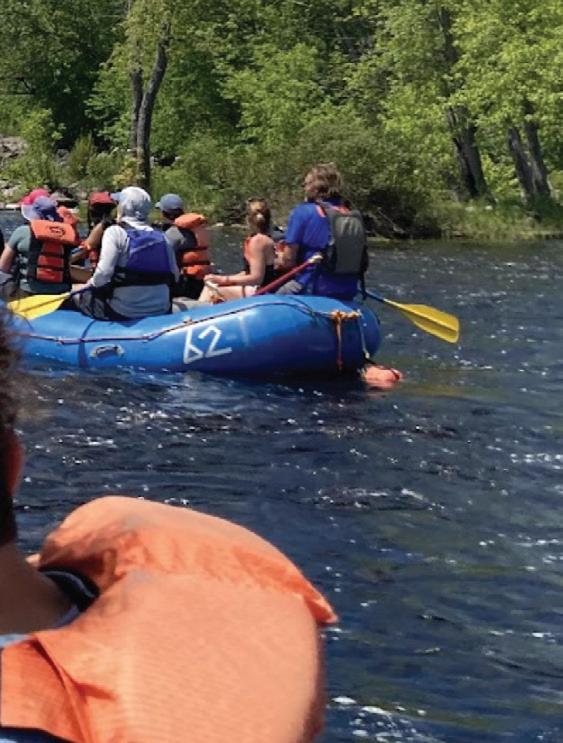

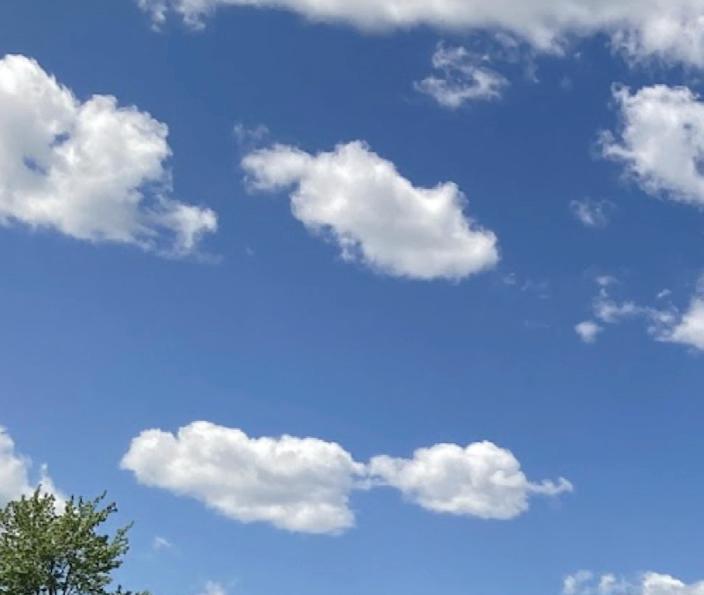
Two other Topics in Research students, Mustafa Khorzam ’25 and Raheem Khadour ’25, analyzed data from sediment cores collected from Little Long Pond and Great Duck Island. Both completed manuscripts articulating the paleoecology and paleoclimate history of this coastal region of Maine.
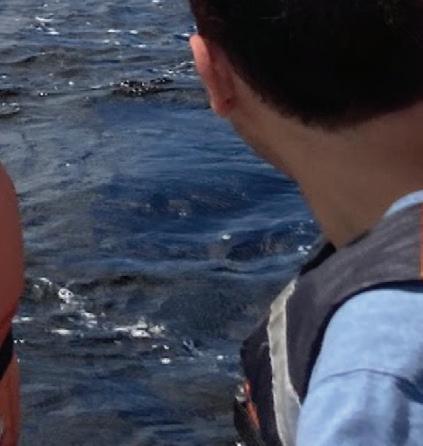

Chairholder: Bonnie Tai, EdD
My courses last year supported the first-year experience, the Human Studies resource area, and Educational Studies, which included a program for students interested in teaching elementary school students, secondary English Language Arts, Life Sciences, Social Studies, or K-12 Visual Arts.
In the fall, I taught a section of the Human Ecology Core Course in collaboration with six colleagues. My section included all of the participants in COA’s College Opportunity and Access program, as well as other first-generation college students and several international students. This program facilitates cohort-building for those students who are underrepresented in higher education and at COA. My module introduced students to some history and philosophy of human ecology; engaged questions we have about the nature of mind, compassion, and self-other relationships; and applied conceptual tools and frameworks to two current, interdependent, national and global phenomena—structural racism and climate change.
Understanding and Managing Group Dynamics served students who are interested in teaching in schools, community health programs, or outdoor adventure education, and those who are interested in facilitating community decision-making processes, such as in municipal planning, transforming food systems, and organizational governance. Curriculum Design and Assessment is a required course for secondary education candidates, and also attracts students who wish to design curriculum for community education and senior projects. These courses engage students in questions such as “What is the nature of mind, and how do we study it?” “How do we embrace and effectively navigate the tensions and paradoxes inherent in groups?” And “What does
it look like when a learner understands a concept in the way an expert would, beyond parroting a definition or explanation?”
I also co-directed two senior projects: Isabel Messerschmidt ’22’s “The Meditation Labyrinth” and Levi Curtis ’22’s “A Guide on SelfAdvocacy and Self-Care for Students with Disabilities.” The former included research on contemplative practices, guided meditations, and labyrinth design; the writing, audio production, and online publishing of guided meditations facilitating compassionate relationships with self, others, and the natural environment; and the design and construction of a labyrinth on the COA campus. The latter included research on student, parent, educator, and expert perspectives on adolescents’ experiences of their disabilities and effective practices for managing disabilities resulting in an online guide consisting of five chapters and appendices on disabilities, ableism, self-care, self-advocacy, and intersectionality. This guide addressed adolescents directly on ways they can make sense of their experiences within the larger context of disability activism; effectively communicate with family, friends, teachers, and caregivers; and track and monitor symptoms.
COA trustees and alumnx established this chair in 2011 to honor long-time COA professor and academic dean, Richard J. Borden.
Together with COA alumnx Abby Plummer MPhil ’16, Sarah Kearsley MPhil ’16, and Beth Heidemann ’91, I co-authored “Trust: Foundation to Passion-Drive, Student-Activist, and

Community-Engaged Learning,” which will be published as a chapter in C. Schlein and S. Crump (eds.), Active and Engaging Classrooms: A Practical Exploration, forthcoming from Information Age Publishing.
Funds from the Borden Chair allowed me to participate in the Center for the Contemplative Mind in Society’s 2022 summer session on “Contemplative Pedagogy.”
For details about my work as Associate Dean for Learning and Teaching and Co-Director of Educational Studies, please refer to my annual reports on the second year of a Davis Education
Foundation grant, the College Opportunity and Access Program, and the Educational Studies program.
Chairholder: Suzanne Morse, PhD
In Silent Spring, Rachel Carson took us back to another “road less traveled” over 60 years ago with such skill and urgency. Yet we are still zooming down the superhighway of high input agriculture with minor tweaks here and there. The 2022 Vegetable Yearbook Guide speaks of the challenges of high fertilizer and “crop protection” prices due to the war in Ukraine, and suggests to use less, “but not too much less,” or their margin of profitability may be entirely lost. In this year of ongoing hunger, pandemic, and war, I have returned to the question of the gap between what we know and what we do, as we move forward in our shared future trajectory.
Between 1998–2007, many donors contributed to the establishment of this chair honoring the renowned marine biologist, conservationist, and author of SilentSpring.
Courses taught in the academic year 2021-2022 covered the following themes: farming systems analysis in agroecology, the exploration of seed as the foundation for food security and food sovereignty, the preservation and transformation of food stuffs with the power of microbes, and how to produce a wide array of vegetables and fruits with a focus on maintaining and building soil fertility. In addition, 18 students and I dove deeply into the question of how flowering plants—which are comprised solely of leaves, stems, roots, and meristems—can look so different from each other. We started with the variation in the morphologies of seeds and ended the term with our noses buried in lilacs and apple blossoms.
I also co-taught independent studies with Rich Borden on medicine
and myth, and with Anna Davis and David Levinson on organic food production. I also advised two senior projects focused on sustainable agriculture in the Yucatán and Laos.
During the year, I was a member of the Campus Planning and Building Committee, the Landscape Subcommittee, and the Farming and Food Systems Working Group. Together with other faculty, we organized a teach-in at the onset of the conflict in Ukraine. Much of my summer work was invested in organizing and maintaining the Community Organic Garden, participating in the job search for the new manager of Peggy Rockefeller Farms, and contributing to the COA Summer Institute with a focus on food.
I continue to be on the board of the Native Gardens of Blue Hill, volunteer for Maine Organic Gardeners and Farmers Association, and to advise graduate students at the Norwegian University of Life Sciences. It is with deepest gratitude I thank the funders who support the Rachel Carson chair in memory of her enduring wisdom and insight. The primary expenditures for this year covered herbarium expenses, conference costs for students and faculty, the purchase of equipment and books, greenhouse maintenance, and travel expenses.
Thank you, Mr. Cox and friends, for the honor and pleasure of serving as the T.A. Cox Chair in Studio Arts for year two!
Last fall, I taught two courses that I teach every year:
• Making Art: Effort, Resilience, Persistence —an advanced course bringing together student artists from various disciplines to spend the term developing their own body of artwork while learning about being an artist after college. Students had virtual visits with professional artists and those who support artists through curation and arts administration in museums, foundations, and the like.
• 4-D Studio —a studio class in which students create digital videos, sound art and performance art, all based on themes of time. The course hosts faculty guests who discuss readings and ideas about time and literature (Karen Waldron), time and biology and time and philosophy (Heather Lakey), and time and geology (Sarah Hall).
Ashley Bryan puppets (gifted to the college by the Ashley Bryan Center). The film was a project that Ashley was unable to complete before his death, and the students and I used the script and storyboard that Ashley created to shoot the footage which is being edited now.
In the winter, I taught Animation 1, a course exploring animation as a form of creative expression, experimentation, and personal vision. Various techniques were applied, including drawing, claymation, and under-the-camera collage. This course was followed by Animation 2 in the spring, adding skills in rotoscoping, keying, lip syncing and digital composting, and independent project development. In the spring I also taught Art of the Puppet that featured Frogtown Mountain Puppeteers Erik Torbeck ’94 and his brother, Brian Torbeck. Later in the term, we shot a film using the
After over two years in production, The Bloody Room is finished and premiered July 9, 2022 at the Maine International Film Festival. I was an Artist in Residence (remotely) at The Film/Video Residency Program of the Wexner Center, where I supervised the edit. The project was shaped and shot with our fearless team: Pietro Cascia ’22, Leta Diethelm ’20, Gaby Gordon-Fox ’22, Leelou Gordon-Fox ’21, Camden Hunt ’22, Aniruddha Jaydeokar ’23, Sophie Joyce ’22, Simone E. Le Page ’23, Abby Jo Morris ’21, Anna Parsons ’23, Gwen Shope ’21, Danylo Shuvalov ’22, Goya van den Berg ’21, Thule van den Dam ’20, W. W. Disal Lahiru ’22, and Hannah Williams ’23. All were part of the horror film course I taught with Jodi Baker during winter 2020. To this illustrious group we added Ben Nimkin ’08 as a sound recordist. Animation production and music production followed in spring 2020 and fall of 2021.
After more than a year in production, I completed an album with Baltimore recording artist, Linda Smith. It was mixed and coproduced by COA alum and staff member, Zach Soares ’00. A Passing Cloud will be available in early 2023 in vinyl and digitaldownload by indie labels Gertrude and Grapefruit.
I was a visiting artist at HewnOaks for 10 days in late June/early July 2022, and a film I created with Jennifer Reeder, I Like Tomorrow, showed at festivals in 2021–22.
I began chairing the Painting and Drawing faculty search in May 2022, along with esteemed colleagues and students, and look forward to a successful search and bringing on a new faculty member in fall 2023.
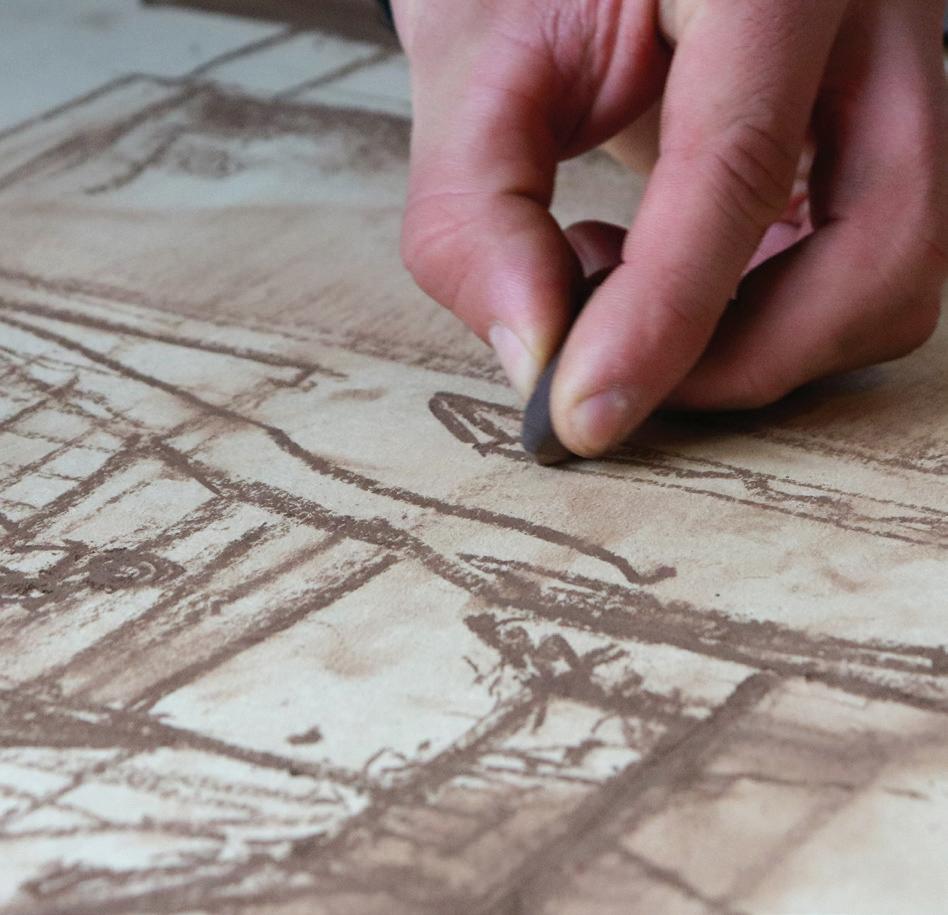
This endowed chair was established by COA trustee Tom Cox and the hundreds of friends, family members, and trustees who gave to the chair after Tom passed away in 2019. Beginning Fund Balance $1,609,209
Return on Investments (269,676)
0
Allocations/Withdrawals (16,000) Ending Fund Balance $1,323,533
2021-22 was a very busy year in terms of both teaching and research. In the autumn, Ken Cline and I co-taught The Great West Course for the third time. The 11 students who signed up for this “monster course” met us in Sacramento, California. We then proceeded by van, foot, and river raft over 7,000 miles from California to Sonora, México, visiting numerous national parks, monuments, and other protected lands along the way. High
points included three days rafting the San Juan River, and getting an exclusive, in-depth tour of the border wall in Arizona.

In the winter, I taught Ecology, Advanced Ornithology, and History of Natural History. In the spring, I taught Biology: Form and Function to 36 first-year students, as well as Conservation Biology —seven courses in all. I also sponsored one senior project and an independent study.

The main focus of my research was once again on Great Duck Island, and in supporting students with their immediate fi eld needs and how to prepare and present their work in professional settings. We had a crew of eight students split between Great Duck and Mount Desert Rock, censusing gulls, petrels, and guillemots, and examining fl edging success in the gulls on both islands. Students from this and last year submitted (and were accepted) for presentations at the Northeast Natural History Conference in Albany, New York. I organized a session at the meeting and presented a paper, “Changes in Nest-Site Selection in a Maine Herring Gull Colony: The View from Great Duck.”
The entire islands crew have submitted papers to either The Waterbird Society’s annual conference in Corpus Christie, Texas or the Association of Field Ornithologists in Massachusetts. I am also a co-author on a paper of the importance of natural history to ecology that has been accepted by the journal Waterbirds.

The 2022 season on Great Duck (funded by the Drury Research Fund) was extremely successful. We extended gull studies to Mount Desert Rock, and a record number of herring gulls were color banded to assist our analysis of their dispersal and survival patterns. In addition, Eleanor Gnam ’23, as part of her senior project, repeated Folger and Wayne’s petrel survey from the 1980s, assessing more than 500 10x10 meter plots for nesting birds. This is the most intensive petrel survey since the establishment of the Alice Eno Field Research Station on Great Duck Island. In spite of the hard work, students were reluctant to leave either island, with some remaining in place through much of August. We were very concerned about the rise of the avian infl uenza virus, which has decimated seabird colonies in Europe and Canada. Happily, after a few mortalities, deaths on Great

Duck Island and Mount Desert Rock leveled off. Specimens were collected for subsequent analysis. As always, I am deeply grateful to the donors who make our work possible, the students who do the hard work, and our captain and crew who keep us safe on the water and act as our bridge to the islands.
This endowed chair and research fund were established in honor of the eminent ecologist and former research director of the Massachusetts Audubon Society who died in 1992. Bill lectured on evolutionary biology and ecology at Harvard University for over 20 years before joining the COA faculty in 1976.
Beginning Fund Balance $1,906,072
Net Return on Investments (310,455)
Contributions 250
Less Allocations/Withdrawals (76,000)
Ending Fund Balance $1,519,866
W.H. DRURY RESEARCH FUND
Beginning Fund Balance $402,200
Net Return on Investments (65,513)
Contributions 0
Less Allocations/Withdrawals (16,000)
Ending Fund Balance $320,687
coa.edu/support13
WILLIAM H. DRURY, JR. CHAIR Left: Herring gull. Right: Great Duck Island teamDan and Polly Pierce established this endowed chair in 2000. Dan Pierce was a COA trustee, grandson of landscape architect Charles Eliot, and great grandson of Harvard President Charles William Eliot.
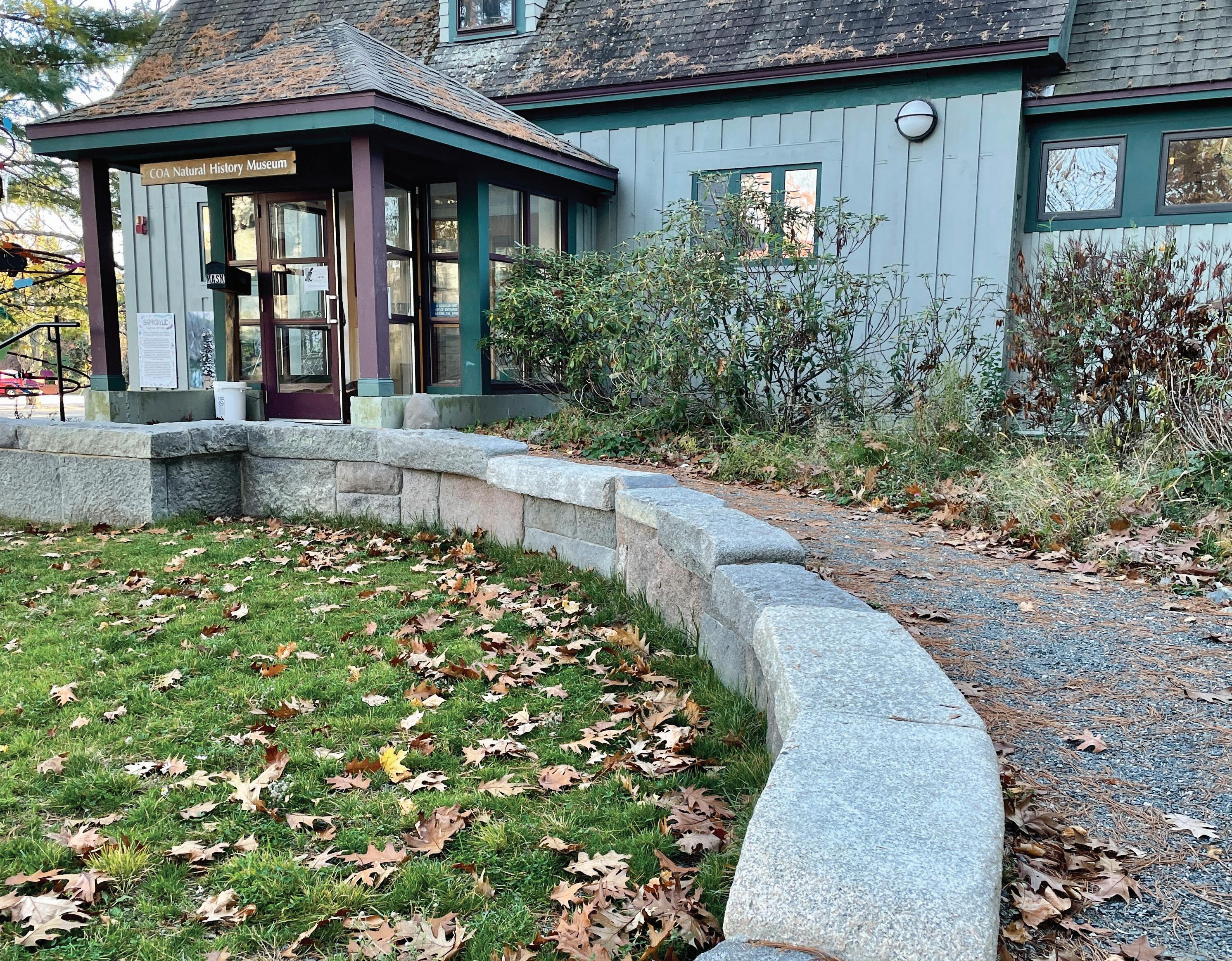
Submitted by: Shawn Keeley, Dean of Institutional Advancement
At the end of the 2020-21 academic year, Isabel Mancinelli, COA’s first Charles Eliot Chair of Ecological Planning, Policy and Design, retired after a remarkable 31-year tenure as a COA faculty member. The college is currently searching for the next chairholder and faculty member who will carry ecological planning, policy, and design forward.
Beginning Fund Balance $2,381,816
Net Return on Investments (391,239)
Contributions 120
Less Allocations/Withdrawals (95,000)
Ending Fund Balance $1,895,696
Some of the more exciting developments over the course of the 2021-2022 academic year were the acquisition of 14 new housing units in the town of Bar Harbor, 12 of which will house COA students and two of which will house faculty or staff. Further, I worked to support the process of fi nishing the Mount Desert Center in Northeast Harbor and served on the committee collaborating to build the new dormitory on campus.

Beyond the issue of housing, I have partnered with David Gibson, the COA director of energy, to transition the school off the use of fossil fuels as quickly as possible. COA has a stated goal of being fossil fuel free by 2030. Over the course of the 2021-2022 academic year, COA moved 12 of the newly purchased off-campus units away from the use of fossil fuels. Additionally, the primary residences at both farms (Peggy Rockefeller and Beech Hill) were transitioned off the use of fossil fuels, as were a number of on-campus buildings (Studios 5 & 6, Peach House, Cottage House, and Davis Carriage House).
I continue to chair the Personnel Committee and lead the
The Andrew S. Griffi ths Chair was one of nine chairs created during the Broad Reach Capital Campaign. The endowed fund was established in 2018 by COA’s board of trustees to honor Andrew “Andy” S. Griffi ths, the college’s long-serving and wellrespected administrative dean who served for more than 15 years
budget-setting process. Additionally, examining the condition of campus buildings and developing a facilities condition analysis has come into focus for the offi ce, as has supporting the IT department in refreshing the information infrastructure here at the college.
The 2021-2022 academic year was busy one, and the 20222023 academic year promises to be so as well.
Beginning Fund Balance $585,102
Net Return on Investments (100,311) Contributions
18,251
Less Allocations/Withdrawals (8,000)
Ending Fund Balance $495,043
Solar panels at Peggy Rockefeller FarmsMy first year at COA has been an exciting one. In 2021, COA purchased 12 units of new off-campus student housing. I lined up contractors to air seal, insulate, repair electrical and ventilation problems, and install air source heat pumps and heat pump water heaters in all of them. By March 2022, we had completely transitioned these buildings off fossil fuels.
Peggy and Henry Sharpe established this fund in honor of COA’s fi fth president, David Hales, upon his retirement. Hales led environmental policy and sustainability programs for the US Agency for International Development, and was the fi rst American to serve as chair of the World Heritage Convention.
We also installed air source heat pumps or heat pump water heaters in several campus buildings, which significantly reduced—or in some cases eliminated—fossil fuels for heating. To further improve hot water efficiency, we installed low-flow (1.5 gallon per minute) showerheads in all the on-campus and off-campus housing. These showerheads should save at least 200,000 gallons of water each year, plus all the energy needed to heat that water! Most of these showerheads were installed by students.
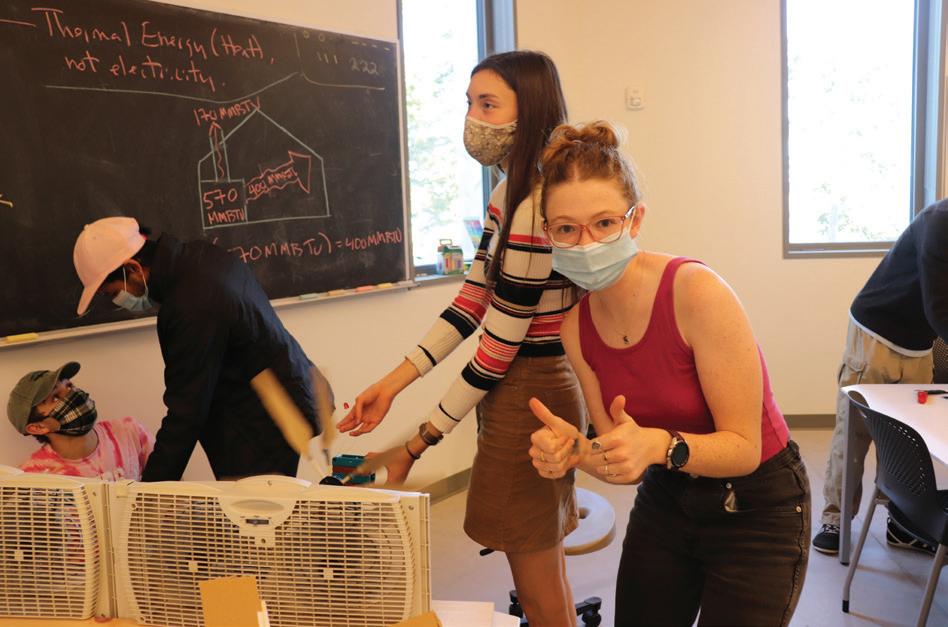
On the farms, we sealed, insulated, and installed heat pumps and a heat pump water heater at 171 Beech Hill Road and the Peggy Rockefeller farmhouse, transitioning both houses off fossil fuels. After completion of these improvements, farm manager April Nugent said to me, “This is the fi rst time the house has been comfortable!”
In the fall, I co-taught the Physics and Mathematics of Sustainable Energy with Dave Feldman, where I led most of the hands-on lab activities. In the winter, I led a course called Green Building Through the Lens of LEED, to introduce students to the US Green Building Council’s Leadership in Energy and Environmental Design standards. I wrote a successful grant proposal to the Maine Space Grant Consortium, which provided $15,000 toward tools and equipment for my spring Building Science and Energy Auditing class. This allowed us to purchase blower doors, infrared cameras, a duct leakage tester, and equipment for combustion safety analysis, all of which was used to teach students how to conduct home energy audits of buildings on campus.
In June 2022, I received a $20,000 donation to purchase a
cellulose insulation blower, box trailer, and various tools and equipment to implement energy efficiency improvements on campus. I will use this equipment for my fall 2023 course, Practicum in Sustainable Energy, in which students will learn how to install vapor barriers, and air seal and insulate buildings on campus. I am hopeful that we can install vapor barriers in the basements and crawl spaces in The Turrets, Seafox, Witchcliff, and the Kathryn W. Davis Center for International & Regional Studies, which will block ground moisture from getting into the buildings.
We are also organizing a workshop as part of the class, in which the campus community will help to build insulating window inserts for all the single-pane windows on campus.
We are participating in a pilot program with Efficiency Maine to install a commercial split-system heat pump water heating system in Blair Tyson dormitory. Efficiency Maine has funded more than half of the cost of this project, including the engineering design.
We signed a contract with ReVision Energy to source electricity generated from a local solar farm for the next 20 years, and have lined up a consultant to help assess and develop plans for transitioning the larger buildings on campus away from fossil fuels. There is still a lot to be done, but it all starts with a good plan.
Chairholder: Sean Todd, PhD
2021 represented our fifth year of investigation into changes in Gulf of Maine whale feeding behavior using Mount Desert Rock (MDR) Edward McC. Blair Marine Research Station as our base of operations. This year we returned to full marine operations, including work at MDR and work aboard M/V Osprey and R/V Borealis. While local whale sightings were scant—a result we believe to be because of the very phenomenon we are investigating—we had good success crossing the Canadian border and working in the Bay of Fundy. We also hosted a German television crew who captured our work in high definition, which was later broadcast on German public television.
Mount Desert Rock was reopened and hosted a number of students who had to postpone their plans the previous year due to the pandemic. A total of 16 students worked at the field station last year, tackling projects that incorporated marine mammalogy, biological oceanography, intertidal science, film, literary writing, illustration, and marine bird ecology. This work yielded three senior projects, as well as a fourth in progress. Three of the 16 took on leadership roles, helping to run the field station.
During the 2020-21 academic year, in addition to directing Allied Whale and overseeing operations at MDR, I also worked on the Islands Committee, the Graduate Committee, and on a successful search committee for a new faculty member in psychology. I assisted with various admissions functions, chaired a successful search committee for a new staff member at Allied Whale, and began chairing a taskforce examining the Yucatán Program.
Over the academic year, I taught a total of 87 students in fi ve classes, one tutorial, and two independent studies.
Classes taught included Marine Mammal Biology, Advanced Studies in Marine Mammalogy, Soundscape (team-taught with Nancy Andrews), Introduction to Statistics and Research Design (team-taught with Susan Letcher), Polar Ecology and Exploration, and Introduction to Oceanography. I also supervised three senior projects. I had an advisee roster of 26 students, including one graduate student. I very much enjoyed returning to an in-person experience versus the remote model used during the pandemic.
COA trustees, hundreds of alumnx, and friends of the college established this endowed chair in 2007 to honor COA’s fourth president and founding faculty member.
Along with two other staff members of Allied Whale, I co-authored two papers:
• Haverkamp, H., Chang, H-Y., Newcomb, E., Doughty, L., Walk, D, Todd, S., Seton, R., Jones, L., and Cammen, K. (in press). A retrospective socio-ecological analysis of pinniped strandings in the Gulf of Maine. Marine Mammal Science.
• Jones, L. J., Stephenson, T. A., Zoidis, A. M. and Todd, S. (in press). Drone Observations of a Mother and Calf Humpback Whale (Megaptera novaeangliae) Pair Synchronous Feeding in the Bay of Fundy, Canada. Journal of Aquatic Mammals.

Over the course of the year, I also presented to local schools and libraries, and conducted many interviews with the press. In part this was spurred by my work as part of a newly-formed consortium of concerned Maine scientists and citizens raising awareness for the plight of the highly endangered North Atlantic right whale in Maine waters.
Katona Chair funds were used to fund operational costs at MDR, research equipment for Allied Whale, virtual attendance for myself and nine students at the Right Whale Consortium, and to provide salaries for teaching assistants.


Over the course of the year, I successfully raised $160,000 in
grant funds for Allied Whale research and Marine Mammal Stranding Response Program activities.
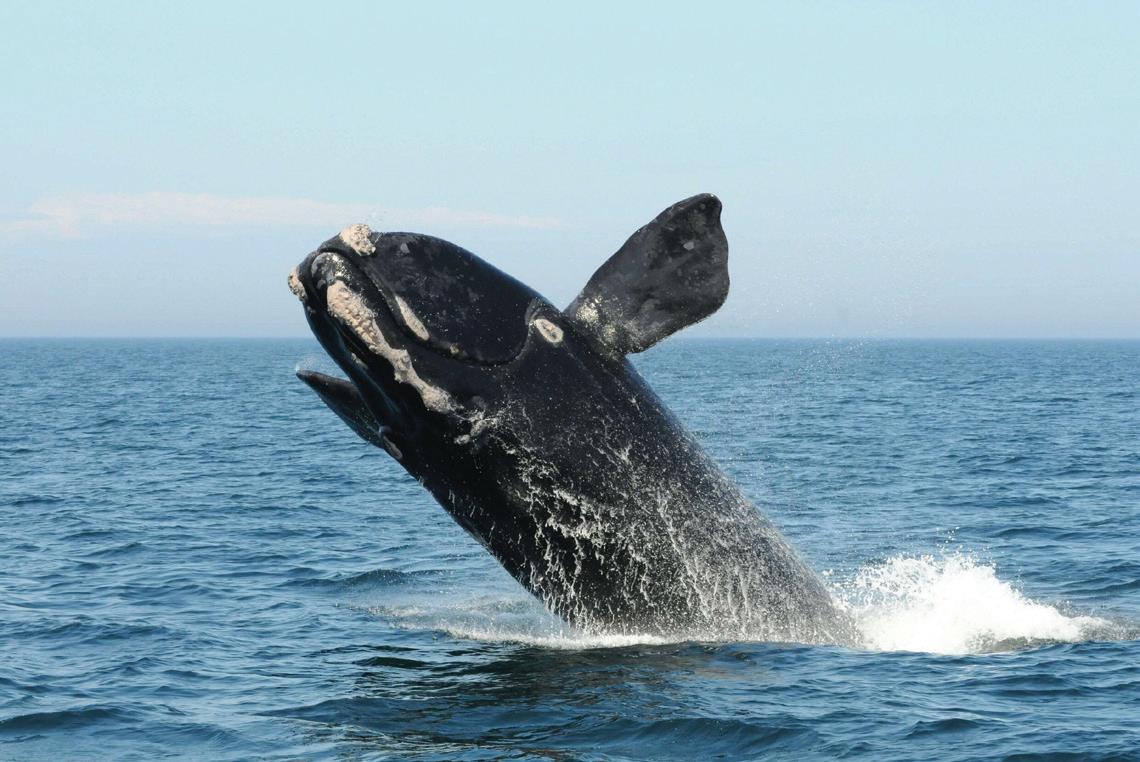
College of the Atlantic felt like a natural continuation of my education and life after Tanzania and United World College of the Atlantic in Wales. COA offered me the opportunity to explore my academic interests, meet like-minded students and educators, and an overall college experience that is different from the mainstream.
DIANA KOMBE ’06
The 2021-2022 academic year was energizing and enriching, despite the ongoing challenges of the COVID-19 pandemic. In the fall, I joined the Human Ecology Core Course to teach a section on philosophy and emotions. I enjoyed collaborating with six of my colleagues and discussing human ecology with the incoming class. I renewed and revised three courses: Humans, Nature, and Philosophy; Animals and Ethics; and Philosophies of Good and Evil In the spring I offered a new course, Buddhist Philosophies, which generated excellent discussions on the concepts of impermanence, non-self, death, and compassion. Overall, I taught a total of 65 students, I read 10 human ecology essays, I directed three independent studies, and I mentored 13 advisees. I directed one senior project on the topic of faith, art, and the tarot, and one project on philosophy, sailing vessels, and voyages.

I am a strong advocate for COA’s participatory governance structure because it facilitates valuable learning opportunities and it encourages community dialogue. In addition to my work with Steering, I served on the search committee for the faculty position in Ecological Planning, Policy, and Design, and I helped to conduct a comprehensive faculty review. This past summer, I joined the Coffee and Conversation series to interview Chase Morrill ’00 about his popular reality TV show, Maine Cabin Masters. Finally, I continued work with the library committee and I offered a faculty perspective for the Fall Fly-In event.
To support COA’s commitment to interdisciplinary education, I collaborated with a number of my colleagues over the school year. I joined Nancy Andrews’ course, 4D Studio, to discuss philosophical concepts of time. Carrie Graham delivered a lecture on insect ethics in Animals and Ethics, and Bonnie Tai visited Buddhist Philosophies to provide an overview of meditation practices and theories. I also invited several members of the Mount Desert Island community to campus. For example, Laura Neal, who runs the True Nature Zen Sangha on MDI, visited Buddhist Philosophies to discuss Zen practices, such as koans.
Along with several of my colleagues, I attended the fall conference, Calming Anxious Brains: Teaching and Treating Students with Anxiety, Trauma, Depression, and Academic Learning Loss. I continue to take advantage of online learning opportunities by attending webinars and lectures hosted by the American Philosophical Association. Inspired by discussions with students in Philosophies of Good and Evil, I am currently working on a journal length manuscript on Simone de Beauvoir, regret, and ethical decision-making. I want to express deep gratitude to the McNally family for endowing this chair and supporting the role of philosophy at COA.
In addition to teaching, I assumed a number of administrative service roles. For example, I served as co-chair of the Steering Committee alongside Ken Cline. The spring was a busy term for governance! COA passed The Landscape Policy and revised the Discarded Resource and Material Management Policy. The Steering Committee also facilitated a number of All College Meetings on important topics such as the DEI strategic plan, the operational budget, and the construction of new student housing.
Chairholder: Susan Letcher, PhD
ecologically informed design to create and protect habitats that support biodiversity in human-modified landscapes.
Two of Elizabeth Battles
Newlin’s children, Lucy Bell Sellers and her husband Peter, and Bill Newlin and his wife Louisa (née Foulke)
Newlin established this chair in 1996 as part of the college’s Silver Anniversary Campaign.
This academic year brought a welcome return to the classroom, though masked; it was wonderful to be learning together instead of staring at little squares on Zoom. In the fall, I adapted Economic Botany from an online to an in-person course. I also taught Biology: Form and Function, an introductory class in organismal biology that is typically team-taught by a botanist and a zoologist. Due to pandemic-related schedule changes, I was the only faculty member available to teach the course in fall, so I polished up my very rusty knowledge of animal anatomy and physiology, as well as inviting zoologist friends for guest lectures whenever I could. In the winter, Sean Todd and I teamed up again to offer Introduction to Statistics and Research Design. As we’ve done in the past, he covered most of the theory and I offered an introduction to R programming. In the spring, I taught Sheep to Shawl, a human ecological investigation of sheep, wool, and fiber arts that is also a transdisciplinary inquiry into pedagogy and epistemology. I advised three senior projects and one independent study, serving a total of 95 students.
My first graduate student, Robert Haskell MPhil ’22, successfully defended his thesis in the spring of 2022. Robert’s work brings together art and ecology, exploring how sculptors can use
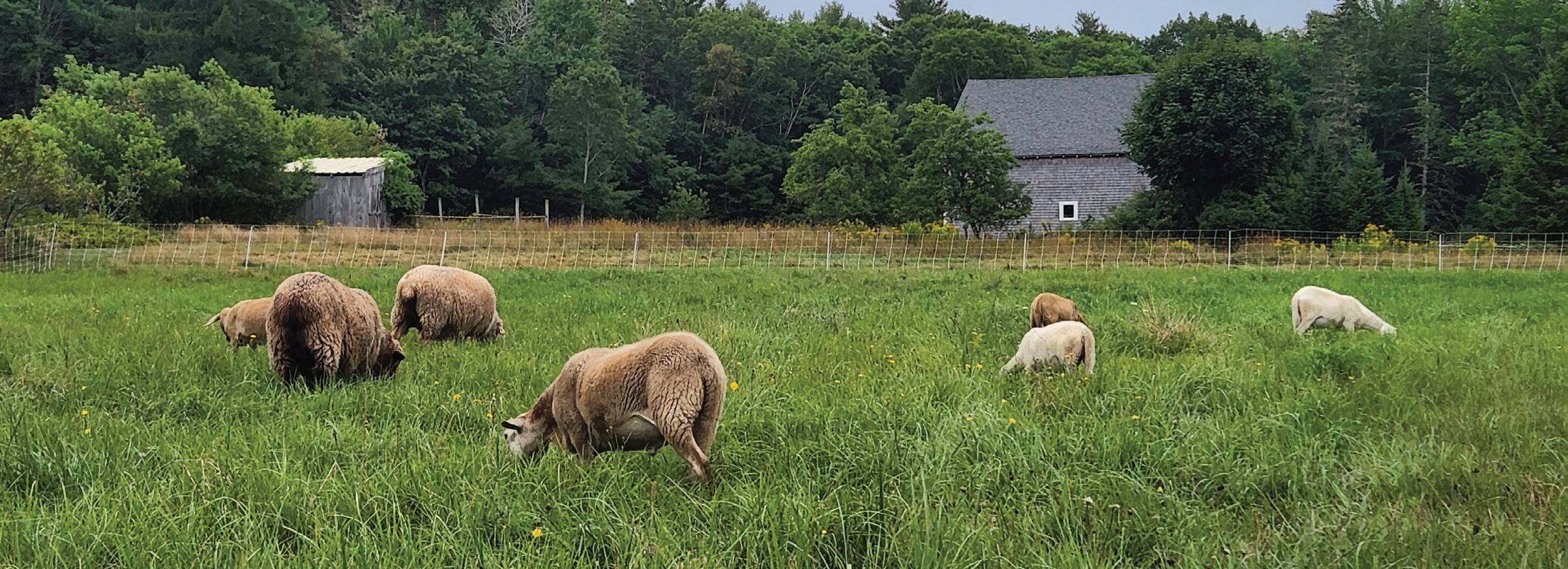
In service to the college, I co-chaired the Diversity, Equity, and Inclusion Oversight, Accountability, and Resource Team (DEI-OAR) with Catherine Preston-Schreck. As specified in the Phase I DEI Strategic Plan adopted by ACM last year, we worked to coordinate DEI efforts on campus and produce a Phase II strategic plan. The team facilitated numerous community-wide meetings, including four ACMs and 14 listening sessions, as well as meeting with all of the people and groups tasked with specific items in the Phase I DEI Strategic Plan. We synthesized all of this input into concrete recommendations for making COA a more diverse, equitable, and inclusive institution. I also continued to serve on Review and Appeals, helping ensure that students could meet their graduation requirements despite pandemic disruptions.
In service to the broader scientific community, I was on the editorial board of the journal Plant Ecology and Diversity until DEI-OAR commitments forced me to step down in March. I continue to serve in the European Science Foundation’s College of Expert Reviewers. In June, I traveled to Costa Rica as a visiting faculty member on a graduate course in tropical field ecology offered by the Organization for Tropical Studies.
Thanks to collaborations with research groups across the globe, I was a co-author on four papers published this year. With Dr. Yi Ding’s group at the Chinese Academy of Forestry, I published a report on habitat specialization in tree species during 10 years of forest succession on Hainan Island (Forest Ecology and
Management). With the 2ndFOR Consortium, an international group of researchers who study how tropical forests recover from major disturbances, I published three high-impact synthesis papers: a study of how tree functional traits recover during succession (PNAS), a multidimensional investigation of how quickly forest attributes recover (Science), and a comparison of the floristic diversity of young secondary forests across Neotropical bioregions (Science Advances).




People tend to draw lines between different subjects. COA is a place where we’re able to erase those boundaries.
Despite the ongoing COVID-19 pandemic, in the 2021-2022 academic year, I was happy to return to in-person teaching. In Transforming Food Systems, we developed theories of change to address pressing challenges in our local and global food systems. A highlight of the course was a visit from a Food Corps services member who came to discuss the problems with Maine’s school food programs. In Social Science Research Methods, guests joined us bi-weekly to present their research and expose students to the numerous methods used by social scientists. In the winter, I co-taught Farm Animal Management with April Nugent, the manager of Peggy Rockefeller Farms. We taught the course entirely outdoors, giving students first-hand knowledge of the hard work of raising animals in Maine’s cold climate. In US Farm & Food Policy, we explored the complex legal and policy issues facing farmers and tracked current issues like the discovery of PFAS on Maine farms. In the spring, the highlight of Bees & Society was a pollination workshop for the second graders at Trenton Elementary School, facilitated entirely by COA students. COA students led the children in a pollination game (involving lots of running on the playground) and helped them paint nest blocks for native pollinators. In total, I taught 78 students in five courses, advised 25 students, directed eight independent studies and five senior projects, served on one MPhil committee, and served as a reader for five human ecology essays.
This chair was established in 2008 through the generosity of Polly Guth, a long-term supporter of COA and Beech Hill Farm, and the Partridge Foundation.
After a two-year hiatus due to the pandemic, we were thrilled to bring back COA’s annual Farm Day at Peggy Rockefeller Farms. The event included a meal featuring COA-grown meat and produce, a concert, and farm tours. Farm Day drew the biggest crowd to date, introducing more than 150 students to COA’s farms and the opportunities associated with them.
A rockstar team of students helped me coordinate the Food & Farming Workshop Series, including Helen Poertner ’23, Tanvi Ravi Koushik ’23, Madi Person ’24, Emily Fetter ’24, and Shreya Vinodh ’23. We hosted nine workshops throughout the year serving more than 170 people, on topics ranging from seed saving and carpentry to pasture management and mushroom
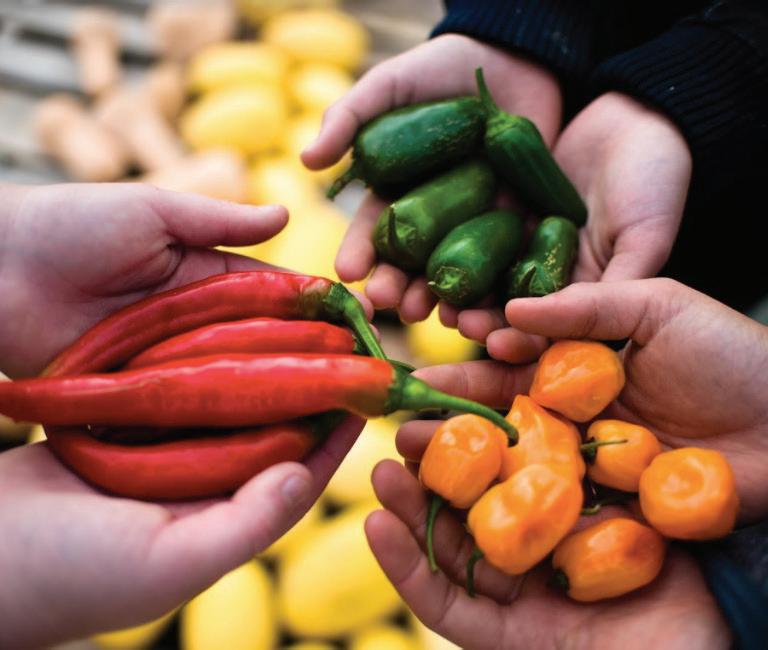
inoculation. We also coordinated a nightly lamb watch at Peggy Rockefeller Farms from mid-January through the end of February. With the help of the work-study crew, we introduced a “Community Fridge” on campus that encourages community members to take what they need and give when they can. At COA’s apiary, we managed five colonies and re-introduced honeybees to the observation hive at the George B. Dorr Museum of Natural History.
I continued to participate in the MDI Food Access Project, a collaboration between Open Table MDI, College of the Atlantic, Beech Hill Farm, Share the Harvest, The Bar Harbor Food Pantry, Healthy Acadia’s Gleaning Initiative, and Island Connections. This summer, two students—Zachary Aiken ’24 and Darcy Kerr ’24—interned with the project, and helped glean and prepare food to feed our community. The generosity of the Partridge Chair fund made it possible to purchase supplies, pay guest speakers, fund research and internships, maintain the apiary, and more. I am deeply grateful!
I was drawn to COA by the school’s emphasis on sustainability and conservation. For me, it was an opportunity to explore new and different things while experiencing life on a campus that had a high degree of sustainability practices in both the academic program as well as daily campus life.
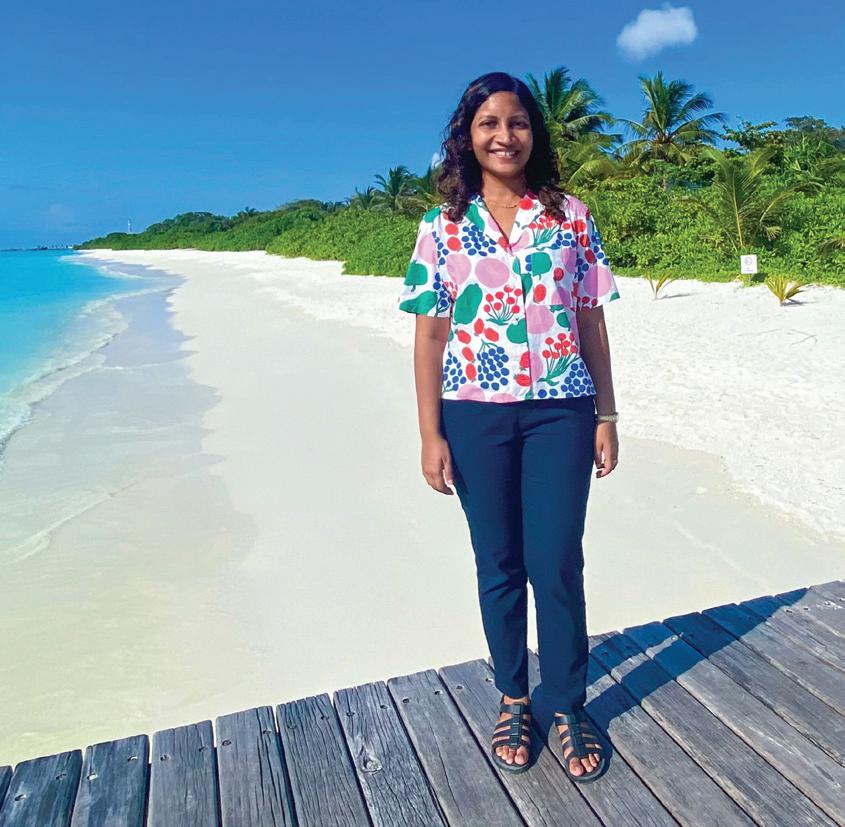
KHADEEJA NASEEM ’10

Chairholder: Reuben Hudson, PhD
Chemistry made COA an exciting place to be during the academic year of 2021-2022. As a relatively new faculty member, I am just starting to loop around to some of the classes I taught in previous years. The familiar topics allowed me to expand class sizes for some of my higherdemand courses including Chemistry, Biology of Food & Drink, and the Organic Chemistry sequence. I also co-taught a new advanced scientific writing course with Sarah Hall, focusing on geochemistry.
Lalage and Steven Rales established this endowed chair in 2020, as part of the Broad Reach Capital Campaign.
The allocation from the Guthrie Chemistry Fund was used as institutional matching funds (for the purchase of lab supplies) for a $25,000 Faculty Seed Grant from the Maine Space Grant Consortium. We also had support from the American Chemical Society ($70,000), and the Davis Educational Foundation ($10,000).
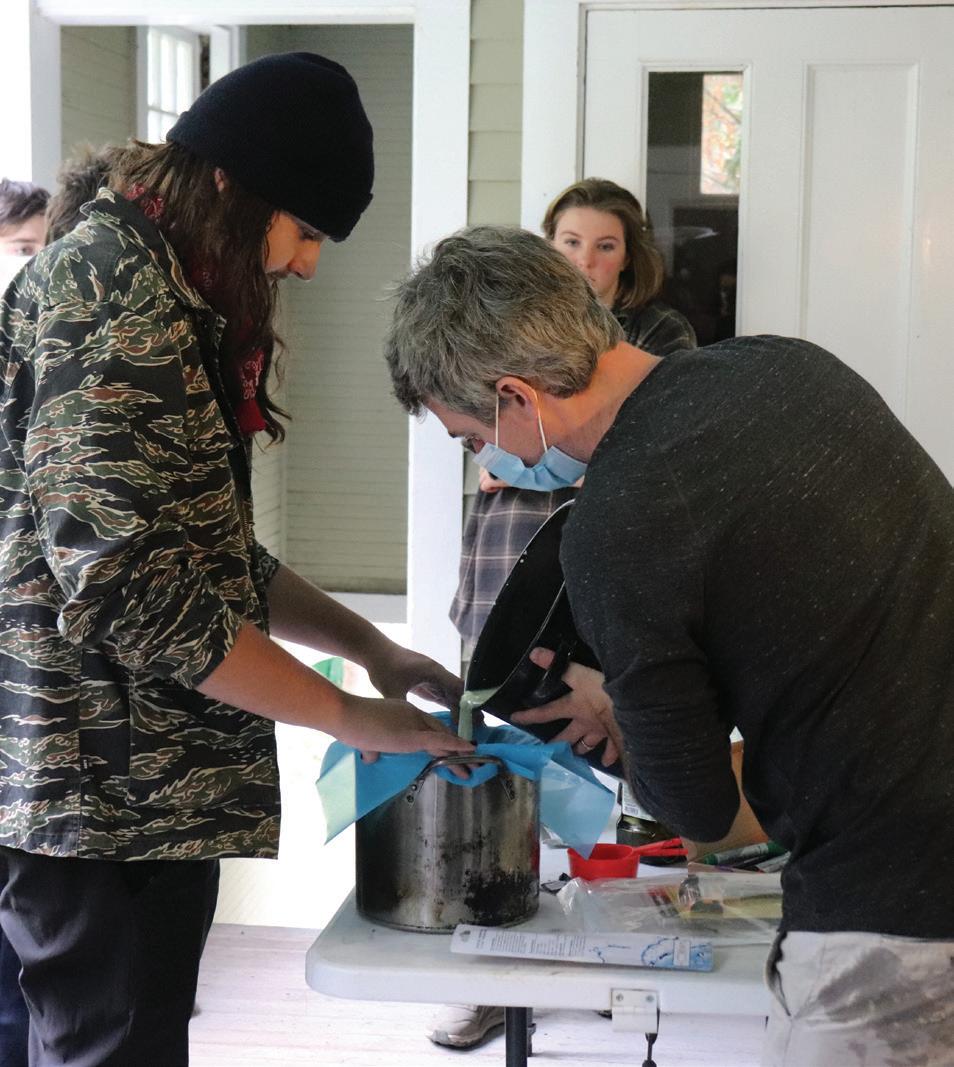

Our small research group is starting to gain more of an international profile. Thiago Altair joined our lab on a 1-year fellowship from his home institution in São Paulo, Brazil. Thiago is spearheading a collaboration between COA and researchers in Brazil, Japan, Germany, and the UK. We’re delighted that Thiago chose COA to carry out his research activities in conjunction with our undergraduate students.
Beginning Fund Balance $348,309
Net Return on Investments (94,681) Contributions 200,000
Less Allocations/Withdrawals (2,000)
Ending Fund Balance $451,628
This year, my work focused on intertidal ecology in downeast Maine, with both an introductory marine biology class (24 students) and an advanced marine ecology class (15 students). Students worked on a variety of projects, learned local species, and collected data with multiple collaborators. More broadly, my seniors worked on whales, corals, the marine environment, and people. I have always loved advising students and had 21 advisees over the last year.

The long-term health of Frenchman Bay was a concern this year, with a very large proposed salmon aquaculture lease under consideration. As chair of the Bar Harbor Marine Resources Committee (BHMRC), I wrote a summary of the problems with the lease for the Bar Harbor Town Council, and helped the college cosign a letter criticizing the potential lease. That lease proposal is not moving forward, but it is unclear if it will become a zombie project and rise again from the dead.
Most of my active research with students involves clam and crab populations in local mudflats. I applied for and received a grant from the Maine Shellfish Restoration and Resilience Fund that funds two COA student research assistants this summer for work on shellfish populations, local clamming practices, and pollution closures for the BHMRC. I’ve also been active in state discussions on the co-management structure of the clam fishery.
I continue to research in Acadia National Park, studying clam population biology and predation and in tidepools, looking at historical changes in algal species. In addition, I joined Hannah Webber from the Schoodic Institute as a science advisor for a community-driven assessment of the ecology of Otter Cove and potential remediation solutions.
I also work with several regional partnerships and state groups, at times representing the college. These include the Downeast Fisheries Partnership, the Downeast Conservation Network, and the Maine Climate Council Coastal and Marine Working Group.
Finally, this year was my last year as the director of the graduate program at the college. I have now turned over that role to Reuben Hudson. I continue to be the liaison with both Mount Desert Island Biological Laboratory and The Jackson Laboratory as part of my responsibilities as principal investigator in the Maine INBRE grant at COA. This past year we had three students doing summer internships at Jackson Lab and we are on track to have nine students this fall. I have also continued to work with the Advancement Office to fund internships for COA students more broadly, and was happy to see that we were able to renew our internship grant from the Seth Sprague Family Charitable Foundation, and along with Reuben Hudson administered Maine Space Grant Consortium funding for student science research projects. Funding student independent work, including internships, is an area I will be focusing on over the next two years.


In fall, I returned to the west with John Anderson and 11 advanced conservation students to study the management, ecology, and culture of western public lands and wilderness. The Great West Course is an integrated set of classes that immersed students in the current issues facing America’s public lands. Unprecedented ecological changes due to climate change coupled with serious political upheaval made this an unparalleled learning opportunity. Through interactions with land managers, scientists, ranchers, wilderness advocates, antigovernment activists, recreation professionals, educators,

David
and tribal people, we sought to understand the changes, attitudes, and confl icts that are embroiling the west. Using immersive learning opportunities such as volunteering in national parks, running desert rivers, and bearing witness to the US-Mexican border wall, the class confronted students with the “wicked problems” facing land managers. The combination of the boundless curiosity and enthusiasm of the students and the generosity of the people who we met along the way produced a rich tapestry of ideas, emotions, and learning.
Back on campus in the winter and spring, I taught Native American Law, a conservation history class, and my international water policy course. In response to student interest, I also designed a new course—the Community-based Climate Solutions Lab. This project-based course worked with the Town of Bar Harbor and local climate organizations to address climate change at the local level. Climate expert and COA alum Laura Berry ’17 co-taught this course (supported by Rockefeller Chair funds). Laura’s technical knowledge, climate planning
Rockefeller established this endowed chair in 2010. Tom Cox, a COA trustee and friend of David and Peggy Rockefeller, established the fund that supports the work of the chair.background, and expertise supported the student group projects. I also directed 10 senior projects and several independent studies related to the Rockefeller Chair. These projects focused on land trusts, public lands, wildlife conservation, animal welfare, and river conservation and restoration.

I continued my research and conservation advocacy work with national, local, and international conservation organizations. Much of my work focused on transforming the national Sierra Club’s efforts to collaborate with Native peoples on conservation in the US. As part of this work, I co-organized a major Sierra Club virtual conference focused on the role of Native peoples in land protection. This conference centered the voices of Native peoples and tribal activists and had approximately 100 participants.
I continued to build the Acadia National Park (ANP)-COA partnership. With support from a Davis Conservation Foundation grant, we were able to place a COA Acadia Scholar intern with ANP for the summer. A new page on the college’s website promotes the unique relationship between ANP and COA, and features successful student collaborations with the park. See coa. edu/academics/research-creative-work/acadia-national-park. I continue to serve as a Secretary of the Interior appointee on the congressionally-authorized Acadia National Park Advisory Commission and also on the board of directors for Schoodic Institute at Acadia National Park.
The Sustainable Business Program remained active during this unusual year. All of my classes were taught in person with a hybrid option.
In the fall, I taught Business and Nonprofit Basics. In this introductory course, students merge theory and practice by extending course concepts into a series of practicums. Class discussion is combined with one- to two-week projects focused on essential business concepts such as creativity, marketing, and financial leverage.
Launching a New Venture took place in winter term, with students shaping venture ideas into opportunities over the course of the term. Student enterprises ranged from community solar to radically local fine dining to fair trade tea, amongst other projects. Students also got to test a prototype of Profit Decoder™, a new web app I’m developing that provides profitability analysis, and allows users to scenario plan without having to understand accounting.
Winter term also included Failure, which I co-taught with Jodi Baker, taking on a topic that often evokes angst and discomfort, and can be paralyzing for many. In this course, students engaged with and explored the dimensions of failure across disciplines, mediums, and industries. Students tracked their progress on a class blog and reflected on talks from artists, performers, scientists, and designers, as well as past students.
This spring, students in the Diana Davis Spencer Hatchery (detailed in the Diana Davis Spencer Hatchery Fund report) developed and refined enterprises in elemental pottery, indie music and art, hospitality, educational tourism, photography, grocery, and fair-trade tea. Approximately 65 people from around the world attended the live Hatchery Expo over Zoom, where students presented overviews of their work at the end of the term.
Several students had notable accomplishments as well:
• Taibatou Bintou Adamou Garba ’22’s Hatchery company
Findi Sahel was selected as a semi-finalist in The Draper
Competition for Collegiate Women Entrepreneurs, a prestigious national competition hosted by Smith College. In April 2022, they competed with their pitch for their startup that brings Nigerien specialty tea products to customers in the United States.
• Mauro José Ramírez Azofeifa ’23 was selected for participation in the Clinton Global Initiative University Class of 2022, and will be advancing his work to promote environmental education and mitigate pollution and water scarcity in Palmichal, Costa Rica.
• Patrick Caron ’23 and Taibatou Bintou Adamou Garba ’22’s Hatchery company Move Free, a consciously crafted outdoor activewear company, was selected as one of 24 companies to participate in the 2022 Maine Center for Entrepreneurs’ “Top Gun” business training program. Move Free also pitched at a Maine entrepreneur showcase event.
Internationally, I remained active in the academic and business community. I was a lead organizer for the Arctic Opportunity Explorers competition, which challenges students to use the UN Sustainable Development Goals to solve problems in the Arctic. Entries included 58 students from 24 universities and seven countries, and it used my sustainable business model, the Abundance Cycle, as one of its organizing frameworks.
Locally, I held several workshops and participated in groups fostering entrepreneurship in Maine. Sustainable Business Program Manager Kerri Sands ’02 and I were active participants in the Downeast Innovation Network, and in conjunction with Mount Desert 365, we facilitated the Mount Desert Business Boot Camp. Drawing enterprises from across MDI and welcoming mentors from across the state, this event culminates in a livestreamed pitch competition at Neighborhood House in Northeast Harbor.
The year 2021-2022 was one in which I focused on using literature to broaden and deepen understanding of key experiences and historical elements that mark particular identities. In Contemporary Women’s Novels, we read fiction from around the world and explicitly not from the United States, with the aim of considering whether or not there was even such a thing as “woman’s experience” or a “woman’s novel”, and what the implications were of comparing narratives across cultures. Several novels from Africa revealed the challenges of postcolonial gender identities and how entangled those were with matters of class and race; novels from Europe featured questions of gender fluidity; novels from the Middle East focused on emerging feminisms and the realities of war.
Each student read an additional contemporary (post 2000) novel of their own choosing and shared knowledge of that novel and its narrative elements with the rest of the class as we returned to the question of whether narratives are gendered and if so, how. At the same time, I taught a college seminar based in US literary history and its human ecology. City/Country: US Literary Landscapes 18601920 involved substantial work on writing and met the college’s writing requirement, while the fiction read covered endemic and formative US issues of race, ethnicity, religion, gender, region, and class. Students were able to see how much insight literary history could provide them into contemporary issues, as well as to discover fictional treasures from before their time.
Winter term 2022 featured my commitment to a new course, Contemporary Black Writers, that examined a selection of both male and female authors from Africa and its diaspora. In this course
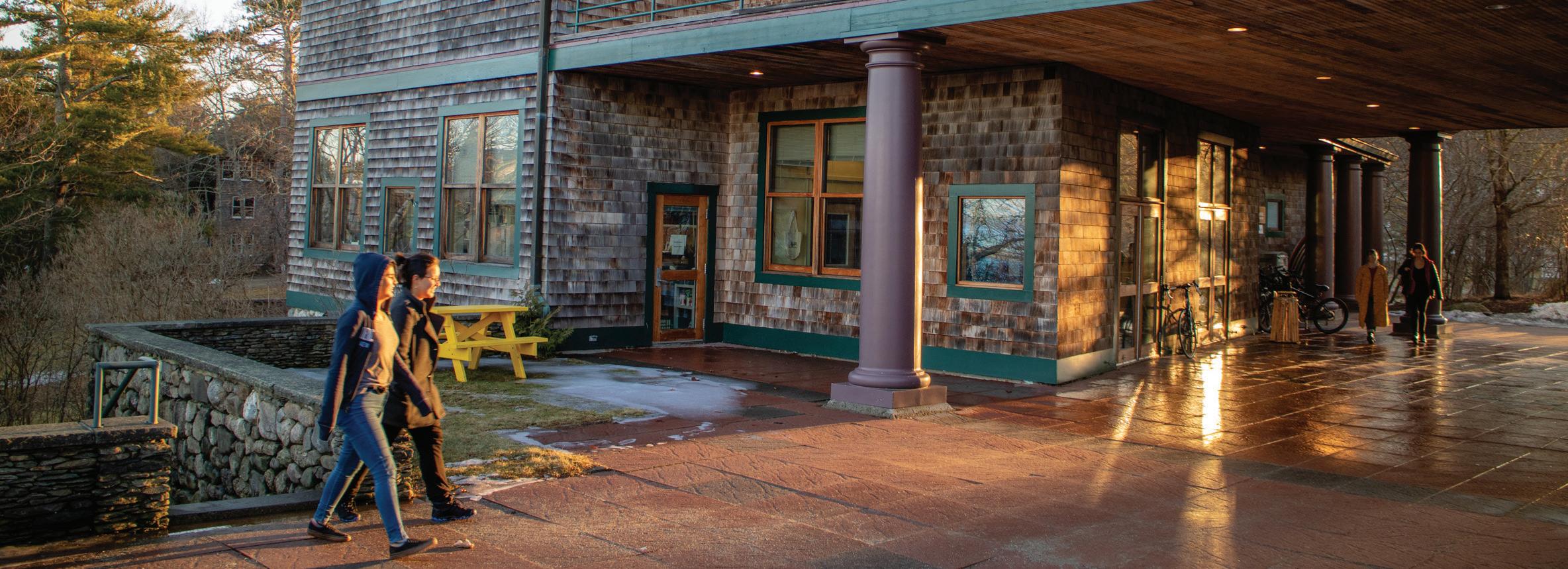
as well, issues of gender, race, and class were prominent, along with questions of the effects of colonialism, not only historically, but in terms of changing and innovative artistic traditions. I also returned to Literature, Science, Spirituality, a class that traces the western literary representation of science in such a way as to highlight assumptions about gender, race, nation, and class, and how they have affected ideas of scientific truth. It was a rewarding and challenging teaching year, working within the constraints of the pandemic, and a pleasure to be back in the physical classroom with students.
During the year I also sponsored and was involved with several senior projects in the Women’s Studies area: an examination of narrative and quilting in the African-American tradition, a study of women and water entitled “Fluidities,” and an exploration of Maine landscapes through the human ecology of clay that featured experimentation with the region’s Presumpscot clay. All three senior projects, as well as the others I advised on, showed deep sensitivity to how gender, race, and class identities interact with deep environmental sensitivities and knowledge.
Beginning Fund Balance $1,854,451
Net Return on Investments (302,027)
Contributions 0
Less Allocations/Withdrawals (74,000)
Ending Fund Balance $1,478,423
William P. Stewart established this endowed chair in 2012 in memory of his daughter, Lisa Stewart Target. Lisa was a remarkably personable, intelligent, and accomplished woman who started Bowen Asia, a successful investment fi rm in Hong Kong, specializing in the Asian economy. She spoke fi ve languages and lived all over the world. Her three children attended COA’s Summer Field Studies program. coa.edu/support29
Clare Stone established this chair in memory of her husband Allan Stone in 2006. Allan was celebrated for his visionary eye which incorporated an eclectic approach and early advocacy of pivotal artists of the 20th century and beyond. Alongside being a leading authority on Abstract Expression, he gave Wayne Thiebaud his fi rst New York show and represented him for over 40 years. He was a passionate collector of anything that appealed to his eye including Willem De Kooning, Franz Kline, Arshile Gorky, John Graham, Joseph Cornell, John Chamberlain, and many less known artists. In addition to modern masterworks and contemporary art, Allan collected tribal and folk art, Americana and important decorative arts, industrial design, furniture, and Bugattis.
Chairholder: Catherine Clinger, PhD
During the month that bridged the summer into the fall term of 2021, I hosted Okwui Okpokwasili, her partner and collaborator Peter Born, and their daughter Umechi as the COA Kippy Stroud Resident Artists for 2021. Their visit was valuable for those who attended Okwui’s event during a misty September evening, a ‘slow walk’ on the east side of Turrets. Okwui led 45 individuals down the slope towards the bay. Three of our students worked closely with the artist to document video ‘sketches’ on the coast. Throughout the year, I worked with members of the board of the Marion Boulton “Kippy” Stroud Foundation to design a new program to expand the Artist Residency model beyond its initial three-year period.
In addition to this work, during my sabbatical, I traveled to Vermont to stay at the home and studios of Wolf Kahn and Emily Mason at the invitation
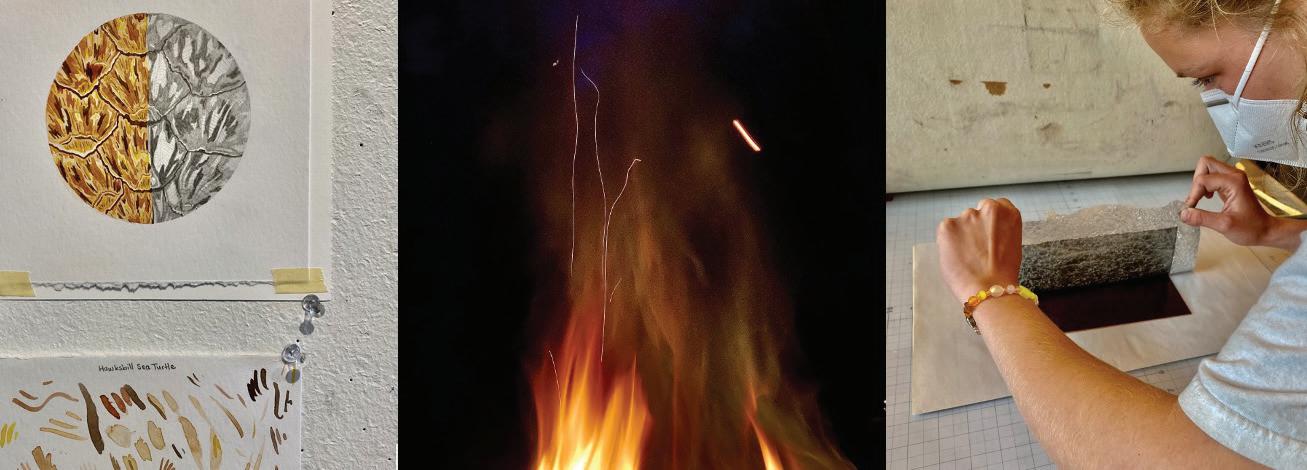
of a friend. I spent time in New York, in archives, collections, in attendance with colleagues at exhibitions of Philip Guston, Alice Neel, Wong Ping, Ed Atkins, and alone immersed in Louise Bourgeois art and writing in Freud’s Daughter at the Jewish Museum. I began a cycle of oil on paper studies of fire behavior, informed by the many hours spent around burning circles with friends and family.
My teaching concentrated on core courses that I offer in the print and drawing studios. Spring 2021 brought the joyful return of one of my hallmark studios here, Drawing Mineral and Botanical Matter in the Forest of Maine after the pandemic hiatus. The class read works by Barry Lopez, A. S. Byatt, Su Shi, Helen Macdonald, Wangari Maathai, Jean-Luc Nancy, and others while learning to see while they draw. The printmaking studio was hopping during the winter and spring terms. Nati Rijo De Leon ’23 assisted me in all matters of relief and intaglio, producing their own excellent work as well. I had the pleasure of supervising the senior project of Gaby Gordon-Fox ’22, which included ceramic work, chine-collé etchings, and a handcrafted series of pamphlets. Gaby has been invited to work at the Frans Masereel Centrum in Kasterlee, Belgium in winter 2022—a wonderful reflection on the strength of nuanced work in the studio.
Along with teaching and advising, my professional work over the past year focused on two major efforts: assisting the nascent Bar Harbor Student Housing Cooperative (BHSHC), and returning to México, to conduct research both on recent economic development trends of the Yucatán Peninsula and on the economics of the henequen fiber industry.

to solidify their financing, find a suitable property, and educate the COA community about the benefits of housing cooperatives.
David and Robin Reis, along with dozens of COA trustees, staff and faculty, established this endowed fund in 2019. Cody van Heerden, MPhil ’17, was a trustee who passed away in 2018 at the age of 58 after a short battle with ALS.
Cooperation and cooperatives are a major focus of my research and policy work, so I was very excited when a group of students became interested in addressing the lack of affordable rental housing on Mount Desert Island by starting up a student housing cooperative. Many of the dozen-or-so students involved in the effort have taken (or are taking) my Economics of Cooperation, Networks, and Trust course, and it was thrilling to see concepts and practices from that course being expanded upon and put into action by students. The students led the way on this project, however, and I remained largely in the background, advising and encouraging as needed. The group presented their ideas for a student housing cooperative to the COA Board of Trustees at the fall 2021 meeting, and became incorporated as the nonprofit BHSHC in 2022. The group was very successful at initially lining up financing for real estate purchases, and came very close to buying property in May 2022, and they continue their efforts
Having taken students for trimester-long experiences in Yucatán on four separate occasions, used Yucatecan agriculture as a case study for a publication in Ecological Economics, and used professional development funds to travel to the region on several other occasions, I am no stranger to the Yucatán Peninsula, and all of these experiences have been particularly vital in shaping my teaching on economic development. But somehow, 10 years had passed since my last trip to the Yucatán, and I felt it was time to return. In addition to assessing and evaluating the continuing evolution of economic development in Yucatán and Quintana Roo, I also decided to take a closer look at the economic history of the henequen fiber industry that boomed around Mérida around the turn of the 20th century, as my previous work on the peninsula had focused on contemporary environmental and economic sustainability. This was a very productive activity, as the industry is a poignant case study of monopsony, the development of institutional structures (such as debt peonage) in the interest of extremely harsh labor exploitation, and elite resistance to revolutionary change. I’ve subsequently incorporated or enriched these concepts in several of my courses. One can read about these things in books (and I certainly did that), but there is no substitute for being on the ground, at the fields and haciendas and factories where these things happened, and I am extremely grateful for the Cody van Heerden Chair in Economics and Quantitative Social Science in supporting these endeavors.
During the 2021-22 academic year, I undertook the following projects in the areas of teaching, community service to the college, research, and scholarly work: Working closely with Anne Kozak, I reconfigured my long-running course Ecology: Natural History as a writingfocused college seminar course for first-year students, which included team-teaching this revised offering with Anne. The goal was to meld handson field instruction in regional ecology with proficient writing to foster effective science communication. We both felt that our pedagogical approach in this course resonated strongly with students based on their progress throughout the term and end-of-term course evaluations.
Kim and Finn Wentworth established this endowed chair in 2019 as part of the Broad Reach Capital Campaign. When establishing the chair, Kim said “We need to inspire and equip future generations to be able to improve some of the conditions we face. We want to address the legacy issue: we, the baby boomers, may have recognized some of the problems early on, but we didn’t do enough.”
In addition to my regular duties on the Academic Affairs Committee and the Museum Committee, I agreed to serve on a task force commissioned by Academic Affairs to examine past policies and practices associated with the college’s expeditionary programming. As part of my participation in this process, I joined NAFSA: Association of International Educators in order to use national standards as a benchmark for any future recommendations from the taskforce.
Over the last academic year, I supervised two senior projects on amphibians with different foci that represented partnerships between COA and Acadia National Park (ANP). A senior project by Emma Damm ’22 quantified the migratory patterns of spring breeding amphibians across a park-owned road, the first ever study of this nature conducted in the park. Her findings will inform future management strategies by ANP to mitigate amphibian road kill on park roads. In conjunction with this senior project, I served as consultant and reader for an ANP grant proposal, “Assess Amphibian Road Mortality and Develop Management
A second senior project, by Jasper White ’22, continued work associated with my ongoing study of salt tolerance in a coastal population of salamanders. With encouragement from ANP Wildlife Biologist Bik Wheeler ’09, Jasper implemented a new system of tagging salamanders which allows for the tracking of individuals of this species during and between breeding seasons. His efforts in uniquely marking over 200 salamanders represents a new phase of fieldwork that broadens the range of hypotheses that can be tested on this population.
Lastly, I was co-author with Charney, N. D., J. A. Tunstad, G. Lattig, and W. Reason on “Ambystoma maculatum: predation. Herpetological Review 53:274-275,” a natural history note published in 2022 that described predation on spotted salamanders by barred owls. I also was commissioned by the editors of the new edition of Maine Amphibians and Reptiles to write revised species accounts for two native anurans, Hyla versicolor (gray treefrog) and Pseudacris crucifer (spring peeper) for an upcoming publication. Finally, I submitted a manuscript titled “Coastal Saline Pools as Breeding Habitat for spotted salamanders (Ambystoma maculatum)” to Northeastern Naturalist, which I co-authored with seven students who enrolled in Applied Amphibian Biology during the 2021 spring term.

Beginning Fund Balance $1,153,601
Net Return on Investments (199,754)
Contributions 270,000
Less Allocations/Withdrawals (26,000)
Ending Fund Balance $1,197,847
Response in Acadia National Park,” submitted to the Regional Block Allocation SCC.This past academic year started off with a bang in October of 2021 when COA got the results back from its participation in the national NSLVE study of student voting participation. This was the first year we had taken part in the program, and we were floored to hear that COA had tied with two other schools for the highest undergraduate voting percentage rate in the nation. An astounding 85.1% of voter-eligible COA students voted in the fall 2020 election! That is nearly 20 points higher than the national average. It also marks a 14-point increase over COA’s voting rate in the previous 2016 presidential election. While I personally cannot take credit for any of these accomplishments, they absolutely would not be possible without the support that the Wiggins Chair and the Geyelin Fund have brought to the college. Because of the generous donations from our supporters, we have been able to fund dedicated nonpartisan voter education and engagement events throughout the fall, as well as a robust “Get Out The Vote” (GOTV) plan on election day.
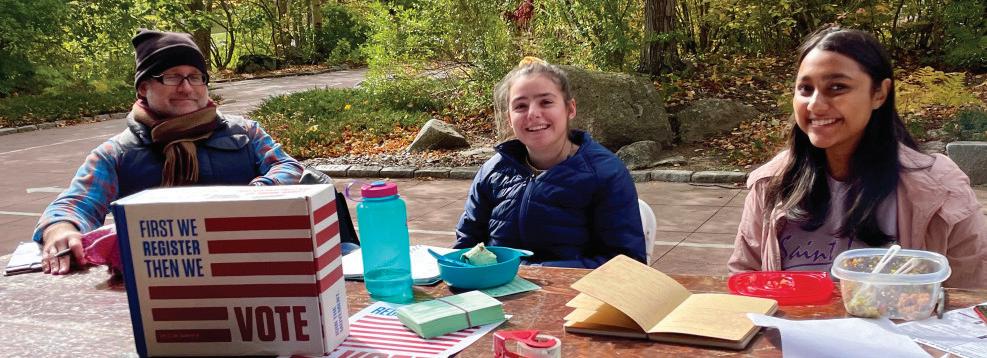
The Wiggins Chair honors the memory of former COA trustee James Russell Wiggins, one of the most respected and infl uential fi gures in American journalism. His career spanned three-quarters of a century, including 20 years as editor of the WashingtonPost. After his retirement, he was nominated by President Lyndon Johnson to serve as US Ambassador to the United Nations. Over the course of his fi nal three decades, he was owner and editor of the Ellsworth American.
To be honest, I don’t expect we will be able to maintain that high level for every election going forward, especially in nonpresidential years. However, my hope is that in the coming years we will be able to use the data we receive to help inform a broader series of initiatives, both in and out of the classroom, that promote student civic engagement in a variety of forms and modalities, beyond just the electoral realm. But being top in the nation was also pretty cool.
My course offerings as the Wiggins Chair were somewhat pared back a bit this year due to administrative obligations in
my role as associate dean for academic affairs. The lingering challenges of the pandemic, combined with the impacts of a series of retirements among the academic staff, meant that a few of us were temporarily taking on additional administrative duties. Despite this, I was truly excited to once again offer the Cold War History sequence (Early Years and Later Years) in fall and spring. These courses had been delayed several times due to pandemic-related space constraints, and there was a great
Another former trustee, Philip L. Geyelin, initiated the idea of the Wiggins Chair and led the fundraising campaign to create it. At the time of Phil’s death, COA wanted to honor the renowned WashingtonPost senior editor and Pulitzer Prize-winning author and extend the project by creating this fund to support programs in government, international affairs, and politics coa.edu/support33
deal of built-up student interest in both. Unsurprisingly, both the fall and spring classes had some of the highest student enrollment numbers I have seen since I began teaching them here at COA. However, I don’t think the interest in the class was due solely to pent up demand from pandemic delays. It was also clear to me that a great deal of that interest in Cold War history came from students who wanted to make connections with events transpiring in Europe today, and especially the ongoing
JAMES RUSSELL WIGGINS CHAIRRussian invasion of Ukraine. Those unfolding events gave the Later Years class, especially as we discussed the fi nal days of the Soviet Union, a timely resonance that I don’t think had always been there for students in previous iterations. My hope is that the students this spring came away with a much deeper understanding of the historical context and how it sets the stage for the events we witness today.

I left COA with the courage to think on my own terms, and also the tools to do so. I realized much later that COA had trained me to be an independent thinker. The thing I appreciate most is that it didn’t just tell me to be bold and present my views, it trained me to do so based on evidence and sound reasoning. It also left this door open for doubt, which has never really closed, and which I fi nd particularly healthy.
MIHNEA TANASESCU ’06
Chairholder: Jodi Baker
It’s great to have the world spinning once again. In 2021-2022 I was fi nally able to travel a little, continuing research into contemporary performance methods, sharing experience and strategies with peers and honing my own physical training practice in the effort to more effectively serve
my students. I taught both foundational and advanced level coursework (for the most part, face-to-face), in collaboration with guest artists, alumnx, and other COA faculty. I also contributed to the governance and function of the college, reconnected with community alliances, and created a real live production for real live people in real time. I never thought that would feel like such a huge deal—but this year it did.
This past year I taught two distinct sections of Movement Training, Advanced Actor Training, and a class I cocreated and co-taught with Jay Friedlander called Failure. Investigating personal, cultural, and socio-economic notions of failure with students made vividly clear how radically the shared discourse has shifted in recent years.
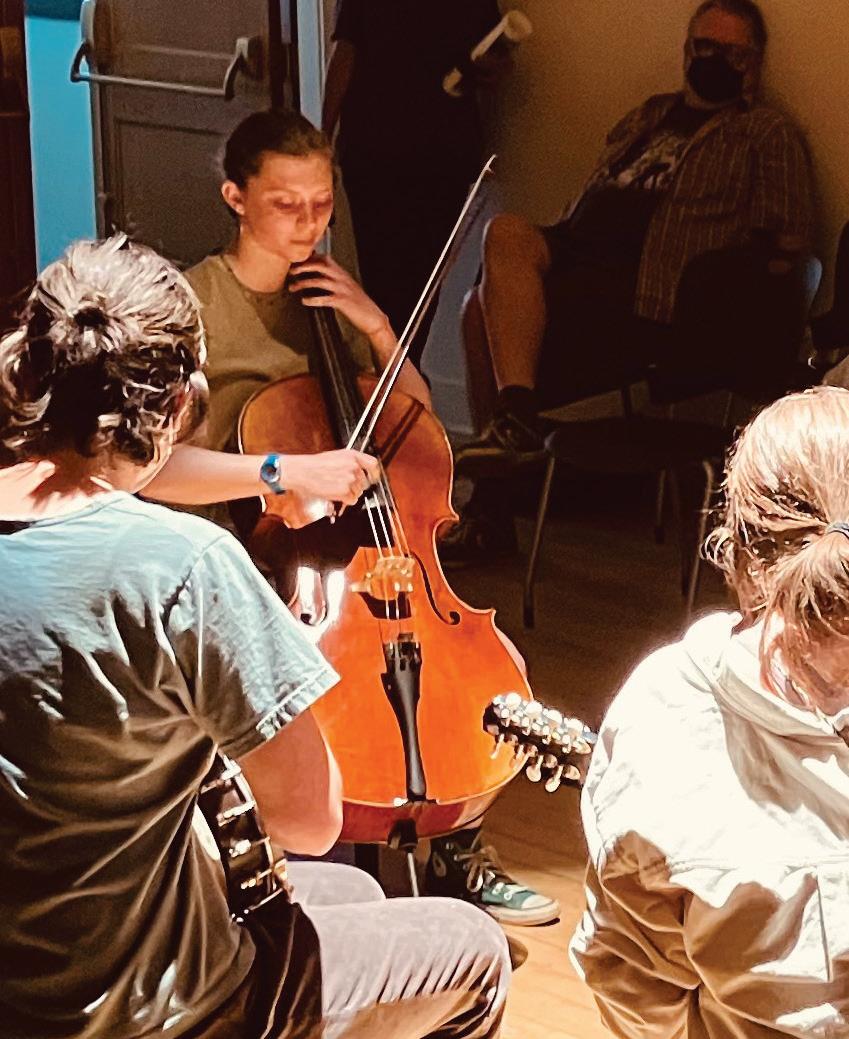

Several anonymous donors established this endowed faculty chair in 2019 as part of the Broad Reach Capital Campaign, in honor of the renowned actors Joanne Woodward and Paul Newman, whose daughter, Nell Newman, graduated from COA in 1987.
Guest speakers included the poet and National Book Award winner Martín Espada; artist/writer Ashley Yang-Thompson; Scientifi c Director of The Jackson Laboratory and COA trustee Nadia Rosenthal; designer and co-founder of Thinknado, John Bielenberg; CEO of Big Box Farms, Jordan Motzkin ’10; and performing artist/activist Isabel Shaida ’19. In the spring, we
Joanne Woodwardproduced and presented a full-length play— One Flea Spare by Naomi Wallace. The show was collectively created and was the fi rst live theater experience at COA in quite a while. It was performed by Liv Soter ’23, Nati Rijo De Leon ’23, Anna Parsons ’23, Alya Kiiashko ’25, and Camden Hunt ’22. Molly Pifko ’22 served as lead dramaturg.
Beyond teaching: I served as academic advisor to 12 students, directed several senior projects, reviewed a handful of human ecology essays, and helped students prepare for internships, graduate school applications, and job interviews. Sarah Hall and I prepared a select group of seniors to present projects to the board of trustees in the spring. I served on the Academic Affairs Committee, a hiring search, a comprehensive review, and assisted Catherine Clinger in managing the logistics for the 2021 Stroud Resident Artist, Okwui Okpokwasili. I have been teaching Okpokwasili’s work for some time and it was a real honor to have her on campus for those few weeks. I completed a second intensive workshop with SITI Company (NYC), continuing an ongoing investigation of Suzuki and Viewpoints training as practical tools for human ecological
study. I also attended the Association of Performing Arts Professionals annual conference, which proved useful in better understanding the impacts of recent global events on regional and national theater.
All this work was made possible by Woodward and Newman Chair funds, the Davis Educational Foundation, and several other intersecting and generous endowments that fuel art and learning at COA. I remain incredibly grateful for the exceptional teaching and learning opportunities these funds provide.

The type of education that you get here forces you to constantly be questioning the things that you’re learning and relating them to other things in your life and in your educational journey. And that’s something that I really value because it means that you’re never taking anything for granted. Your views are constantly open to changing and to growing. And that means that you yourself are open to changing and growing.
PHILÉAS DAZELEY--GAIST ’23
This scholarship was created in 2012 through a generous bequest from Mrs. Brooke Astor to COA, as well as gifts from the Vincent Astor Foundation. It is awarded to Maine students with financial need.
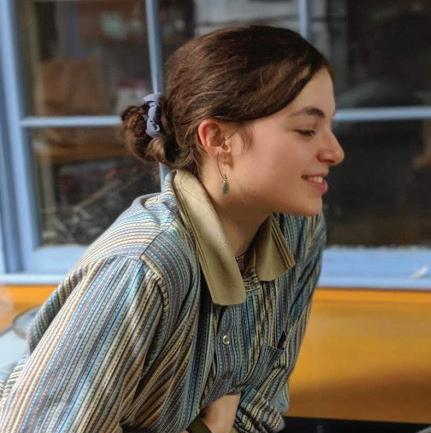
RECIPIENTS: Gabrielle Peñalver Dumas ’23 (Peaks Island, ME), Isabella Pols ’24 (Brunswick, ME), Megan Waters ’23 (Starks, ME)
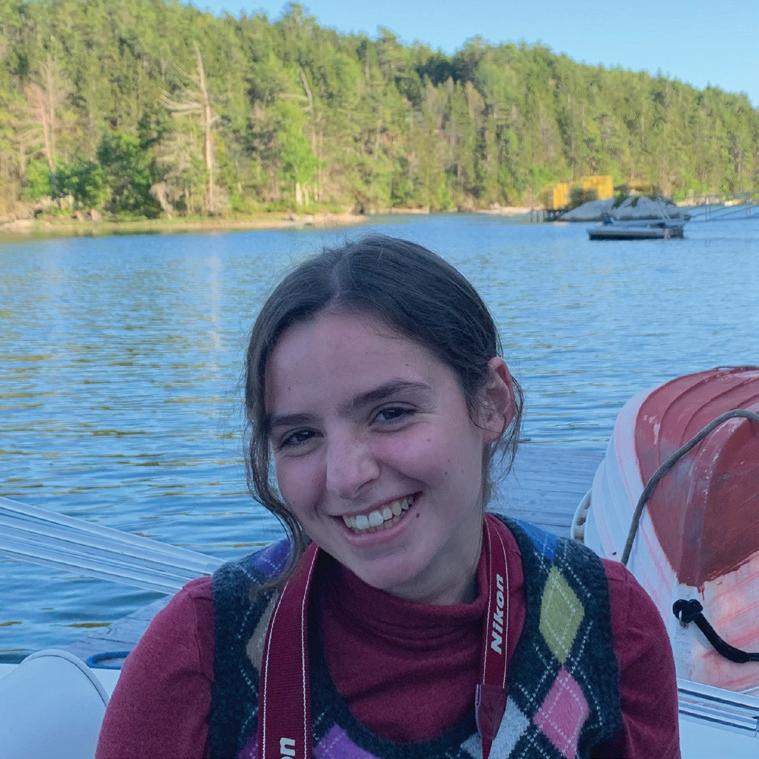
BEGINNING BALANCE: $1,130,471
ENDING BALANCE: $901,358
Family and friends of Christina ‘Tina’ Baker established this fund in 2013 in memory of Tina. After the passing of Tina’s husband, William ‘Bill’ Baker in 2021, the family added Bill to the scholarship name and amended the criteria. This four-year scholarship is awarded to students with financial need with a preference towards first-generation and BIPOC (Black, Indigenous, people of color) students.
RECIPIENT: Ruby DeWilde ’25 (Portland, OR)
BEGINNING BALANCE: $68,890
ENDING BALANCE: $89,840
The scholarship was created in 2008 through a bequest from Sidney and Hazel Bahrt to COA. The four-year scholarship is awarded to a Washington Academy graduate from Pembroke. Depending on COA’s enrollment, the scholarship may also be awarded to other students from Washington Academy or from the greater Washington County community.
RECIPIENTS: Sage Bagley ’23 (East Machias, ME), Levi Curtis ’23 (Princeton, ME), Maggie Hood ’22 (Perry, ME)
BEGINNING BALANCE: $1,106,729
ENDING BALANCE: $866,111
The Bright Horizons Scholarship was established by Bar Harbor Bank and Trust as part of the Life Changing, World Changing Capital Campaign. The scholarship is awarded to local Maine students who are graduates of high schools located in Hancock and Washington Counties.
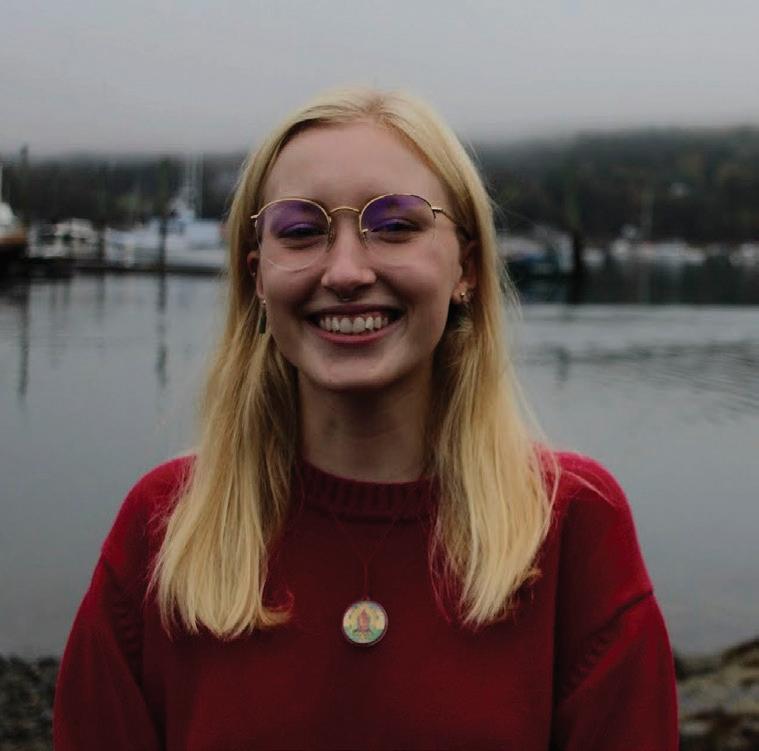
RECIPIENT: Hope Rankin ’25 (Bucksport, ME)
BEGINNING BALANCE: $184,155
ENDING BALANCE: $145,478
This scholarship was created in 2018 by David Milliken as part of an effort to honor family, friends, and public figures and the characteristics David admires in them. This scholarship supports a student working in fields of related interest to the individual honored by the
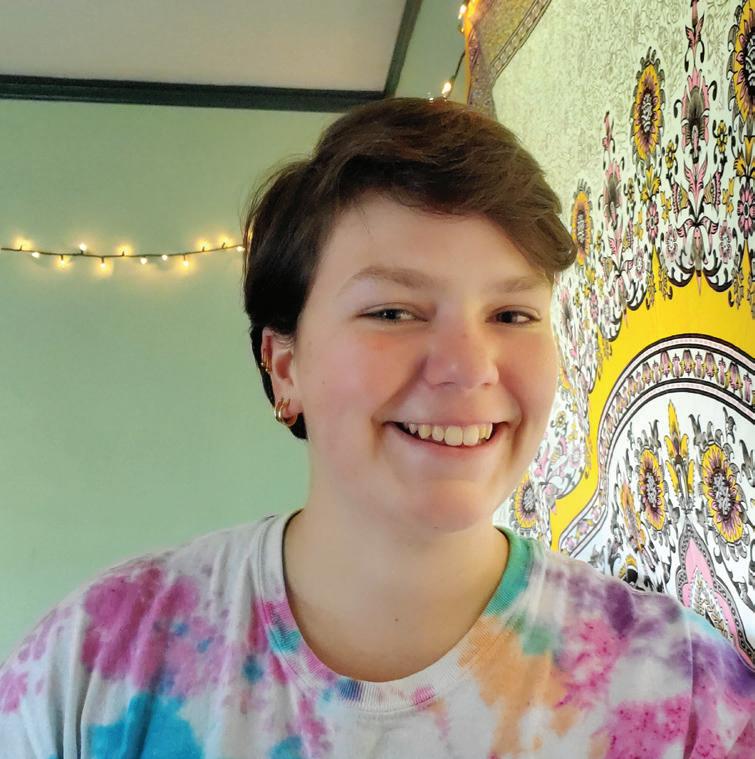
scholarship. Characteristics and interests that speak to the honoree include: oceans, community, craft, sailing, humor, integrity.
RECIPIENT: Sil Kiewiet de Jonge ’23 (Monnickendam, Netherlands)
BEGINNING BALANCE: $136,289
ENDING BALANCE: $109,866
This scholarship was created in 2018 by David Milliken as part of an effort to honor family, friends, and public figures and the characteristics David admires in them. This scholarship supports a student working in fields of related interest to the individual honored by the scholarship. Characteristics and interests that speak to the honoree include: investigation, deep deeing, dot connecting, exposing of toxins in environment, and revealing the destruction of nature and natural habitats.

RECIPIENT: Isi Muñoz Segovia ’22 (Madrid, Spain)
BEGINNING BALANCE: $136,289
ENDING BALANCE: $109,866

The scholarship was established in 2004 in memory of Rebecca Clark, a COA graduate who lost her life in the 2004 Indian Ocean tsunami in Thailand. The fund was started with a lead gift from trustee Edward McC. Blair and support from many friends and family of Rebecca. The scholarship is awarded to a rising junior or senior, exemplary in dedication, enthusiasm, passion and scholarship, in the field of marine science and/or marine conservation.
RECIPIENT: Kiernan Crough ’22 (Greenfield, MA)
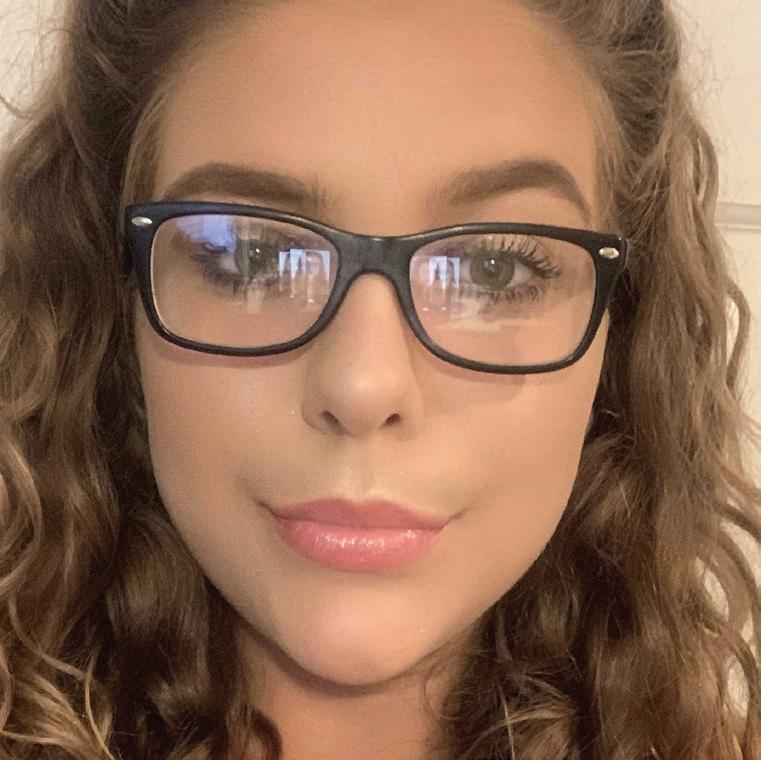

BEGINNING BALANCE: $123,666
ENDING BALANCE: $449,227
This scholarship was created in 2005 with a gift from the Christensen Fund. It is awarded to students with financial need, with a preference towards international students.
RECIPIENT: Lenka Slamova ’24 (Říčany, Czech Republic)
BEGINNING BALANCE: $402,534
ENDING BALANCE: $320,969
This scholarship was created in 2004 by Norah Deakin Davis, the widow of Richard S. Davis (Dick), a founding faculty member who passed away at the age of 41 in 1982. Mrs. Davis’s pledge spurred additional gifts from friends and former students of Dick. Recipients are outstanding students in the contemplative, aesthetic, and philosophical aspects of human ecology that Dick loved.
RECIPIENT: Odin Gage ’24 (Thorndike, ME), Philéas Dazeley-Gaist ’23 (Nantes, France)
BEGINNING BALANCE: $169,306
ENDING BALANCE: $134,763
Lenka Slamova ’24 Sil Kiewiet de Jonge ’23 Kiernan Crough ’22BEGINNING BALANCE: $47,419
ENDING BALANCE: $37,711
The scholarship was created in 2006 by the children and friends of John and Louisa Dreier. It is given to a junior who has shown leadership in building community spirit both on campus and in the college’s surrounding communities.
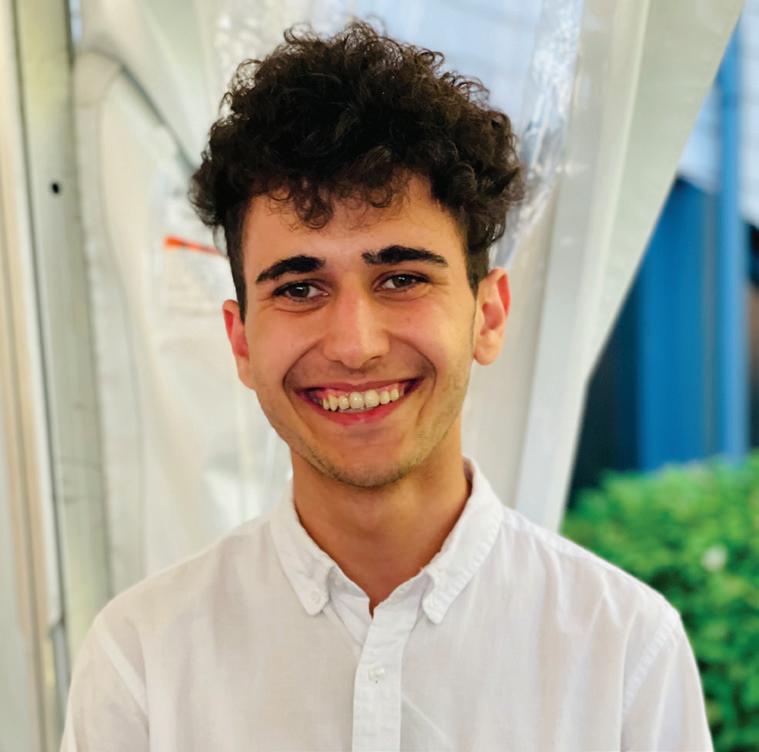
RECIPIENT: Anna Bradford ’23 (Jay, ME)
The scholarship was created in 2006 by the children and friends of John and Louisa Dreier. The scholarship is given to a junior who embodies the spirit of joy in the arts.
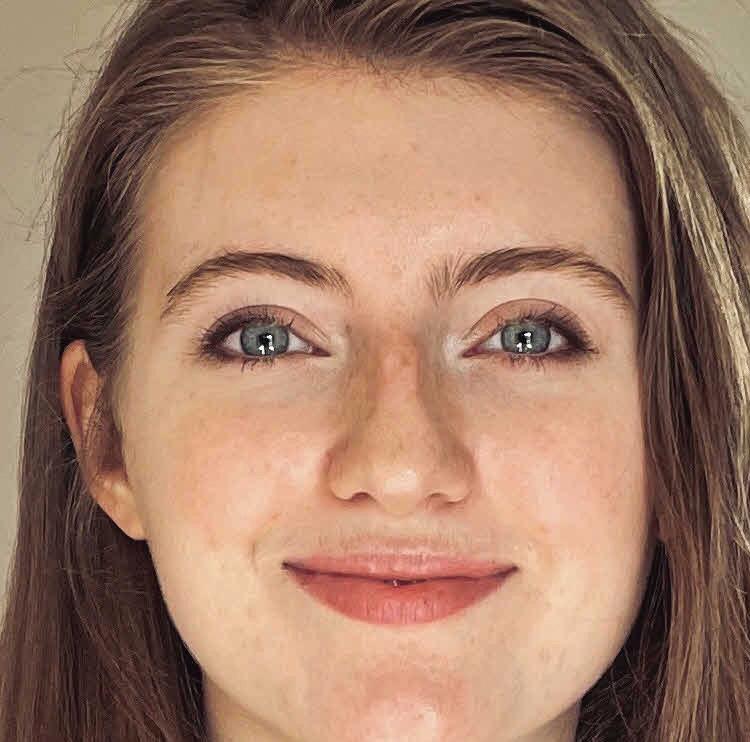

RECIPIENT: Halei Trowbridge ’23 (Fulton, CA)
The scholarship was established by COA’s trustees to honor Sam Eliot as he retired from COA after 11 years as vice president. Mary Kathryn served as fundraising assistant to COA’s first president and designed the college’s iconic logo. It is awarded to Maine students with financial need.
RECIPIENT: Ella Giroux ’25 (Vassalboro, ME)
BEGINNING BALANCE: $192,369
ENDING BALANCE: $159,817
This scholarship was created in 2018 by David Milliken as part of an effort to honor family, friends, and public figures and the characteristics David admires in them. This scholarship supports a student working in fields of related interest to the individual honored by the scholarship. Characteristics and interests that speak to the honoree include: study of oceans, making, chemistry, medicine, curiosity, dowsing, whimsy, laughter, global thinking, ceramics.

RECIPIENT: Raheem Khadour ’25 (Syria)
BEGINNING BALANCE: $136,289
ENDING BALANCE: $109,866
The General Scholarship Fund was established in 1984. The fund contains gifts given by hundreds of friends in every amount for unrestricted student scholarships. We continue to accept donations for this important endowment. There are many students who receive aid from this fund. here are a few:
RECIPIENTS: Lucy Cheeley ’25 (Cold Spring, MN), Noelle Stringer ’25 (Coatesville, PA), Ellie Gabrielson ’25 (Monteverde, Costa Rica), Savannah
Averitt ’25 (Nellysford, VA)
BEGINNING BALANCE: $1,315,941
ENDING BALANCE: $1,106,526
Jennifer McNamara ’23 Halei Trowbridge ’23 Raheem Khadour ’25This scholarship was created to honor the late Craig William Greene, former Elizabeth Battles Newlin Professor in Botany. It is awarded to two rising juniors or seniors who have excelled in botany and general biology classes, and who share Craig’s passion for the world of flora.
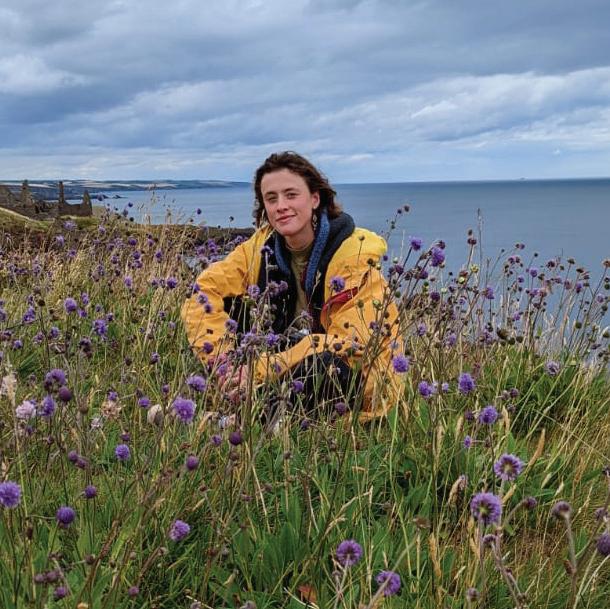

RECIPIENT: Jennifer McNamara ’23 (Bernard, ME), Lundy Stowe ’22 (Groveland, CA)
BEGINNING BALANCE: $117,298
ENDING BALANCE: $93,246
This award honors both George B. Hartzog and John M. Kauffmann. Kauffmann, who passed away in 2014, was a former COA trustee, and retired to MDI after a long career at the National Park Service, most notably in Alaska where he helped define the boundaries of the Gates of the Arctic National Park. George Hartzog, head of the National Park Service from 1964–1972, was a hero of John’s and revered by many for the way he managed the agency and defended the NPS during his tenure. It is awarded to students who have an interest in the management and protection of ecosystems—especially wilderness and rivers.
RECIPIENTS: Johnny Robinson ’22 (Cotuit, MA), Adaline Huckins ’22 (Hancock, MI)
BEGINNING BALANCE: $524,314
ENDING BALANCE: $418,902
The scholarship was created in 1997 through gifts from friends and family of August Heckscher, an artist, author and public servant whose life and work encompassed many of the values and principles underlying the study of human ecology. It is typically awarded to two students, preferably juniors, with preference for those whose work focuses on public lands, government, or the arts. This year there was only one recipient.

RECIPIENTS: Hannah Gower-Fox ’24 (Brecon, United Kingdom)
BEGINNING BALANCE: $216,704
ENDING BALANCE: $173,308
This scholarship was created in 2018 by David Milliken as part of an effort to honor family, friends, and public figures and the characteristics David admires in them. This scholarship supports a student working in fields of related interest to the individual honored by the scholarship. Characteristics and interests that speak to the honoree include: islands, love of nature, texture, art, awareness, sensitivity, intuition.
RECIPIENTS: Rosie Chater ’25 (Pony, MT)
BEGINNING BALANCE: $136,289
ENDING BALANCE: $109,866

This scholarship was created in 2018 with a gift from the Louise H. & David S. Ingalls Foundation. It is awarded to students with financial need, with a preference towards international students.
RECIPIENTS: Malek Hinnawi ’25 (Palestine/Syria)
BEGINNING BALANCE: $108,572
ENDING BALANCE: $88,524
Rosie Chater ’25 Lundy Stowe ’22 Johnny Robinson ’22 Hannah Gower-Fox ’24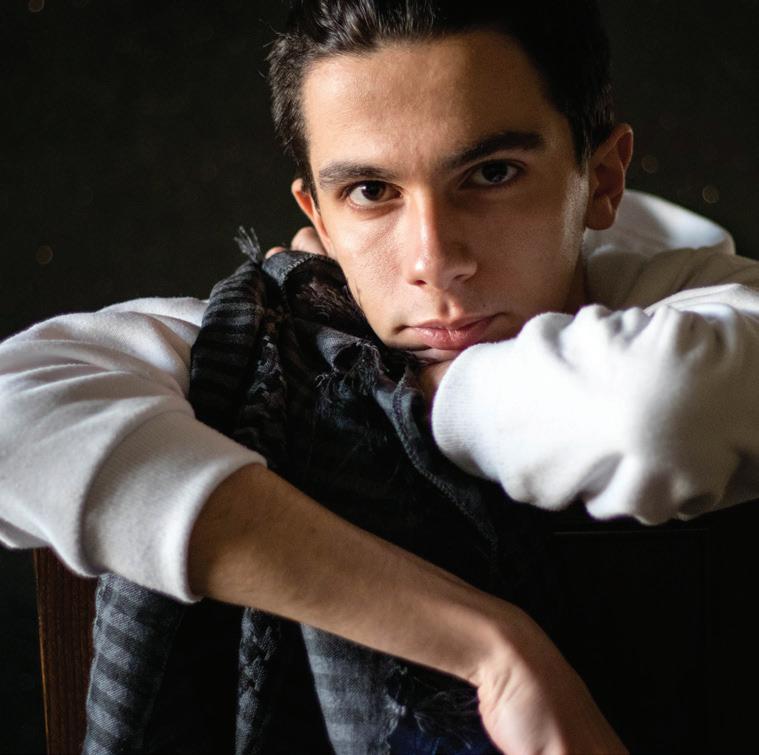
COA and the Maine Community Foundation created the Edward G. Kaelber Scholarship for Maine Students of Outstanding Promise to honor Ed Kaelber for his leadership and for his contributions in the fields of education and community development. The scholarship provides opportunities for Maine students who possess the potential for the kind of boldness, commitment, and leadership personified by Ed Kaelber, and who will use their skills and talents to impact their communities in equally significant ways.
RECIPIENT: Conrad Kortemeier ’26
This scholarship was created in 1996 by former trustee Robert Blum, honoring his daughter Alice. It is awarded to students who plan to actively work for biodiversity and especially for the preservation of underwater species in various parts of the world.

RECIPIENT: Bailey Tausen ’23 (Taneytown, MD)
The Maine Student Scholarship Fund is an endowment created through generous gifts to the COA Silver Anniversary Campaign from the organizations listed below.
BEGINNING BALANCE: $991,466
ENDING BALANCE: $791,760
This scholarship was created in 1995 through a gift from the Betterment Fund, and supports students from Bethel, Oxford County, and the State of Maine, in that order of priority.
RECIPIENTS: Eva McMillan ’23 (Rangeley, ME)

The scholarship was established with a gift from the H. King & Jean Cummings Charitable Trust. Mr. Cummings led his family’s business, Guilford Industries, a textile manufacturer in Guilford, Maine. He later served as CEO of Sugarloaf ski area and played decisive roles in the founding of Carrabassett Valley Academy and Maine Community Foundation. The scholarship is awarded to students from western Maine.
RECIPIENT: Cheyanne Goroshin ’24 (Sumner, ME)
This scholarship was created in 1995 with two gifts from Dead River Company and the Kenduskeag Foundation. It is awarded to Maine students with financial need.
RECIPIENT: Hayden Platteter ’24 (Phippsburg, ME)
 Eva McMillan ’23
Malek Hinnawi ’25
Cheyanne Goroshin ’24
Hayden Platteter ’24
Eva McMillan ’23
Malek Hinnawi ’25
Cheyanne Goroshin ’24
Hayden Platteter ’24
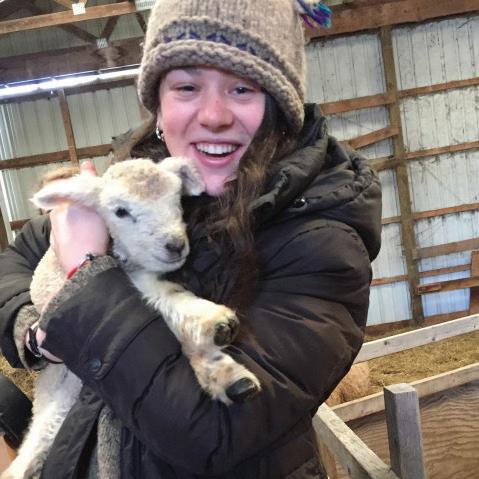
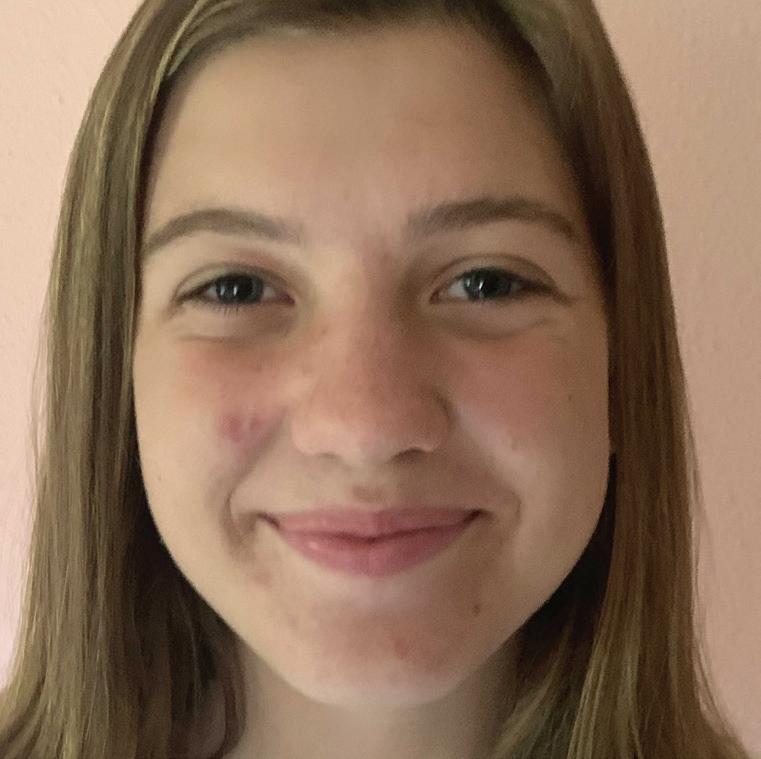
This scholarship was created in 2018 by David Milliken as part of an effort to honor family, friends, and public figures and the characteristics David admires in them. This scholarship supports a student working in fields of related interest to the individuals honored by the scholarship. Characteristics and interests that speak to the honorees include: birding and preservation of wild habitat, service, loyalty, care, attention to detail.
RECIPIENT: Levi Sheridan ’24 (Lansing, MI)
BEGINNING BALANCE: $147,803
ENDING BALANCE: $124,367
The scholarship was created in 2004 through a bequest from Barbara Piel to College of the Atlantic. She was a great friend of the college, deeply interested in the natural world and inspired by “the intense individuality of students and staff” at COA. This annual scholarship is awarded to students with financial need.
RECIPIENT: Maddy Stevens ’23 (Kent, CT)
BEGINNING BALANCE: $625,511
ENDING BALANCE: $498,648
The scholarship was created in 2000 by Eleanor T. and Samuel J. Rosenfeld. This annual scholarship is awarded to students with financial need.
RECIPIENT: Sarah Ottinger ’25 (Colfax, WI)
BEGINNING BALANCE: $17,036
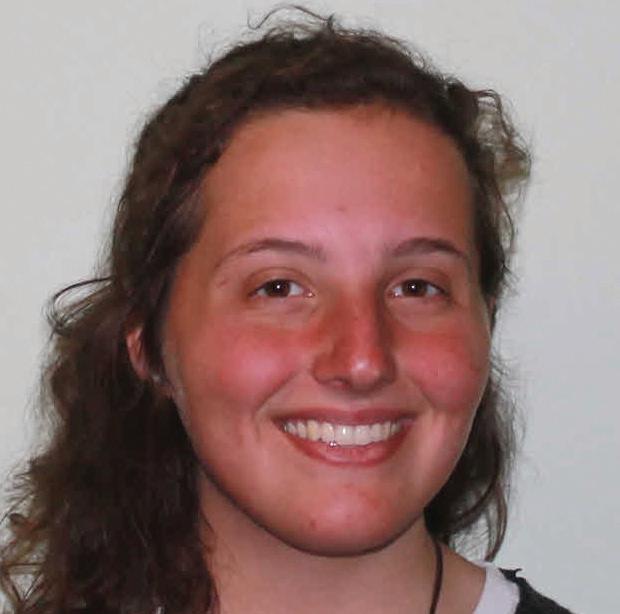
ENDING BALANCE: $13,311
This scholarship was created in 1997 with a gift to the Silver Anniversary Endowment Campaign by Trustee Maurine P. Rothschild and her husband Robert Rothschild. The scholarship is awarded to qualified graduate students with preference given to those pursuing work in the education field.
RECIPIENTS: Zeya Lorio ’22 (Blue Hill, ME)

BEGINNING BALANCE: $346,739
ENDING BALANCE: $276,300

The scholarship was created in 2013 through a gift made by Jay McNally ’84 to honor his maternal grandparents. This four-year scholarship provides financial assistance to a highachieving student who is a great fit with the mission of COA and would otherwise not be able to attend.
RECIPIENT: Iris Gillingham ’22 (Livingston Manor, NY)
BEGINNING BALANCE: $860,212
ENDING BALANCE: $686,914
This scholarship was created in 2018 by David Milliken as part of an effort to honor family,
Maddy Stevens ’23 Bailey Tausen ’23 Sarah Ottinger ’25 Iris Gillingham ’22friends, and public figures and the characteristics David admires in them. This scholarship supports a student working in fields of related interest to the individuals honored by the scholarship. Characteristics and interests that speak to the honorees include: Love of wood, landscapes and gardens, books, art, music, lifelong love of learning, letters, winter structure of plants, compassion and empathy, love and leadership in community.
RECIPIENT: Jennifer McNamara ’23 (Bernard, ME)
BEGINNING BALANCE: $136,289
ENDING BALANCE: $109,866
This scholarship was created in 2008 with a gift from Donald and Beth Straus. It is awarded to a rising junior or senior who shows promise in working for cultural change, collaboration, in the field of human relations and/or leadership.
RECIPIENT: Isi Muñoz Segovia ’22 (Madrid, Spain), Sadie Cooley ’22 (Santa Fe, NM)
BEGINNING BALANCE: $284,817
ENDING BALANCE: $227,376
This scholarship was created in 2018 by David Milliken as part of an effort to honor family, friends, and public figures and the characteristics David admires in them. This scholarship supports a student working in fields of related interest to the individuals honored by the scholarship. Characteristics that speak to the honorees include: community, care, beauty, water, aesthetics, respect for the past, belief in the future.
RECIPIENT: Maggie Denison ’23 (Schaghticoke, NY)
BEGINNING BALANCE: $136,289
ENDING BALANCE: $109,866
Through COA’s Broad Reach Capital Campaign that concluded in 2020, a number of donors established new scholarships and funds.
Future philanthropy reports will report on the income generated, the fund criteria, and the names of the students who receive scholarships from these endowed funds. These new scholarships and funds include those listed here.
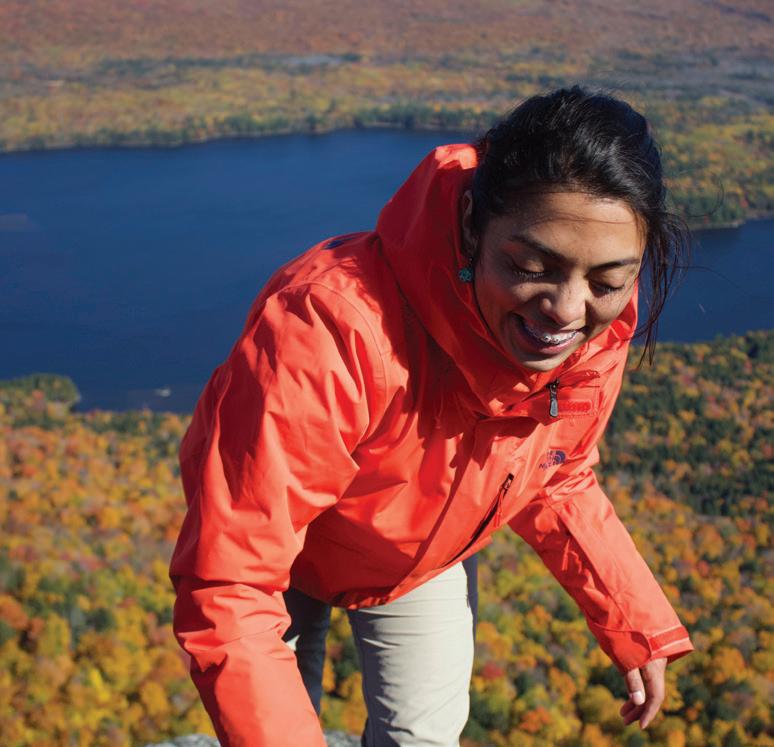
• Nancy Aronson Scholarship
• Judith Blank and Steve Alsup Scholarship
• The Lynn Boulger Young Writers Scholarship

• Roc and Helen McGregor Caivano Scholarship
• Helen Caldicott Scholarship
• Heather Richards Evans Scholarship
• Robert H. Rubin Scholarship
• Larry Lutchmansingh Scholarship
• John McKee Scholarship
• Pamelia Markwood Neff Scholarship
Maggie Denison ’23 Isi Muñoz Segovia ’22Over the years, the Cox Protectorate has provided opportunities for students in a number of geology, natural history, science, and land use courses to study this landscape, its wildlife, and history. During the spring of 2022, the Conservation Biology course taught by John Anderson, William H. Drury Jr. Chair in

The Cox Protectorate is a 101-acre tract of undeveloped property near the center of Mount Desert Island that was donated to COA by former trustee Tom Cox in 2010, along with a fund to tend the property. The property encompasses Mill Brook, part of the headwaters of Northeast Creek. The Protectorate has walking trails for recreation, but is mainly used for an array of interdisciplinary courses, projects, and research, including annual surveys by students in COA’s WildlifeEcology class.
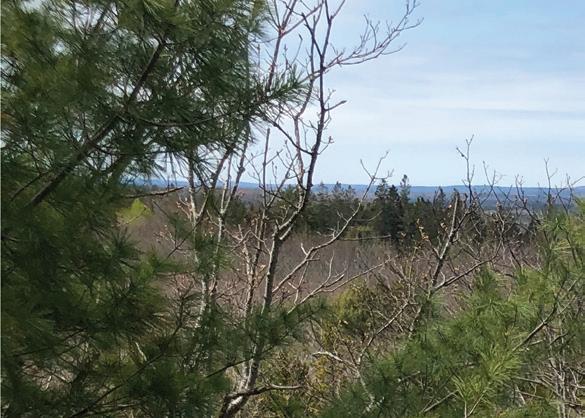
For several years, students have used the M/V Osprey’s drone to map the Cox Protectorate, gathering high-quality imaging of tree types by foliage to help interpret abundance and composition as well as the hydrology of the landscape.

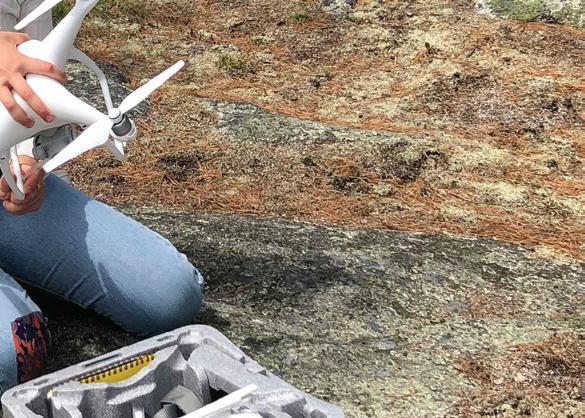



Evolution, Natural History, and Ecology, took a series of field trips to the site and conducted a literature review of past work at the Protectorate, including assessment of the ecological significance of the land and the property’s covenants. The class ended the term with a debate on whether or not a portion of the property could or should be used for faculty or staff housing.

Fiscal year 2022 was another successful and productive year at Beech Hill Farm. Throughout the growing season, we grew and sold about 100,000 pounds of certified organic vegetables, and grossed over $750,000 through sales in our farmstand, wholesale accounts, and Community Supported Agriculture (CSA) program. As our increased vegetable production and farmstand sales finally outgrew our existing infrastructure, we began design and work on a farmstand addition and renovation. The updated and expanded farmstand will include an additional 440 square feet of retail space and 120 square feet of walk-in cooler space. The entire building will be insulated and outfitted with heat pumps, allowing for an extended sales season, and improved produce management during the hot summer months. In order to expand food production during the shoulder seasons and over the winter, we purchased a new 1,000 square foot greenhouse, which will be built later this year.

Access Project, which work to address food insecurity on MDI.
We employed over 20 work-study students in the spring and fall, and 14 staff members for our summer season—many of whom were COA students or graduates. As part of COA’s Food and Farming Workshop Series, we hosted a workshop for students on crop planning and greenhouse seedling production. Alongside Rachel Carson Chair in Human Ecology Suzanne Morse, we supervised independent studies of a group of three students who together explored the fundamentals of organic farm management. In September, we hosted the 2021 Farm Day, which featured excellent food from the Blair Dining Hall, farm tours, tabling, and extraordinary music from The Soul Benders.
We continued to expand our food access outreach by working with community partners. We supplied nearly two tons of surplus produce to Hancock County community members working with Healthy Acadia’s Gleaning Initiative. We provided the Bar Harbor Food Pantry with thousands of pounds of produce with help from the Mainers Feeding Mainers grant from the Good Shepherd Food Bank and from funds raised by Share The Harvest, our student-run food access program. Through Share The Harvest programs, we provided free produce to low-income residents of Mount Desert Island, as well as 50% discounts in the farmstand to all SNAP and WIC users through our “Double your Dollar Program”. We continued to partner with OpenTable MDI and the MDI Food
We continue to work towards building soil health and fertility through improved management practices. In 2021, we purchased quick-attach tractor forks, silage tarps, and sandbags so we could prepare fields without the use of plowing or heavy tillage. This method decreases soil compaction and disturbance, increases organic matter, and reduces erosion and the use of fossil fuels. We invested in a Billy Goat brush cutter to introduce living mulch aisles into our crop management plan, which adds organic matter to the fields, reduces erosion, and eliminates the use of plastic landscape fabric. We have continued to trial multiple reduced tillage and no tillage cropping methods with significant success. We plan to continue integrating reduced tillage into our field management to continue to build the health and fertility of our soils.

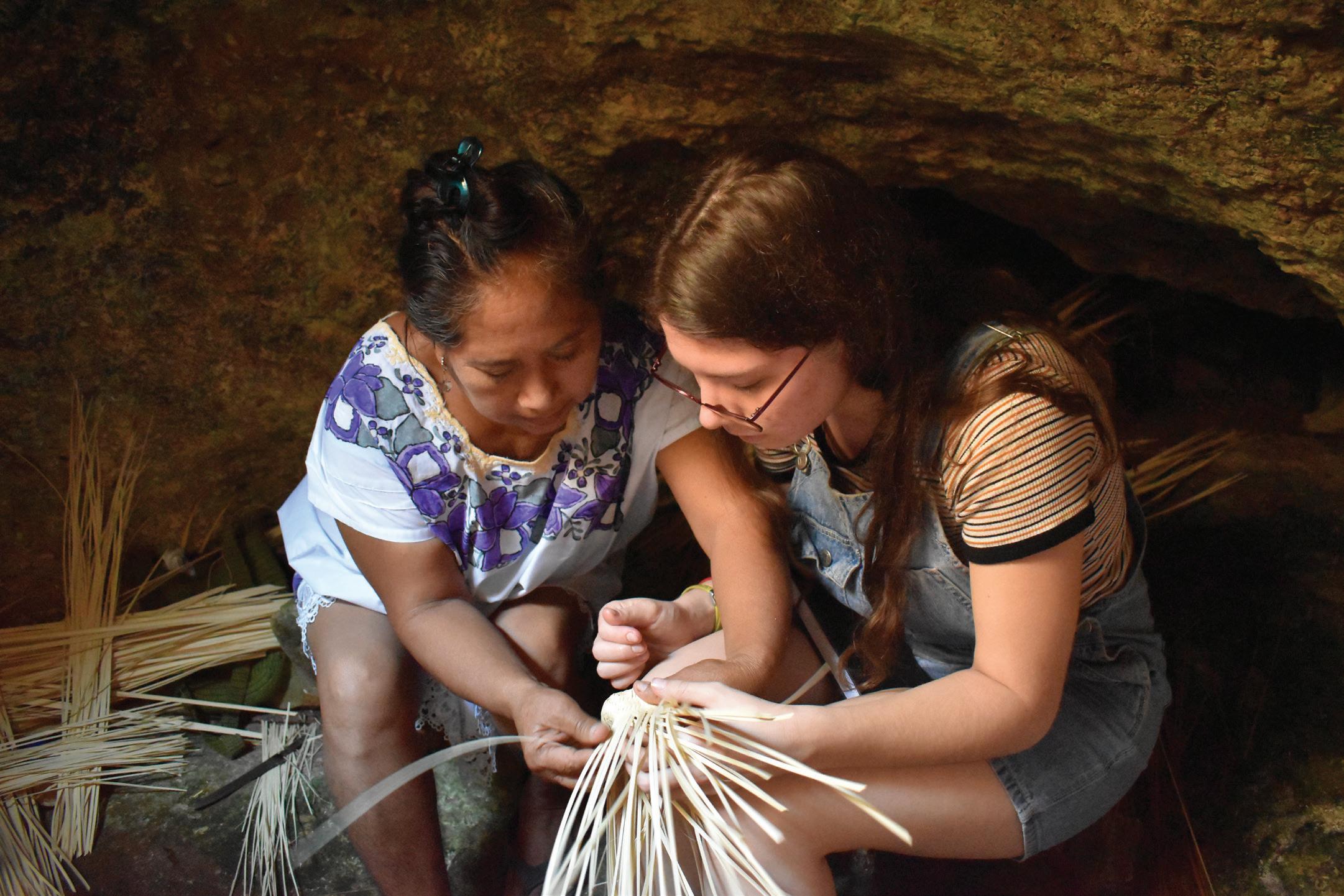

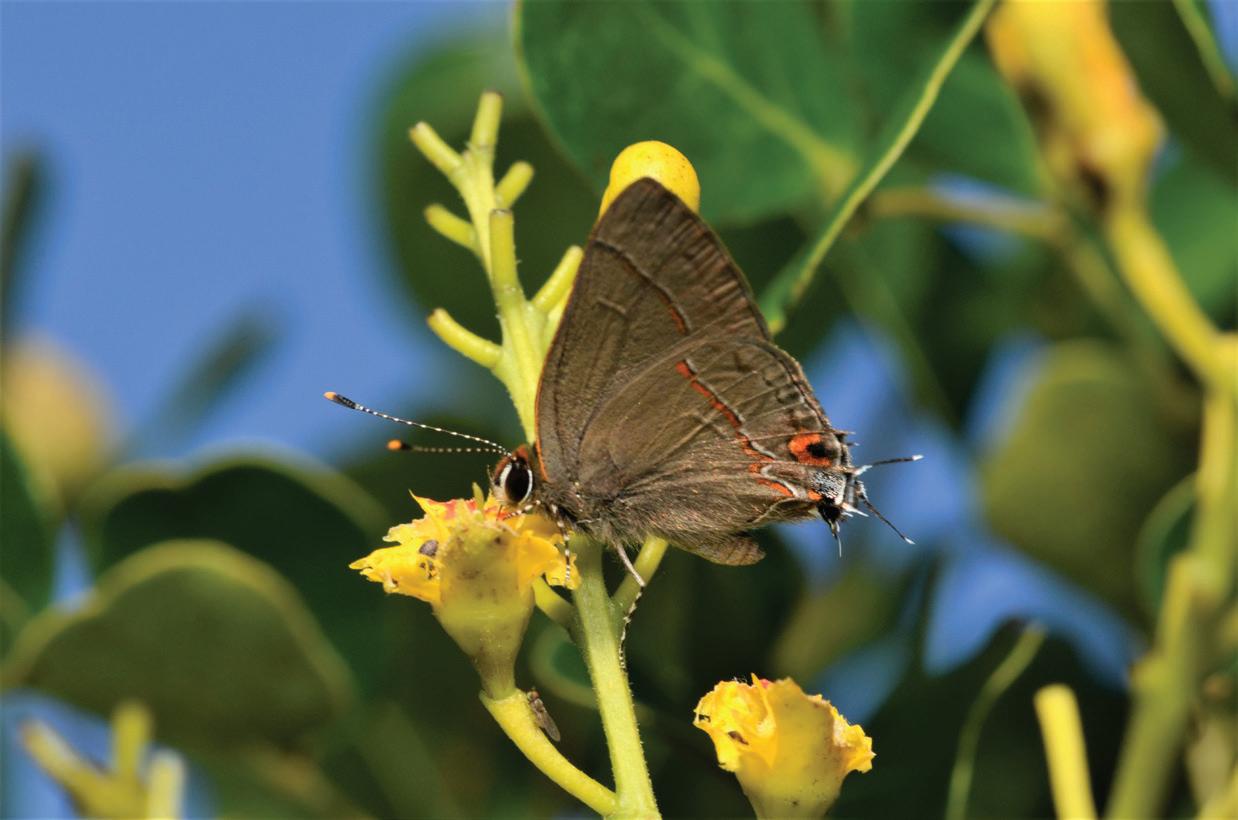
The following courses offered by visiting instructors this academic year were made possible through income from this fund.
Rob and Arlene Kogod established this endowed fund 20 years ago to create opportunities to bring talented artists to COA at a time when the college did not have a robust art faculty. COA has grown since then and has professors in the performing arts, painting and drawing, fi lmmaking, graphic arts and design, music, landscape design, art history, and printmaking. Today, the Kogod Fund is used to enhance our offerings through lecturers and visiting faculty who offer courses in things like photography, ceramics, and cinema. The fund also supports art supplies and equipment, travel, professional development, and student opportunities that otherwise would not be possible.
World Percussion (2 sections)

MICHAEL BENNETT
Cinematic Visions from Marginalized Peoples
History of Filmmaking II (1946-Present)
COLIN CAPERS ’95, MPHIL ’09
The History of Making Prints
ANNIKA LOUISE EARLEY ’14
Fundamentals of Sculpting: Sculpting the Head
FRANCE HILBERT
Critical Making and New Media Art
QURAN KARRIEM
Architecture in the Expanded Field
TIMOTHY LOCK
Our Band Could Be Your Life: Music, Art, Zines 1975-2015
DANIEL MAHONEY
Ceramics I
Intermediate Ceramics
ROCKY MANN
Performance & Ecology: What can theater do?
Native American Drama
Graphic Attack: Advanced Graphic Design Studio II
KHRISTIÁN MENDÉZ AGUIRRE ’15
Beginning Contemporary Dance Technique
Sourcing the Body: Experiential Anatomy
DANI ROBBINS
Documentary Video Studio
MATTHEW SHAW ’11
Audio Production and Engineering
ZACH SOARES ’00
Kinetic Sculpture Introduction
HANNAH TARDIE
Introduction to Photography
History of Photography
Intermediate Projects in Photography
JOSH WINER ’91
Income from the Kogod Fund also allowed COA to construct a new recording studio and band practice space, purchase a new computer system and software for the recording studio, and to pay teaching assistants for the following courses:
Animation
Ceramics
COA Gallery Assistant
Documentary Video
4-D Design
Graphic Design Studio Illustration Movement Training World Percussion
Beginning Fund Balance
$1,852,997
Net Return on Investments (304,561)
Contributions 0
Less Allocations/Withdrawals (73,000)
Ending Fund Balance $1,475,437
Samba bandStaff Supervisor: April Nugent, Farm Manager
Through the 2022 season, the Rockefeller Endowment supported the position of new Farm Manager April Nugent and ongoing facilities operations. The farm’s livestock program expanded this season to add heritage breed pigs to Peggy Rockefeller Farms (PRF). The farm continued to manage its other livestock enterprises at a slightly increased scale of production. The beef herd expanded and transitioned to Red Devon cattle. These animals will be utilized as breeding stock to increase production and on-farm education opportunities in future seasons. Sheep production ran about 70 animals at peak and additional genetics were brought in. The farm upgraded to running a Katahdin hair sheep fl ock as well as Romney cross fl ock both for dual production. One hundred egg laying hens and 500 broilers (meat chickens) were produced this season. The farm aims to double egg production in 2023 and keep all its production hens in mobile layer coops so they can be better utilized as part of our grazing rotation.The farm’s half-acre vegetable plot, a small orchard of apple trees, and fi fty acres of pasture/hay land were maintained at their previous scale.

Numerous students were able to engage via the work-study program, summer internships, on farm workshops, class visits, and placed-based farm courses. In the winter term of 2022, April co-taught a farm animal management course at PRF with Partridge Chair in Food and Sustainable Agriculture Systems

Kourtney Collum. Several classes engaged with the farm this season including: Human Ecology Core Course, Ornithology, Bees and Society, Agroecology, Landscape Drawing, Sheep to Shawl, and
Sustainable Energy. Community interactions have continued with numerous school groups and organizations engaging in educational farm tours to learn more about Peggy Rockefeller Farms and COA.
Highlights of 2022 productions included the development of a meat Community Supported Agriculture (CSA) program available to residents of MDI and Hancock county. Twenty-eight families were served this season. The production of 900 lbs of lamb, 1600+ lbs of pork, 2000 lbs of chicken, 1200 lbs of beef, 80+ lbs of garlic, and various miscellaneous crop sales. PRF partnered with COA’s on-campus community fridge program to donate 150+ lbs of meat and numerous crops to the COA community. The farm’s breeding programs produced 26 piglets, 32 lambs, and one calf this season. Animal breeding, on-farm educational opportunities, and community.
Beginning Fund Balance $1,585,551
Net Return on Investments (258,263) Contributions 0
Less Allocations/Withdrawals (63,000)
Ending Fund Balance $1,264,288
coa.edu/support49
David Rockefeller established the Peggy Rockefeller Farms (PRF) endowment in 2011 by donating the Carmen and DeLaittre Farms, which were combined to form the current PRF, to the college and supporting its operations with a generous endowed gift. Left: Cows grazing at Peggy Rockefeller Farms. Right: PRF summer crew Faculty Coordinator: Todd Little-Siebold, PhD
Faculty Coordinator: Todd Little-Siebold, PhD
The Fund for Maine Islands continues to provide critical support for course work, mentoring, internships, and community engagement as it moves into its eighth year. This partnership with the Island Institute has built a strong central focus on courses, field work opportunities, and community-based research, all around the theme of storytelling. As we approach our 10-year anniversary, the partners are discussing how to elevate questions about the ways that island and remote coastal communities have navigated and will navigate the cumulative changes wrought by climate change, shifting community dynamics, and the dynamics of the fisheries upon which they rely.
The Island Institute and College of the Atlantic launched this partnership in 2014 to seek solutions to sustain island and coastal ecosystems. Funded by a $2M challenge grant from the Partridge Foundation and the support of many other donors who helped secure the match, the fund addresses four areas of critical concern for Gulf of Maine residents: agriculture and food, energy, education, and adaption to climate change.
Natalie Springuel ’91 from Maine Sea Grant, Galen Koch of the First Coasts, and Molly Graham, an independent contractor, have done the lion’s share of work in our integrated initiative, “Mapping Ocean Stories,” in which students record, transcribe and exhibit the stories of our local communities. A student-led (online and in-person) sound walk in Eastport was a huge success with very positive community feedback. A podcast series from Galen Koch called Up from the Sea has been rolling out and has involved students as interns and production assistants. This is an exciting
new element of our public outreach. Ongoing work transcribing and making public oral histories through the new digital archive Maine Sound and Story (launched with support from this fund) has gained momentum and made more voices more widely available to communities. Student interns participating in that project have made major contributions with their sheer diligence in transforming archival materials to make them accessible for the community.
Exhibit design, radio work, recording oral histories, and audio production skills are building a skills base that we hope will serve our local communities in the coming years. The professional experience gained by students has led to work as an Island Fellow through the Island Institute for one recent graduate. Building that pipeline is a core shared goal.
Finally, the Fund for Maine Islands launched a new initiative, the Frenchmen Bay Oral History Project, which is capturing the ecological knowledge of local fishers. COA alum Camden Hunt ’22 has led the initial stages of this emergent program.
We are excited about all that we have accomplished, and encourage everyone to stay tuned because we are launching Mapping Ocean Stories as an integrated three-credit “monster course” next year, if all goes according to plan
Staff Supervisor: Jane Hultberg, MLS, Library Director
There are three key areas to the library: information resources and services, the College Archives and Special Collections, and audiovisual (AV) equipment and services. The year started on an exciting note with the return of the library to its pre-pandemic configuration. Once the students returned, we found that our interactions with our work-study students as well as our patrons were much improved due to our restored arrangement. Library usage was definitely up from the previous year, but still noticeably less than normal. We attribute much of this to fallout from the pandemic and a desire to study where masks were not required.
The librarians were excited to have met one-on-one for 20-30 minutes of personalized instruction about the library’s resources with each incoming student as part of one of the Human Ecology Core Course modules. In addition, two faculty required students to have one-on-one visits with a librarian for completion of an assignment. The librarians also visited seven classes during the year to provide in-class instruction.
This year we had more than 40 work-study students. Two returning students were trained to catalog, one returned as an interlibrary loan assistant, and others helped produce a newsletter. Some helped with events or graphic design needs, five were trained in AV, and others helped in the archives, organizing the news clippings collection, the Human Ecology Essay collection, and digitizing materials from a variety of collections.
Some specific projects addressed this past year include cataloging and reorganizing our audio collection. Working with Jonathan Henderson, our new music faculty, our cataloger refined a recording classification system, and edited or assigned call numbers to our

CDs, LPs, and cassettes. We received another large donation of books on North American Indigenous peoples, which we have been reviewing and cataloging. The Higgins Foundation once again provided financial support for our juvenile book collection. Our associate director led a review and update of our Children’s Collection development policy with input from a committee that included students, faculty, and staff. Librarians assessed some of the periodical collection and withdrew 1,334 pounds of materials.
We worked on building community through events, exhibits, and displays. We reinstituted our new student Open House, brought back Live Music for Studying, and Pi(e) Night. Students exhibited class projects, and the library served as a venue for senior project and independent study displays and presentations. New book displays were installed weekly by our work-study students.
Library staff supported the COA community this past year by serving on committees, serving as directors for independent studies and senior projects, and by teaching a class. We engaged in professional activities outside the college as well.
We look forward to a busy year ahead and all it will bring.
Beginning Fund Balance $770,735
Net Return on Investments (125,475)
Contributions 0
Less Allocations/Withdrawals (31,000)
Ending Fund Balance $614,260
Nancy Hoskinson McCormick, widow of Charles Deering McCormick established this endowed fund through the Chauncey & Marion Deering McCormick Foundation in 1996. Thorndike Library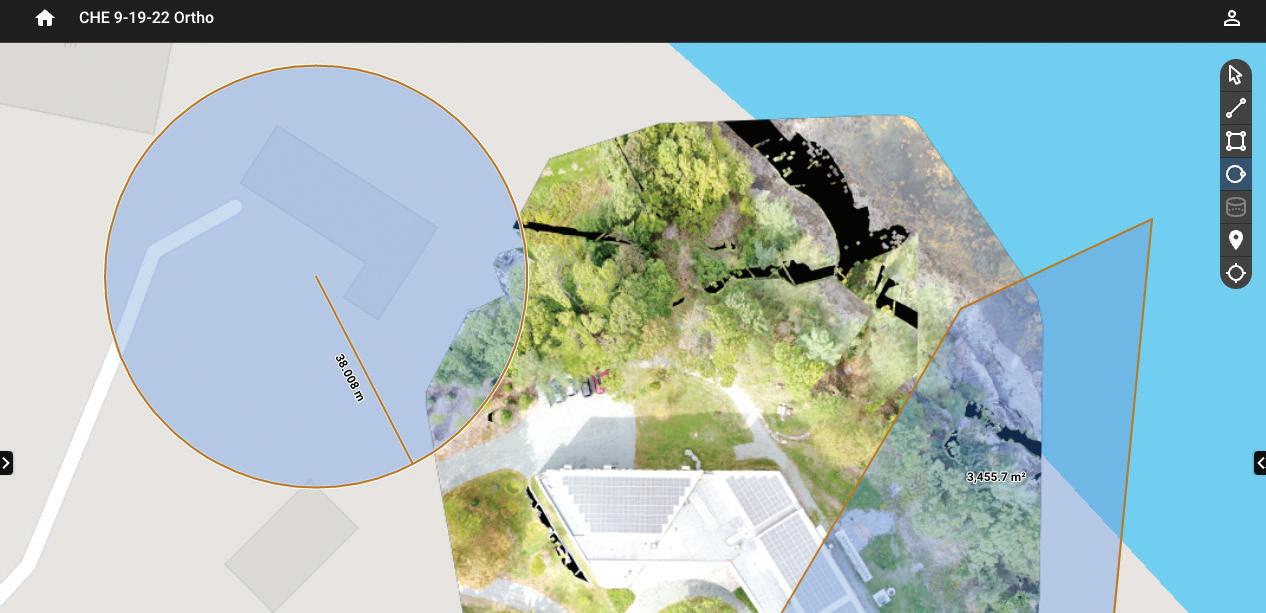
Staff Supervisor:
This was a conservative year of spending from the Doug Rose GIS Enhancement Fund due to the pandemic and other limitations. The fund was used to pay half of the Pix4D.com drone image processing cloud service as in previous years. The use of Pix4D continues to grow as more faculty, staff, and students use drones for mapping purposes. Any remaining balance from last year will carry over.
Along with Pix4D, there were two other purchases this year.
to use. The Mavic Mini has been used in the GIS class, where students were trained and each given the opportunity to fly the drone. The class used the drone to take aerial photos of the new Davis Center for Human Ecology and then converted the imagery using Pix4D.com into an orthomosaic aerial map and 3D scene.
A Hewlett-Packard 6230 inkjet printer was purchased for general use in the GIS Lab. Students will not be charged for most printing needs.
Family and friends of Doug Rose established this fund in 1994. Doug, a COA student in the 1990s and avid climber, died climbing Great Head when the weather turned. This fund supports the purchase of software and equipment, as well as student attendance at conferences related to Geographic Information Systems.
A second DJI Mavic Mini drone was purchased, which cost about $500. It was purchased with the remaining money from a generous additional gift of $1,000 given last year by Karen Rose. The Mavic Mini drone weighs under 250 grams, and therefore does not require any special training and is not limited by FAA regulations.
The Mavic Mini is an excellent training and small projects drone. It is safe, easy to fly, and easy to train students how
We hope the 2022-2023 academic year provides more opportunities for students to use the Mavic Mini drones and the fund for travel, training, equipment and special purposes .
Links to Pix4D data models:
• CHE orthomosaic: https://bit.ly/cheortho1
• CHE 3D scene: https://bit.ly/che3d1
While the vast majority of collegiate venture incubators & accelerators are co-curricular, forcing students to choose between their interests and education, the Hatchery removes these barriers, aligning education and individual passion by providing students with a full term of academic credit. Sustainable Business Program Manager Kerri Sands ’02 and I manage the program, and have built a bespoke curriculum so that any student at COA can develop their ideas and be fully immersed in the entrepreneurial experience. Students selected for the Hatchery:
• perform a series of increasingly high-fidelity prototypes over 10 weeks
• learn essential business skills necessary for success in any enterprise
• receive guidance from mentors and professionals in prototyping, branding, social media, legal, and accounting
• have access to office space and up to $5,000 in seed funding
In the 2021-22 academic year, the Hatchery was taught in a hybrid format with students both in the classroom and on Zoom. We were primarily in person this year and it was a real delight to host most of our guest mentors in person.
Eight Hatchery participants pursued a wide range of enterprises, reflecting the diverse interests of COA students. Many of the students had already been developing their ventures across a range of classes and years at COA. Enterprises included:
• Sophia Eliana—merging music and art, spreading joy, and bringing people together
• Findi Sahel—boosting income for Nigerien women through Nigerien fair-trade tea made from West African plants and herbs
• Eleanor White Ceramic—producing ceramics incorporating local elements from wood-fired and hand-dug clay to seashell glazes

• Betula House—providing affordable hostel accommodations on MDI
• LOCOMOTIVE—capturing the sound of this generation by collaboratively producing and promoting indie music
• GreenTico – connecting students from around the world to
the authentic Costa Rica and creating experiences that benefit visitors and the local community
• Gigi Bee Photography— bringing out clients’ authentic self through portrait photography
in 2015. The Diana Davis Spencer Hatchery provides eligible students academic credit, professional services, and access to seed funding to develop a sustainable for-profit or nonprofit business.
• Sawyer’s Market— reestablishing a local grocery store that had closed after serving Southwest Harbor for 70 years
Hatchery students learned sustainable enterprise fundamentals, developed numerous prototypes, experimented with new products and sales channels, solicited meaningful feedback from customers, wrote operations manuals, developed growth strategies, and ultimately came to see themselves as professionals offering products and services of value. At the end of the 10-week term, students, families, and supporters from around the world attended the live Hatchery Expo over Zoom, where students presented overviews of their work.
The Diana Davis Spencer Hatchery’s educational model continues to be of interest to organizations both inside and outside academia. I was interviewed and presented the Hatchery model at conferences,
The Diana Davis Spencer Foundation endowed COA’s venture incubatorworkshops, and meetings in the United States, Colombia, France, and Australia. The program was highlighted for how it merges academic credit with students’ interests to elevate learning and provide entrepreneurs with the skills they need to succeed.
The Hatchery has also had an impact locally. I am an advisor to Camden High School, where they have launched a similar program, and the Mount Desert Business Boot Camp (based on the Hatchery curriculum) has helped 18 local entrepreneurs transform their businesses and rejuvenate the local economy. Kerri Sands ’02 represented COA and the Hatchery as a preliminary judge in a capstone competition for Manomet’s 2022 class of U360 Business
Sustainability interns. Finally, we are also an active participant in the Downeast Innovation Network, a region-wide effort to understand and improve our entrepreneurial ecosystem.
This fund was established in 1986 with the purpose of helping Thorndike Library build a collection of science and history of science books. The fund grew further when, upon Thomas Hall’s death in 1990, the Hall family requested that donations be directed to this fund. Each year, selections are made based on requests, class needs, and academic as well as general interest. Here is a sampling of this year’s selections.
Mammalogy: Adaptation, Diversity, Ecology, 5th edition by George A. Feldhamer et al. (2020)
The Seed Garden: The Art and Practice of Seed Saving by Micaela Colley et al. (2015)
The Rise and Reign of the Mammals: a New History, from the Shadow of the Dinosaurs to Us by Steve Brusatte (2022)
Wildlife Habitat Management, 2nd edition by Brenda C. McComb (2021)
The Accidental Ecosystem: People and Wildlife in American Cities by Peter S. Alagona (2022)
Modeling Infectious Diseases in Humans and Animals by Matt J. Keeling & Pejman Rohani (2007)
Pandas for Everyone: Python Data Analysis by Daniel Chen (2017)
Chaos and Dynamical Systems by David Feldman (2019)
Wildflowers of Maine Islands by Glen H. Mittelhauser (2021)
The Book of Eels: Our Enduring Fascination with the Most Mysterious Creature in the Natural World by Patrik Svensson (2021)
Beyond Global Warming: How Numerical Models Revealed the Secrets of Climate Change by Syukuro Manabe & Anthony J. Broccoli (2020)
Urban Lichens: A Field Guide for Northeastern North America by Jessica L. Allen (2021)
Diving Physiology of Marine Mammals and Seabirds by Paul J. Ponganis (2016)
Wild Urban Plants of the Northeast: A Field Guide by Peter Del Tredici (2020)
The Art of Data Science by Roger Peng (2016)
Ecological Complexity and Agroecology by John Vandermeer & Ivette Perfecto (2018)
Marine Mammal Physiology by Michael A. Castellini & Jo-Ann Mellish (2015)
Einstein’s Fridge: How the Difference Between Hot and Cold Explains the Universe by Paul Sen (2021)
Sedges of the Northern Forest: A Photographic Guide by Jerry Jenkins (2019)
Restoration Agriculture by Mark Shepard (2013)
Swimming in Circles: Aquaculture and the End of Wild Oceans by Paul Molyneaux (2007)
Wildland Recreation: Ecology and Management, 3rd edition by William E. Hammitt et al. (2015)
The Ocean Sunfishes by Tierney M. Thys (2020)
We Are All Whalers: The Plight of Whales and Our Responsibility by Michael J. Moore (2021)
This fund was established in 1979 in memory of long-time supporter and friend, R. Amory Thorndike. College of the Atlantic’s library was subsequently named for Mr. Thorndike and his wife Elizabeth. The purpose of this fund is to strengthen and enlarge the college’s library collection materials in the fields of the arts and humanities. This year’s selections include:
The Apology by Eve Ensler (2019)
Maryanne Amacher: Selected Writings and Interviews by Maryanne Amacher (2021)
Unstable Ground: Climate Change, Conflict, and Genocide by Alex Alvarez (2017)
Merchants of Truth: The Business of News and the Fight for Facts by Jill Abramson (2019)
Others of My Kind: Transatlantic Transgender Histories by Alex Bakker et al. (2020)
This Is Not a Border: Reportage & Reflection from the Palestine Festival of Literature by J.M. Coetze et al. (2017)
User Friendly: How the Hidden Rules of Design Are Changing the Way We Live, Work, and Play by Cliff Kuang & Robert Fabricant (2019)
History of Information Graphics by Sandra Rendgen (2019)
W.E.B. Du Bois’s Data Portraits: Visualizing Black America by The W.E.B. Du Bois Center at the University of Massachusetts (2018)
Fashion Cookbook by Angela Luna (2021)
The Right to Sex: Feminism in the Twenty-First Century by Amia Srinivasan (2021)
Design Justice: CommunityLed Practices to Build the Worlds We Need by Sasha Costanza-Chock (2020)
The Sublimity of Document: Cinema as Diorama by Scott MacDonald (2019)
Black Ink: Literary Legends on the Peril, Power, and Pleasure of Reading and Writing by Stephanie Stokes Oliver, ed. (2018)
Emergent Strategy: Shaping Change, Changing Worlds by Adrienne Maree Brown (2017)
The Anti-Racist Writing Workshop: How To Decolonize the Creative Classroom by Felicia Rose Chavez (2021)
Photography: A Cultural History by Mary Warner Marien (2021)
Dear Maine: The Trials and Triumphs of Maine’s 21st Century Immigrants by Reza Jalali & Morgan Rielly (2021)
The Poetry of Derek Walcott 1948-2013 by Derek Walcott, Glyn Maxwell, ed. (2017)
Consumed: The Need for Collective Change: Colonialism, Climate Change, and Consumerism by Aja Barber (2021)
The Fabric of Civilization: How Textiles Made the World by Virginia Postrel (2021)
One Flea Spare by Naomi Wallace (2021)
Grey Bees by Andrey Kurkov (Author), Boris Dralyuk (Translator) (2022)
Dancing in Odessa by Ilya Kaminsky (2004)
Postcolonial Banter by Suhaiymah Manzoor-Khan (2019)
Food Fix: How to Save Our Health, Our Economy, Our Communities, and Our Planet--One Bite at a Time by Dr. Mark Hyman MD (2020)
From the Ground Up: Local Efforts to Create Resilient Cities by Alison Sant (2022)
How Civil Wars Start: And How to Stop Them by Barbara F. Walter (2022)
Rethinking Disability: A Disability Studies Approach to Inclusive Practices, 2nd edition by Jan W. Valle & David J. Connor (2019)
Music and Globalization: Critical Encounters by Bob W. White, ed. (2011)
TOTAL COMBINED FUNDING FOR THE THOMAS AND MARY HALL BOOK FUND AND THE R. AMORY THORNDIKE MEMORIAL FUND:

In 2001, Thorndike family members started a fund in honor of Betty Thorndike, for whom Thorndike library is partly named. Each year this fund pays for the Thorndike “Senior Books,” which are selected by the graduating class for inclusion in the library’s collection. In 2015, the family made an additional contribution to the fund to support library resources. This year, the additional monies helped support our subscription to Credo Reference, which provides access to hundreds of online reference books. Below is this year’s selection of books by the seniors.
Meanwhile, Elsewhere: Science Fiction and Fantasy from Transgender Writers by Cat Fitzpatrick (2021)
“…a large, strange, and devastatingly touching anthology of science fiction and fantasy from transgender authors was released onto the world. When its original publisher went out of business, the book fell out of print, and LittlePuss Press is now pleased to bring this title back to life…” —Bookshop.org
Librarians with Spines! Information Agitators in an Age of Stagnation by Max Macias and Yago S. Cura (eds) (2017)
“[This book] defines a new era of librarianship and calls us to look at how the LIS profession, pedagogy and philosophy and its relation to our changing social and political climate, yield an urgency for transformation.” —Lettycia Terrones, Bilingual Outreach Librarian
Nox by Anne Carson (2010)
“Nox is an epitaph in the form of a book…a handmade book Anne Carson wrote and created after the death of her brother… Carson pasted old letters, family photos, collages and sketches on pages. The poems…were added to this illustrated ‘book’ creating a visual and reading experience so amazing as to open up our concept of poetry.” —Bookshop.org
Queer Phenomenology: Orientations, Objects by Sara Ahmed (2006)
“In this groundbreaking work, Sara Ahmed demonstrates how queer studies can put phenomenology to productive use. Focusing on the ‘orientation’ aspect of ‘sexual orientation’ and the ‘orient’ in ‘orientalism,’ Ahmed examines what it means for bodies to be situated in space and time. [This book] points queer theory in bold new directions.” —Amazon.com
Cooking as Though You Might Cook Again by Danny Licht (2021)
“Literary Nonfiction. Cooking. Licht’s lyrical recipes turn our attention away from strict measurements and towards the sights and smells of our own pantries, our own fridges, and our own imaginations. A new book that feels oddly like a familiar classic.” —Bookshop.org
Rain: A Natural & Cultural History by Cynthia Barnett (2016)
“…rain begins four billion years ago with the torrents that filled the oceans, and builds to the storms of climate change. It weaves together science—the true shape of a raindrop, the mysteries of frog and fish rains—with the human story of our ambition to control rain.” —Bookshop.org
Exile and Pride: Disability, Queerness, and Liberation by Eli Clare (2015)
“Eli Clare’s revelatory writing about his experiences as a white disabled genderqueer activist/writer established him as one of the leading writers on the intersections of queerness and disability and permanently changed the landscape of disability politics and queer liberation” —Bookshop.org
The Seed Keeper by Diane Wilson (2021) “Weaving together the voices of four indelible women, The Seed Keeper is a beautifully told story of reawakening, of remembering our original relationship to the seeds and, through them, to our ancestors.” —Bookshop.org
The Song of Achilles by Madeline Miller (2012)
“At once a scholar’s homage to The Iliad and a startlingly original work of art by an incredibly talented new novelist. Madeline Miller has given us her own fresh take on the Trojan war and its heroes. The result is a book I could not put down” —Ann Patchett
Reasons She Goes to the Woods by Deborah Kay Davies (2015)
“Pearl can be very, very good. More often she is very, very bad. But she’s just a child, a mystery to all who know her…Told in vignettes across Pearl’s childhood years, Reasons She Goes to the Woods is a nervy but lyrical novel about a normal girl growing up, doing the normal things little girls do.” —Amazon.com
This past year we were without our research vessel, the M/V Osprey, due to a mooring failure in October 2021. In a rather violent storm, she broke from her mooring and was blown onto the rocks of Bar Island, where she suffered significant damage, though all repairable. She was on a temporary mooring at the time while she waited to be hauled for the season. To further complicate the situation, Wesmac Boats was not able to squeeze her into a workbay until mid-April, and given their low employment numbers, she has been slow to completion. I know I could have put her into a different yard for much faster repairs but, as we spent a significant amount of money to purchase her because of her manufacturer and quality, I believe the best repairs for the damage inflicted were only possible by the yard that built her. It has been a frustrating process, but the best choice in the long run.
in and did a fine job bringing her back to a lovely state. I am grateful to the highly dedicated crew of students, staff, and faculty who continued this work into the spring and summer.
On July 13, Rebecca was transported to Hinckley where we prepared her for launch, which occurred on July 30. She has proven to be a wonderful boat that sails like a dream and easily inspires our students. She has already taken many of our community members out in the bay and beyond since her launching late July. While I consider her an experiment, she has become a fond muse for many, and I hope you will all have an opportunity to enjoy her ease on the water. More to come!
An anonymous donor established this endowed fund with a gift of $1.25 million during the Broad Reach Capital Campaign to maximize the educational potential of our offshore islands— Mount Desert Rock and Great Duck Island—and the coast itself. The gift endowed our waterfront director’s position, allowing the college to improve access to the Gulf of Maine and enable more faculty members, students, and visitors to use these remarkable assets to their full potential.
The absence of Osprey created a large void in our work schedule that was easily filled with the restoration of Rebecca, the Seguin 44-foot sailboat that was donated to us in 2020.

Rebecca was built in 1984 and all of her systems (bilge pumps, fresh water, house wiring, engine wiring, batteries and cables, fuel lines and filters, and navigation system—GPS, radar, depth, wind) were all from that era, and required either repair or complete replacement. Her hull and topsides were also in very rough condition with extensive crazing (spiderweb cracks) on all surfaces. These were all gouged, filled, sanded, and repainted. Her decks and hatches were also in rough condition so the Human Ecology Core Course, led by COA President Darron Collins, dug
We were all sad to see the departure of Diver Ed and his operation last year, but given the circumstances, it was understandable. He was dismayed by the state of the bottom-ecology of Frenchman Bay by draggers and ocean warming, and after nearly 20 years of full boat trips in the same small area, he wanted a change. Fortunately for us, the commute and operations proved unworkable and he returned this June. It was a delight to have him on the docks again!
Gaelen Hall ’21 began working as my relief captain this summer and continues to work with me running trips and training students with seamanship and sailing skills through the fall. I look forward to his assistance.
Beginning Fund Balance $1,612,170
Net Return on Investments (264,746) Contributions 2,754
Less Allocations/Withdrawals (52,000)
Fund Balance $1,298,178
I was looking for a small liberal arts college where I would be able to balance academic rigor, freedom to explore multiple interests, and the opportunity to be part of a closeknit community. I was particularly attracted to COA’s commitment to putting students in charge of discovering their own interests while providing the right mix of professional guidance and independence.

The general unrestricted endowment consists of gifts to the college which the trustees have designated to be part of the endowment. The normal 4.8% drawdown rate is applied and allocated to the general operations of the college. If needed, special allocations can be made with board approval.

MUKHTAR AMIN ’04
Faculty Supervisor: Anne Kozak

At the start of the 2021-2022 academic year, the Writing Center moved into the old GIS lab on the first floor of the Arts and Sciences building, a space that was much bigger than our previous space on the third floor. Now that we are more centrally located, it is much easier for students to drop in to get help. We reinvigorated the space by repainting the walls and, using both donated furniture and some that we ordered, we redesigned the Writing Center so that it would have two separate tutoring stations, a casual group meeting area with sofas and a chalkboard, and we turned the small office into a private group meeting space with a large table.
Anne Kozak, Blake Cass, Karen Waldron, and Palak Taneja worked on setting up the bridge plan for Anne’s retirement. Part of that involved reviewing the courses that we had offered in the past and designating which courses would be taught over the next year. We brought in a new visiting professor to teach Writing Seminar I and another visiting professor to teach college seminars. Additionally, we worked to separate the responsibilities of the Writing Program from the Writing Center. As a function of the Writing Program, the Writing Center will continue to serve an essential role in helping students. Over the next year, Karen will serve as interim director of the Writing Program and Blake will serve as acting director of the Writing Center.
One of the Writing Center’s responsibilities is to ensure that students with accommodations receive notes for classes. Using feedback from notetakers and note recipients, Blake worked to improve the note-taking process. He worked with a tutor to develop a workshop that all future notetakers will participate in to ensure they know how to take proper notes. He hired two students who will serve next year as “Notes Czars.” Their primary responsibility will be to monitor the notes that are uploaded to Google folders to ensure that they are submitted promptly and that the quality of the notes meets expectations. He also hired several full-time notetakers from the incoming class as an experiment to see if that can be a
useful model. We intend to send those full-time notetakers into classes they already take (if notes have been requested for them) and into activity-based classes that would benefit from an external notetaker such as dance classes, the content of which would make it hard for an internal notetaker attending that class to take notes and participate at the same time.
Former COA Trustee, Walter Robinson contributed the lead gift in 2018 during the Broad Reach Capital Campaign to establish this endowed fund, which provides faculty support in composition and technical writing, expands COA’s writing tutor program, and institutes new methods of communication to ensure COA students are prepared for today’s labor market.
The Writing Center has also changed our hiring practice for tutors. Instead of picking first-year students without any college writing experience, we have shifted to hiring returning students who have proven their ability to write across a range of disciplines. Working from recommendations of both tutors and faculty, Blake spent part of the spring term interviewing prospective tutors and hired 13 returning students to train as tutors for the next year.
In honor of Anne’s commitment to the college’s Writing Program, President Darron Collins announced that the Writing Center would be renamed The Anne Kozak Center for Writing Excellence. We also established an annual tutor award called the Anne Kozak Bread and Butter Award. The award gets part of its name from an example Anne often deployed to teach about correct comma usage.
The Ethel H. Blum Gallery was dedicated in 1993 to Ethel H. Blum (1900–1991), an accomplished watercolorist who studied at the Art Students League and the Brooklyn Museum Art School, and exhibited widely in her lifetime. A longtime summer resident of MDI, she took special pleasure in painting Maine coast views.
This fund supports campus grounds improvements and was created by founding trustees Les Brewer and Father James Gower, as well as local businessmen Charles Sawyer and Michael J. Garber.

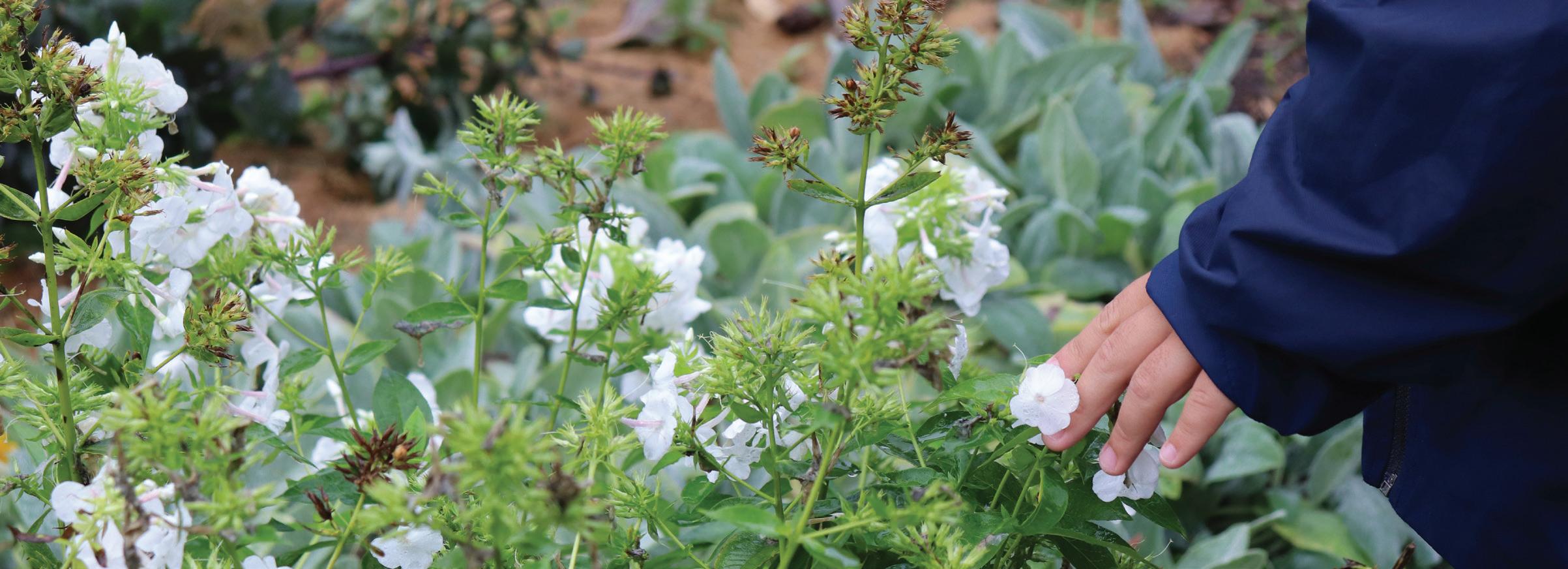
Created by gifts from the Shelby Cullom Davis Foundation in support of the maintenance and upkeep of the Davis Center and grounds. The Kathryn W. Davis Center for International & Regional Studies is currently used for faculty and staff offices, classes, and a meeting place for COA’s international population. The Davis Carriage House is a rustic addition to student housing. The Kathryn W. Davis Residence Village is the newest and greenest housing complex.
Gates is regularly used for lectures, theatrical productions, music and dance performances, and large meetings or workshops. The hall has a stage with optional podium, seating on the main floor and balcony, a lighting and sound booth, and digital projector with screen.
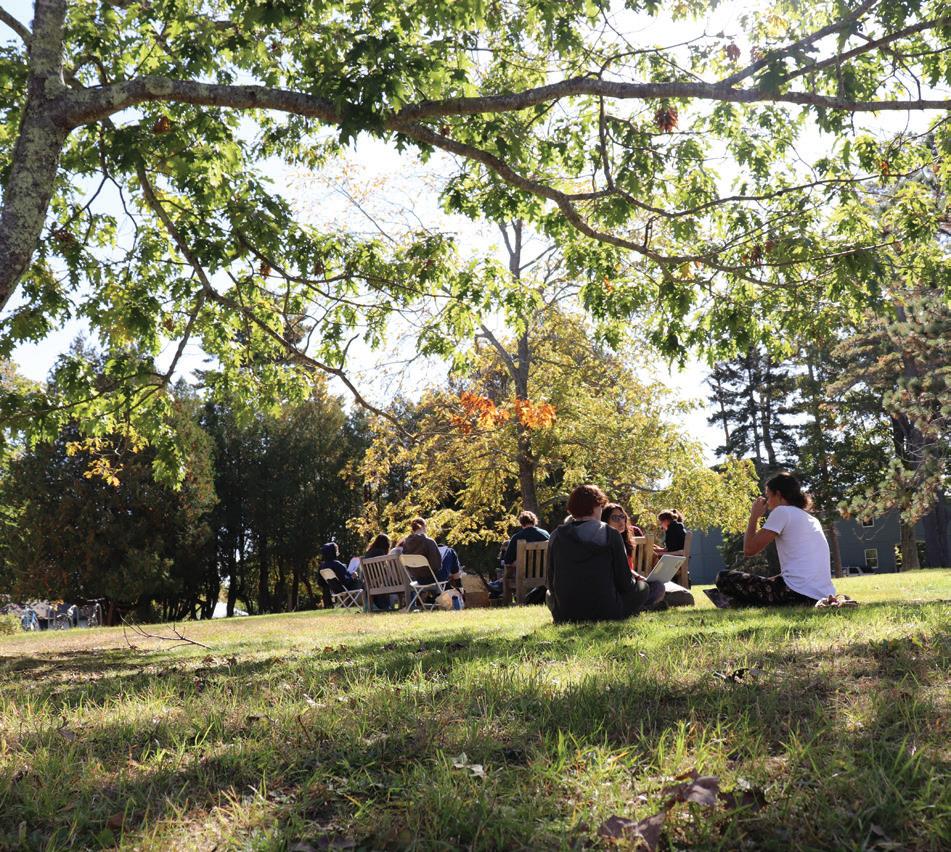

Thorndike Library was named in honor of Robert Amory Thorndike (1900–1972) and his wife Elizabeth (1908–1992) in recognition of their support and contributions to COA. Kaelber Hall, named for founding president Ed Kaelber, is the large natural-shingled building located in the center of campus. It overlooks the water, and houses the Thorndike Library, the Blair Dining Hall (Take-A-Break) and kitchen, and the Admission Office.
The Turrets was designed for John J. Emery of New York in 1893 by Bruce Price, designer of Québec’s famous Château Frontenac. In 1975, it was placed on the National Register of Historic Places, and is still one of the most important examples of cottage-era architecture in Maine. The Turrets currently houses classrooms and administrative and faculty offi ces.
$25,000+
Anonymous (2)
Anne T. & Robert M. Bass
Antoinette & Benjamin Brewster
Kate & Andrew Davis
Gale & Shelby Davis
Estate of Larry Duffy
Heather Richards Evans
Beth & Will Gardiner
Anne & Jim Green
Meredith & Dane Jensen
Arlene & Bob Kogod
Scott MacKenzie & Jerry Cruz
Jacomien Mars
Rebecca & Steve Milliken
Abby Moffat
Craig Neff
Louisa & Bill Newlin
Linda & Eliot Paine
Daniel Pierce, Jr. Family
Emily & Mitch Rales
Lalage & Steve Rales
Robin & David Reis
Walter M. Robinson III
Abby Rowe & Emma Brodeur
Valerie & John Rowe
Martie & Ed Samek
Lucy Bell Sellers
Peggy & Henry* Sharpe, Jr.
Diana Davis Spencer
Clare Stone
Greg Stone ’82
Allison & Steve Sullens
Genie & Will Thorndike, Jr.
Claudia & Carey Turnbull
*Deceased
Carol & Ken Weg
Kim & Finn Wentworth, Jr.
$10,000-24,999
Anonymous (2)
Nancy & Edgar Aronson
Mary Dohna ’80 & Wells Bacon ’80
Becky Bartovics
Mia & Timothy Bass
Joanie & Jamie Blaine
Sarah Currie-Halpern & Jon Halpern
Mary K. Eliot
Wendy & Bill Foulke, Jr.
Amy & Phil Geier
Sam Hamill, Jr.
Sonja Johanson ’95 & Richard Gordet
Gardiner & Nicholas Lapham
Casey Mallinckrodt
Anna Maynard
Jay McNally ’84
Toby Ritterhoff & David Oldach
Susie & Bob Peck
Marguerite Pitts
Catherine Baker-Pitts & Will Pitts III
Frances Pollitt ’77 & Frank E. Briber III
Kathy & George Putnam III
Bambi Putnam
Roxana & Tony Robinson, Jr.
Barbara & Steven Rockefeller
Cynthia E. Livingston & Hank L.P. Schmelzer
Jamie S. Somes
Nonie & John Sullivan, Jr.
Christopher Toomey
35+ YEARS
Bar Harbor Bank & Trust
Barbara B. & Charles P. Burton II
Helen Caivano ’80
First National Bank
Nina ’78 & Jonathan ’78 Gormley
Julie MacLeod Hayes ’78
Cathy Johnson ’74
Margaret & Philip B. Kunhardt III ’77
Phoebe Milliken*
Meta & Benjie Neilson
Louisa & Bill Newlin
Linda & Eliot Paine
Cathy L. Ramsdell ’78
Gail* & John Reeves
Lucy Bell Sellers
Alice N. Wellman
30–34 YEARS Anonymous (2)
Anne T. & Robert M. Bass
$5,000-9,999
Anonymous (1)
Cynthia Baker & Jonathan Zeitler
Sandi Read & Ron Beard
Jeannie & Henry Becton, Jr.
Allison & Avery Bourke III
Elizabeth Hodder Corbus & Clay Corbus
Sydney Davis
Chandler & Oliver Evans
Rena Zurn & Spencer Fulweiler, Jr.
Wendy C. Gamble
Georgia Hadler
Charlotte Hanson
Lynn & Jeff Horowitz
Ali & Steve Kassels
Sally Anne Kellogg
Serena & Paul Kusserow
Sydie Lansing
Pamy Manice
Linda & Clem McGillicuddy
Betsy & Nelson Mead, Jr.
Nancy Milliken
Irene Driscoll & Lincoln Millstein
Heather & George Mitchell
Elisabeth Higgins Null*
Cathy Orme
Barbara Robinson
Susan & David Rockefeller, Jr.
Amy Falls & Hartley Rogers
Ellen Seh (’75)
Jeri Presser & Charlie Seitz III
Margie & John Grace Shethar
Joss Tennille
Christiaan van Heerden ’09 & Family
John Wilmerding
Alice Blum Yoakum
$2,500-4,999
Anonymous (2)
Deirdre Swords & Michael Boland ’94
Jean & Ordway Burden
Judith Burger-Gossart
Linda K. Carman
Sheila Cusack & Gerard Caron
Mary Ann & Harry Charlston
Ruth M. Colket
Susan Ferrante-Collier & John Collier
Karen & Darron Collins ’92
Sally Crock
Verena & Rod Cushman
Adam Dau ’01
Beth Rendeiro & Steven DePaul
Ellen & Bill Dohmen
Peggy Dulany
Cindy & Phil Eichenholz
Laura Ellis
Deb Evans ’82 & Ron Schaaf
Neva Goodwin
Carolyn & Chris Groobey
Eileen & Paul Growald
Louise Hartwell
Cookie & Bill Horner
Peter Hunt & Family
Yardly & Scott Jenkins
Leslie Jones ’91
Susan Lerner & Steven Katona
Arthur Keller & Mark Gauthier
Denise Garone & Stuart Kogod
Linda & Philip Lader
Joan MacCracken & Robert Holmberg
Deb & Bob Milotte, Jr.
Phyllis Anina Moriarty
Meta & Benjie Neilson
•••••••••••••••••••••••••••••••••••••••••••••••••••••••••••••••••••••••••••••••••••••••••••••••••••••••••••••••••
John Biderman ’77
Sarah Corson & Dick Atlee
Sally Crock
Verena & Rod Cushman
Lisa Damtoft ’79
Norah Davis
Cynthia Fischer ’80
Barbara & Dick Fox
Jackson Gillman ’78
Neva Goodwin
Katherine Hazard ’76
Kate Russell Henry & Eric Henry (’74)
Kass Hogan ’81
Betsey Holtzmann & Abe Noyes
Laura & Michael Kaiser ’85
Susan Lerner & Steven Katona
Sally Anne Kellogg
Betsy & John Kelly
Arlene & Bob Kogod
S. Lee Kohrman
Anne Kozak
Suzanne Durrell & Scott McIsaac (’78)
Jay McNally ’84
Phyllis Anina Moriarty
Sandra Nowicki
Elisabeth Higgins Null*
Bruce Phillips ’78
Susan & David Rockefeller, Jr.
Hilda K. Roderick
Ellen Seh (’75)
Peggy & Henry* Sharpe, Jr.




Alumnx gifts are critical to College of the Atlantic. The Alumnx Leadership Circle honors the generosity and philanthropic leadership of alumnx who give $500 or more to COA.
Anonymous (5)
Heather Albert-Knopp ’99
Elizabeth Rousek Ayers ’95
Mary Dohna ’80 & Wells Bacon ’80
John Biderman ’77
Lisa Bjerke ’13 MPhil ’16
Deirdre Swords & Michael Boland ’94
Amanda Bunker (née Walker) ’98
Lisa Burton ’83 & Christopher Vincenty (’83)
Rebecca Buyers ’81
Helen Caivano ’80
Diana Cohn ’85 & Craig Merrilees
Pancho Cole ’81
Karen & Darron Collins ’92
Adam Dau ’01
David Emerson ’81
Richard Emmons ’92
Deb Evans ’82 & Ron Schaaf
Joanne Rodgers Foster ’85
Allison Fundis ’03 & Stein Servick ’05
June LaCombe (’75) & Bill Ginn ’74
Nina ’78 & Jonathan ’78 Gormley
Caitlyn Harvey ’02
Peter Heller ’85
Lisa ’80 & Bob ’79 Holley
Sue Inches ’79
Missy & Bill Janes (’71)
Sonja Johanson ’95 & Richard Gordet
Leslie Jones ’91
Brianne Jordan ’02
Jennifer Judd-McGee (’92)
Shawn ’00 & Sarah ’05 Keeley
Michael Keller ’09
Rosalind Rolland & Scott Kraus ’77
Margaret & Philip B. Kunhardt III ’77
Francesca Preston & Doug Lerch ’03
Jennifer Starr & Eugene Lesser ’78
Suzanne Durrell & Scott McIsaac (’78)
Jay McNally ’84
Clifton McPherson III ’84
Linzee Weld & Peter Milliken (’76)
Karla Tegzes & Peter Moon ’90
Sarah ’02 & Chase ’00 Morrill
Jacob ’93 & Carol ’93 Null / John W. and Clara C. Higgins Foundation
Carmelina Procaccini & Steven Oransky ’79
Bruce Phillips ’78
Frances Pollitt ’77 & Frank E. Briber III
Andrea Roberto ’92 & Michael Stevens ’94
Ryan Robison ’18
Taj Schottland ’10
Michael Stevens ’94
Pamela Stone ’87
Greg Stone ’82
Elena Tuhy-Walters ’90 & Carl Walters II
Christiaan van Heerden ’09 & Family
Rich Van Kampen (’13)
Luciana Pandolfi ’98 & Luke Wagner ’99
David Winship ’77
Erin ’04 & Mike ’01 Zwirko
Thomas D. Cahill III
Helen Caivano ’80
Gail & Ham Clark III
Joan Claybrook
Donna & Peter Cordova
Kerri & Rodger Dowdell III
Donna & Bill Eacho III
Richard Emmons ’92
Ben Emory
Peg Emple
Helen Dickey Fitz & David G. Fitz / Helen Dickey and David G. Fitz Charitable Fund
John Goodman
Susan Dowling & Andrew Griffiths
Nancy & Bill Grove
Diana & George Hambleton
Mimi & Neil Houghton
Sherry Huber*
Ayn & Steve Hunt
Maggie & Jack Kelley III
Betsy & John Kelly
Susan & John Klein
Susan & Keith Kroeger
Margaret & Philip B. Kunhardt III ’77
Rebecca & Michael Lambert
Burks B. Lapham
Courtney Lederer & Mark Thierfelder
Francesca Preston & Doug Lerch ’03
Roberta & Ralph Longsworth
Babette & Peter Loring
James Lowenstein
Carol & Rick Malone
Suzanne & Grant McCullagh
Judy McGeorge
Jane & Bob Meade
Charles H. Merriman III
Meredith & Phil Moriarty
Kathryn & Tom Nelson
Carmelina Procaccini & Steven Oransky ’79
Kristin & Jeremy Osborn
Carey Pickard III & Christopher Howard
•••••••••••••••••••••••••••••••••••••••••••••••••••••••••••••••••••••••••••••••••••••••••••••••••••••••••••••••••
Judith S. Perkins
Daniel Pierce, Jr. Family
Frances Pollitt ’77 & Frank E. Briber III
Patricia & Ronnie Rogers
Barbara Sassaman ’78
Meg Scheid ’85
Jane & Dennis Shubert
Lynne & Mike Staggs ’96
Clare Stone
Joanie Thorndike
Jo Todrank ’76 & Giora Heth
Paddy Wade
Loretta & Tom Witt
20–24 YEARS
Anonymous (3)
Acadia Corporation
Irene S. Alie
Bernie Alie ’84
Judy Allen
Elizabeth Rousek Ayers ’95
Jeffrey Baker ’77
Barbara Tennent &
Steven Barkan
Jill Barlow-Kelley & Bob Kelley
Sandi Read & Ron Beard
Paul Boothby ’88
Teisha A.W. Broetzman ’88
Jen Hughes & Ken Cline
John Dandy (’84)
Kelly, MPhil ’97 & George Dickson
Estate of Larry Duffy
Donna & Bill Eacho III
Carol Emmons
Ben Emory
Joan Feely ’79
Thomas A. Fisher ’77
Galyn’s Galley
Garden Club of Mount Desert
Katie & Steve George
Matt Gerald ’83
June LaCombe (’75) & Bill Ginn ’74
Megan Godfrey ’77
Jill & Sheldon Goldthwait, Jr.
Abigail Goodyear ’81 & John Allgood
Marie & John Gower
Bo Greene
Linda Gregory ’89
Mary (Nelson) Griffin ’97
Margaret Hoffman ’97
Cookie & Bill Horner
Peter Hunt & Family
Anna Hurwitz ’84
Missy & Bill Janes (’71)
Barbara & Charles Pierce, Jr.
Lisa & Jay Pierrepont
Kitty* & Dick Pierson
Sheila Sonne Pulling
Celian Putnam
Sandy Wilcox & Jack Russell
Deborah & John Schafer
Frances & Tim Sellers
Jane & Dennis Shubert
Laura McGiffert Slover & Bill Slover
Laura & Rob Stone
Caren Sturges
Patricia Sullivan
Lucy Hodder & Robert Thomson
Laura Stanton & Kim Tomlinson
Daphne & Andrew Trotter
Luciana Pandolfi ’98 & Luke Wagner ’99
Helen & Paul Weaver
Margaret Woolley & Gerard Vasisko
Carol Woolman & Richard Bullock*
$100-1,499
Anonymous (42)
Jane & Abass Alavi
Sharon Knopp & Enoch Albert
Eben Albert ’03
Heather Albert-Knopp ’99
Jane Alexander
Bernie Alie ’84
Judy Allen
Samuel Allen ’16
Diane & Alan Amendt
Heather & Richard Ames
Elly & Sandy Andrews III
Andrea Angera
Sally & Bill Arata
Traci & Lance Astbury
Shlomit Auciello ’17
Elizabeth Rousek Ayers ’95
Patty Bacon
Emily & Peter Baillos
Jeffrey Baker ’77
Nicki & Christopher Ball
Jill Barlow-Kelley & Bob Kelley
Natalie Barnett ’11
Sarah Barrett ’08
Julie Barth ’92
Terrie Cunliffe Beamer & Wesley Beamer
Felicia Bellows
Robin ’80 & Paul ’79 Beltramini
Evan Bender ’04
Bruce Bender ’76
Ann Berenfield
Glen Berkowitz ’82
Marie & Gerald Berlin
Robert Hunt Berry
Geena Berry ’10
Sara Faull ’98 & Eugenio Bertin ’97
Deodonne ’06 & Ranjan ’04 Bhattarai
Anne Oldach & William Bickley
John Biderman ’77
Hunter Bischoff ’21
Lisa Bjerke ’13 MPhil ’16
Linda Mejia Black ’09
Debi & Art Blank
Ryan Boduch ’98
Joanna Bombadil
Paul Boothby ’88
Patricia Honea-Fleming & Richard Borden
Kristin & Bryan Bradley
Ellen Brandt
Melita & Stewart Brecher
Jill K. Briggs
Lydia ’05 & Foy Brown
Alice & David Bullwinkle
Lisa Burton ’83 & Christopher Vincenty (’83)
Barbara B. & Charles P. Burton II
William Luther ’06 & Seth Carbonneau ’05
Donna Gold & Bill Carpenter
JoAnne Carpenter & Jan Hofstra
Liza F. Carter (’78)
Melinda ’00 & Ellen Casey-Magleby
Rebecca Cavanaugh
Erin Chalmers ’00
Lucy Hull & E. Barton Chapin III
Maggie Chotas
Katherine Kaufer Christoffel
Mount Dessert Bakery
Sheila W. Clark
Caren Clark
Jen Hughes & Ken Cline
Lillian & Arthur Clinger, Jr.
Catherine Clinger
Janis Coates
Pamela Cobb Heuberger ’83
Eddie & Clarke* Coggeshall
Alan Cohen
Diana Cohn ’85 & Craig Merrilees
Dru Colbert & Nancy Andrews
Pancho Cole ’81
Sarah Colletti ’10 & Kyle McMillan
Leza & Jim Colquhoun
Nancy Colter
Heidi Conner
Abigail Conrad
Roberta Coulter
Jill ’83 & Ben ’84 Cowie-Haskell
Brett Cramp
Marily Crews-Nelson
Tom Crikelair
Saskia Jansen & William Cromley
Dede & Dan Daigle
Lisa Damtoft ’79
John Dandy (’84)
Larry Dark
Kara ’96 & Matt ’98 Daul, and Family
Lindsay Davies
Caleb Fuller Davis ’02
Jessie Davis ’00 & Dan Bookham
Lucinda & Fred (’75) Davis
Norah Davis
Nicole d’Avis ’02
Nisha & John Dawson
Heather Dawson
•••••••••••••••••••••••••••••••••••••••••••••••••••••••••••••••••••••••••••••••••••••••••••••••••••••••••••••••••
Leslie Jones ’91
Steve King ’80
Aleda Koehn
Joan & Ted Koffman
Burks B. Lapham
Peggy Beaulac & Carl Little
Abigail Littlefi eld ’83
Maine Coast Sea Vegetables
Amy Young & David Malakoff ’86
Carol Manahan ’77
Suzanne & Grant McCullagh
Donna McFarland & Alan Richins
Jeffrey Miller ’92
Hope Olmstead
Lynn & William Osborn
Holly & Ken Paul
Tricia Pinkham
Carole Plenty
Nishi Rajakaruna ’94
Roxana & Tony Robinson, Jr.
Sydney Roberts Rockefeller
CedarBough T. Saeji ’93
Jean De Marignac ’91
Megan Smith ’90 & Daniel DenDanto ’91
Robert DeSimone
Danyelle Desjardins
Cerissa Desrosiers ’00
Holly Devaul ’84
Catherine Devlin ’93
Judith Dickson
Kelly, MPhil ’97, & George Dickson
Pat & Bill Dommermuth
Millard Dority
Yvonne Leicht & Cameron Douglas
Cameron Hale Douglass ’02
Margaret & Stephen Downing
Priscilla du Pont
Nathan Dubrow ’21
Reba Duckett
Jennifer Dussault ’02
Marcia L. Dworak
Molly & Justin Earle
Andrés Edwards
Catherine Elk ’82
David Emerson ’81
Peter W. Emmet ’92
Richard Epstein ’84
Nickilynn Estologa ’07
Jean & David Evans
Casey Jones & Bill Faller
Dan Falt
Joan Feely ’79
Sugar & Nat Fenton
Adrian Fernandez ’15
Laurel Finch
Robert Finn ’92
Grahme Fischer
Thomas A. Fisher ’77
Marie & John Fitzgerald
Judi & Howard Fogt
Joanne Rodgers Foster ’85
Barbara & Dick Fox
Susan Freed ’80
Bruce Friedman ’82
Cynthia E. Livingston & Hank L.P. Schmelzer
Dorothy & Roland Seymour
Sam Shaw
Stephen* & Roberta Smith
Alisa Nye ’15 & Davis Taylor
Ellen Thurman
Frank Twohill ’79
Christiaan van Heerden ’09 & Family
Karen Waldron & Richard Hilliard
Betsy Wisch ’83
Joplin Wistar ’84
15–19 YEARS
Anonymous (8)
Heather Albert-Knopp ’99
Susan George Lyons
Applegate ’76
D. Gay Atkinson II
Lelania Prior Avila ’92 & Family
Terrie Cunliffe Beamer & Wesley Beamer
Robin ’80 & Paul ’79 Beltramini
Glen Berkowitz ’82
Deirdre Swords & Michael Boland ’94
Patricia Honea-Fleming & Richard Borden
Lynn Boulger & Tim Garrity
Judith Burger-Gossart
Charles Butt
Ann Gleason
Emily & Evan Gnam
Megan Godfrey ’77
Erin ’92 & Graham ’91 Goff
Karen & Mark Goldberg
Jennifer Goldman
Nina Goldman & Douglas Legg
Judith Goldstein
Jill & Sheldon Goldthwait, Jr.
Jaki Erdoes ’80 & Terry Good ’80
Paul Goodof
John Gordon
Nina ’78 & Jonathan ’78 Gormley
Tree Goulet ’78
Marie & John Gower
Sandra Graham
Terri & George Graham
Jane Gray
Bo Greene
Gina Marie Greer
Lynn Gregorski
Linda Gregory ’89
Mary (Nelson) Griffin ’97
Marie Griffith & Leigh Schmidt
Jane & Jeffrey Griffith
Christina Sillari & Arne Gronningsater
Karen Guida
Peggy & Mike Gumpert
David Hahn (’83)
Heather & Mark Hallett
Irene Haisma & Jaap Ham
Caitlyn Harvey ’02
Carla Haskell
Samantha Lee Haskell ’10
Patricia & John Hatton
Jocelyn Hayes
Julie MacLeod Hayes ’78
Ed Haynsworth III ’98
Katherine Hazard ’76
Matthew Hecht & Mary Olson
Mary J. Heffernon
Peter Heller ’85
Nancy & Steven Helterman
Gail Henderson-King ’82
Kate Russell Henry & Eric Henry (’74)
Julia Moore & John Herron
Betsy & John Hewlett
Barbara Hilli
Pamela & Howard Hirsch
Thomas Hitchins
Juliet Hodge ’95
Deborah & Roger Hodge
Anne Wright Hodge & Byron Hodge
Noah Hodgetts ’10
Margaret Hoffman ’97
Kass Hogan ’81
Laura & Bob Hoguet
Lisa ’80 & Bob ’79 Holley
Betsey Holtzmann & Abe Noyes
Ellie & Paul Horwitz
Donna & David Hreniuk
Marlene & Jon Hubbard
Nora Gibson & William Hudson
Jane Hultberg
Lyn Hurwich ’80
Anna Hurwitz ’84
Sue Inches ’79
Shelley Latham & Kenton Jakub
Missy & Bill Janes (’71)
Barbara Janulis
Margaret & Peter Jeffery ’84
Cathy Johnson ’74
Jennifer Johnson & John Peitso
Louise Johnston
Christopher Jonas
Brianne Jordan ’02
Jennifer Judd-McGee (’92)
Laura & Michael Kaiser ’85
Cathy & Paul Kalenian
Nancy & Bucky Kales
Laura & Dave Katona
Sarah ’05 & Shawn ’00 Keeley
Michael Keller ’09
Ivy ’05 & Nathaniel ’04 Keller
Nan & Stephen Kennedy
Kasthuri & Phiroz Anwar Khan
Barbara & Steven Kiel
Stephen Kiernan
Lydia Kimball
Steve King ’80
Bori Kiss ’02
Roberta & Melvyn Klein
Joan & Allan Kleinman
Lucia & Robert Knight
Greg Koehlert ’96
Joan & Ted Koffman
S. Lee Kohrman
Anne Kozak
Rosalind Rolland & Scott Kraus ’77
Natasha Krell ’16
Sandy & Mark Kryder
Philip Bradish Kunhardt IV ’11
Maude Kusserow ’15
Nancy Erikson Ladd & Sam Ladd III
Heather Lakey ’00, MPhil ’05
Jude Lamb ’00
Junelle Lathem White
Marjorie Lau ’81
Virginie Lavallee-Picard ’07 & Alexander Fletcher ’07
Megan LeBoutillier
Jacquelyn & Dawn Lemoine
Jennifer Starr & Eugene Lesser ’78
Susan Letcher
Otti & Jeffrey Levine
Linda & Jonathan Lewis
Susan Geehr-Lewis & Jeffery Lewis
Monty Lewis
Alexandra Lewis
Jessie Greenbaum ’89 & Phil Lichtenstein ’92
Cynthia & Dan Lief
Bobbi & Werner Liepolt
Vanessa Little & Nathan Donaldson
Neith Little ’09
Abigail Littlefield ’83
Nancy London
Alice MacDonald Long
Margaret Longley ’10
Laura Casey ’01 & Benjamin Lord ’99
Nancy Sullivan-Lord & Dan Lord
Wendell* & Reba Luke
Betsy MacDermid
Caroline Pryor & David MacDonald
Genevieve & Ward MacKenzie
Kate & Ben Macko ’01
Amy Young & David Malakoff ’86
Carol Manahan ’77
Nancy Manter
Christine Manzey
Chloe Marr-Fuller ’00
Susan & Thomas Massey
Anne & Tony Mazlish
Angela Hondros-McCarthy & Dennis McCarthy
Leslie McConnell ’81
Sarah McDaniel ’93
Donna McFarland & Alan Richins
Kathleen McGraw
Nina & Archie McIntyre
Suzanne Durrell & Scott McIsaac (’78)
Lauren McKean ’83
Bill McLellan ’88
Suzy & Jordan McMonagle
Carlette McMullan
Donald K. McNeil
Clifton McPherson III ’84
Susan Scarf Merrell
Sandra Merrick
James Merrill
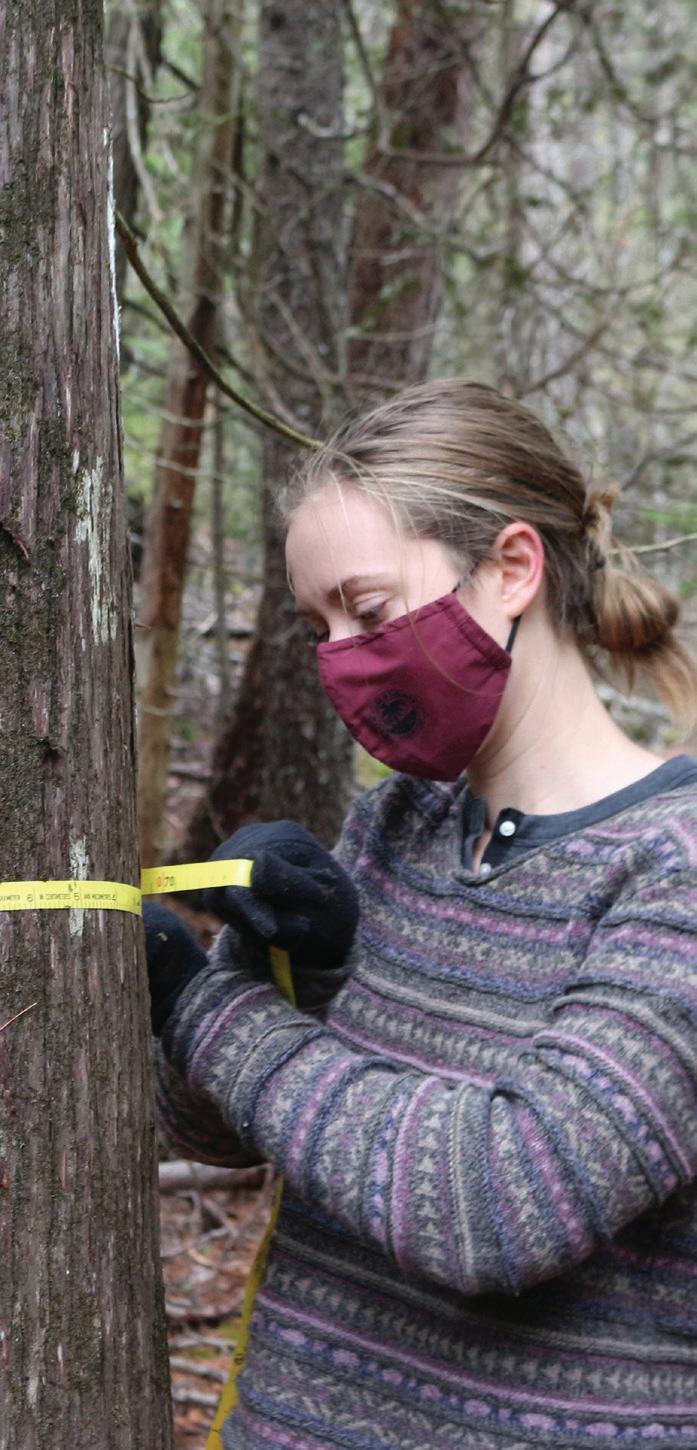
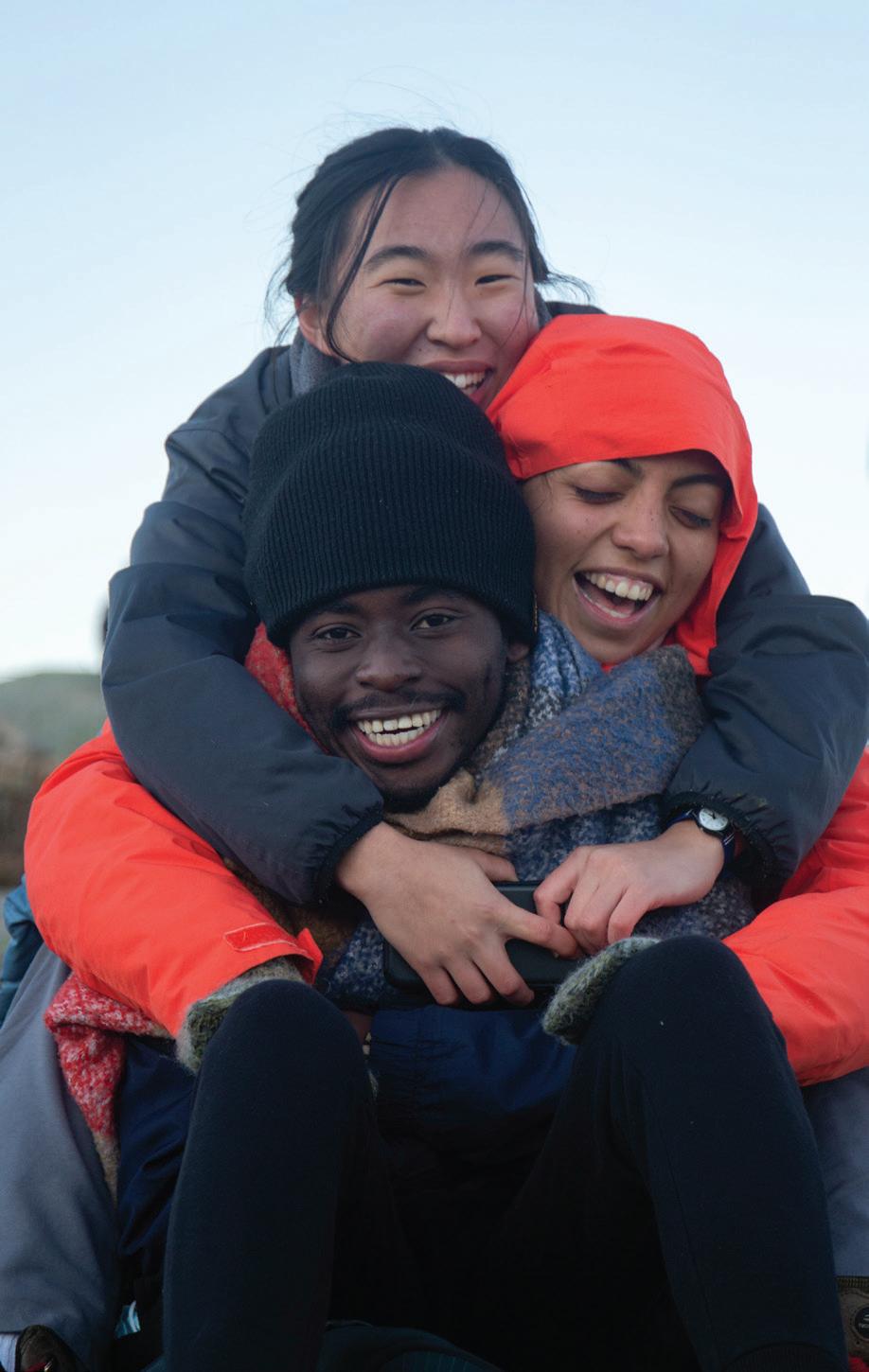


The Black Fly Society is the swarm of sustaining donors who set up a monthly online gift. It’s the paperless way to give to COA.
Anonymous (7)
Shirley Ailes
Eben Albert ’03
Heather AlbertKnopp ’99
Samuel Allen ’16
Emily Argo ’10
Jessica Arseneau ’18 & Roman Bina ’16
D. Gay Atkinson II
Shlomit Auciello ’17
John Avila (’92)
Cathy Bacon
Natalie Barnett ’11
Sandi Read & Ron Beard
Jaime (Duval) Beranek ’00
Deodonne ’06 & Ranjan ’04 Bhattarai
Lisa Bjerke ’13 MPhil ’16
Ellen Brandt
Lydia ’05 & Foy Brown
Deborah Bruns-Thomas
Melinda ’00 & Ellen
Casey-Magleby
Erin Chalmers ’00
Taj Chibnik ’95
Cynthia Chisholm ’86
Jen Hughes & Ken Cline
Pancho Cole ’81
Sarah Colletti ’10 & Kyle McMillan
Heidi Conner
Matthew Corum ’03
Jill ’83 & Ben ’84
Cowie-Haskell
Marily CrewsNelson
Gideon Bezalel Culman ’02
Kara ’96 & Matt ’98 Daul, and Family
Jessie Davis ’00 & Dan Bookham
Cerissa Desrosiers ’00
Holly Devaul ’84
Marilyn Downs ’77
Jennifer Dussault ’02
Samuel Edmonds ’05
Nathan Emley
Adrian Fernandez ’15
Robert Finn ’92
Susan Freed ’80
Rena Zurn & Spencer Fulweiler, Jr.
Carla Ganiel
Helen Geils
June LaCombe (’75) & Bill Ginn ’74
Annika Maia Ginsberg ’99
Marie Malin ’01 & Wing Goodale MPhil ’01
Nina ’78 & Jonathan ’78 Gormley
Carla Seddio & Michael Hamilton
Kelly Harris ’12
Nicholas Harris ’12
Ed Haynsworth III ’98
Rayanna Higley
Juliet Hodge ’95
Noah Hodgetts ’10
Margaret Hoffman ’97
Russ Holway
Laura Howes Noonan ’09
Kathryn Hunninen ’03 & Jose Luis Sagastegui
Lyn Hurwich ’80
Anna Hurwitz ’84
Jane & David James
Brianne Jordan ’02
Jennifer JuddMcGee (’92)
Sarah ’05 & Shawn ’00
Keeley
Ashlesha Khadse ’08
Jill ’99 & Joseph ’01
Kiernan
Greg Koehlert ’96
Natasha Krell ’16
Carolyn Kurek
Jude Lamb ’00
Virginie LavalleePicard ’07 & Alexander Fletcher ’07
Melissa LeDonne
Monty Lewis
Jessie Greenbaum ’89 & Phil Lichtenstein ’92
Bobbi & Werner Liepolt
Neith Little ’09
Maria Vanegas Long ’84
Blaise Maccarrone ’01
Kate & Ben Macko ’01
Chloe Marr-Fuller ’00
Lauren McKean ’83
Megan McOsker ’90
Kendra ’01 & Jake Miller
Heather & George Mitchell
Leland Moore ’10
Sarah Neilson ’09
Jackie Nielson
Shirley Oskamp & Gary Lindorff
Melissa ’91 & Peter Ossanna
Rain Perez ’12
Lisa & Jay Pierrepont
Drake ’03 & Finn ’02 Pillsbury
Beth & Benet Pols
Nishi Rajakaruna ’94
Michele Riccio ’88
Jason Rich ’96
Andrea Roberto ’92 & Michael Stevens ’94
Elizabeth-Anne Ronk ’11
Mary Ropp ’09
Derren Rosbach ’95
Lisa Kay Rosenthal ’09
Eliza Ruel ’13 & Ian Yaffe
CedarBough T. Saeji ’93
Addams Samuel ’11
Jodi Sargent MPhil ’06 & Family
Philip Sasse
Mitsuko & Steven Savage ’77
Taj Schottland ’10
Eloise Schultz ’16
Janet Schuman
Kirsten Schwarz ’00
Amy & Ryder Scott ’97
Kate Sheely ’07
Helena Shilomboleni ’09
Henry Steinberg ’06
Andrea Perry ’95 & Toby Stephenson ’98
Dorie Stolley ’88
Alisa Nye ’15 & Davis Taylor
Julianne Taylor ’06
Mari Huang Li Thiersch ’17
Julia Walker Thomas ’08
Ellen Thurman
Meg TrauSerrano ’12
J. Louise Tremblay ’91
Elena Tuhy-Walters ’90 & Carl Walters II
John Twiss
Caitlin Unites ’03
Karen Valcourt
Jennifer Vinck ’93
Shamsher Virk ’07
Karen Waldron & Richard Hilliard
Ben Walters ’81
Marcia & Tom Wessels
Peter Williams ’93
David Winship ’77
Anna Wlodarczyk ’04
Cathleen Wyman
Amanda Zych ’06
Andrea & Jon Pactor
Elizabeth & Christopher Paquette
Susan B. Parker
Pam Parvin ’93
Lori Patterson
Holly & Ken Paul
Susanne & Bear Paul
Malcolm E. Peabody
Cynthia Peach & James Chaput
Joseph Peacock ’78
Kristina & George Pearlingi
Susan & Robert Pennington
Margaret Pennock ’84
Rain Perez ’12
Kristin Pesman
R. Anderson* & Daria Pew
Mary Pickett & Marc Pifko
Elena Piekut ’09
Sara W. Pierce
Laura & Vassar Pierce, Jr.
Susan Pierce ’77
Sharon & Philip Pillsbury
Drake ’03 & Finn ’02 Pillsbury
Rodney Pitts
Carole Plenty
Shiva Polefka ’01
Esther & Christopher Pullman / The Pullman Charitable Fund
Nishi Rajakaruna ’94
Cathy L. Ramsdell ’78
Robin & David Ray (’81)
Lisa & Keith Reed
Graham Reeder ’13
Elisabeth Reynolds & Max Senter
Jason Rich ’96
Joanne & Wayne Rickert
Louise Riemer & William Locke
Sandy & Jim Righter
Andrea Roberto ’92 & Michael Stevens ’94
Jared I. Roberts
Ryan Robison ’18
Liane Dorsey & Gregory Robison
•••••••••••••••••••••••••••••••••••••••••••••••••••••••••••••••••••••••••••••••••••••••••••••••••••••••••••••••••
David Winship ’77
Judy & Lou Zawislak
10–14 YEARS
Anonymous (10)
Barbara Dole Acosta (’77)
Adirondack Foundation -
Evergreen Fund
Robin Glaser & Howard Altmann
Heather & Richard Ames
Elly & Sandy Andrews III
Nancy & Edgar Aronson
Ryan Arsenault ’00
Lucy Atkins ’12
John Avila (’92)
Bar Harbor Whale Watch Co.
Julie Barth ’92
Emily Beck & Geof Young
Jeannie & Henry Becton, Jr.
Evan Bender ’04
Ann & Fred Benson
Jaime (Duval) Beranek ’00
Heather ’08 & Sean ’08 Berg
Deodonne ’06 & Ranjan ’04 Bhattarai
Janet Biondi ’81
Linda Mejia Black ’09
Ryan Boduch ’98
Jill K. Briggs
Lydia ’05 & Foy Brown
Amanda (Walker) Bunker ’98
Jean & Ordway Burden
Lisa Burton ’83 & Christopher Vincenty (’83)
Trisha Cantwell-Keene
Linda K. Carman
JoAnne Carpenter & Jan Hofstra
Liza F. Carter (’78)
Lucy Hull & E. Barton Chapin III
Charles B. Sweatt Foundation
Mary Ann & Harry Charlston
Catherine Clinger
Laura Cohn ’88
Dru Colbert & Nancy Andrews
Sarah Colletti ’10 & Kyle McMillan
Jill ’83 & Ben ’84 Cowie-Haskell
Tom Crikelair
Adam Dau ’01
Wendy & Laurance Rockefeller, Jr.
Susie Rodriguez & Charles Lowrey
Patricia & James Rogers
Patricia & Ronnie Rogers
Derren Rosbach ’95
Nadia Rosenthal & Alan Sawyer
Lisa Kay Rosenthal ’09
Stephen Roth
Gordon Rowe
Eliza Ruel ’13 & Ian Yaffe
Dana & Andrew Ruel
Deanna Russell
Marcie Ryan ’01
Theresa McNamara & Don Saccente
CedarBough T. Saeji ’93
DeWitt Sage, Jr. Carol & Bill Sanford
Sardo Sardinsky ’84
Jodi Sargent MPhil ’06 & Family
Philip Sasse
Mitsuko & Steven Savage ’77
Elizabeth Scanlan
Ruth Calvin Scharf
Anais Tomezsko ’04 & Noah Scher ’04
Taj Schottland ’10
Janet Schuman
Kirsten Schwarz ’00
Lyta & Robert Seddig
Allison Fundis ’03 & Stein Servick ’05
Dorothy & Roland Seymour
Rachael ’05 & Sanjeev ’05 Shah and Family
Lisa Sharkey
Sam Shaw
Kate Sheely ’07
Shirley & Stuart Showalter
Elisabeth Shuman
Tina & Sam Sifton
J.W. Sims
Katy Homans & Patterson Sims
Heather Sisk ’93 & Craig Gordon
Stephen* & Roberta Smith
Iona Smith ’92
Carolyn Snell ’06
Harriet Soares
Jill & Sandy Spaulding
Lynne & Mike Staggs ’96
Laura Starr ’84
Henry Steinberg ’06
Katherine Moloney & David Steinberg
Carolyn Was Flanagan Stephens
Andrea Perry ’95 & Toby Stephenson ’98
Frankie FitzGerald & James Sterba
Karen & Brooke Stevens
Nancy ’81 & Peter ’81 Stevick
Dorie Stolley ’88
Pamela Stone ’87
Silvija Strikis
Douglas Sward ’96
Virginia Sweatt
Sandra & William Swinburne
Julianne Taylor ’06
Alisa Nye ’15 & Davis Taylor
Holly & Willard Terry
Tracey Teuber ’98
Mari Huang Li Thiersch ’17
Ann & George Thom
Stanley Thomas
Ann Walker & Richard Thomas
Lois & Ken Thomsen
Gail & Robert Thorndike II
Deanie Thorsell
Ellen Thurman
Jo Todrank ’76 & Giora Heth
Mary B. Townsend ’97
Winifred Hentschel & Philip Trackman
Meg Trau-Serrano ’12
J. Louise Tremblay ’91
Linda Beattie & Paul Tremblay
Bruce Tripp
Elena Tuhy-Walters ’90 & Carl Walters II
Sue Turner & Karl Karnaky
Lucy Tuton
Lynda Tyson & Charles Tyson Jr.
Caitlin Unites ’03
Bonnie & Jim Van Alen II
Matthe van Dam
Lori van Dam
Rich Van Kampen (’13)
Heather & John Veague
Joyce Velba
Shamsher Virk ’07
Stacey & William Voigt
Karen Waldron & Richard Hilliard
James W. Walker
Ben Walters ’81
Peter Wayne ’83
Jeanette Levine & Patrick Welch II
Alice N. Wellman
Karen Wennlund ’85
Marcia & Tom Wessels
Steve Wessler
Caroline West
Scott & Kate Weymouth
Murray Wheeler, Jr.
Debby & Alexander Wheeler
Thomas Whitaker
Jennifer Whitesel
Amos Tappan Wilder
Sarah Wilson
Jane Winchell ’82
David Winship ’77
Sydney & Jonathan Winthrop
Betsy Wisch ’83
Janet Wise
Loretta & Tom Witt
Anna Wlodarczyk ’04
Sue Woehrlin ’80
Lynne Wolitzer
Linda & George Woolley
Jane Wright
Cathleen Wyman
Phyllis Menken & Tobias Yarmolinsky
Sara Yasner ’95 & John Mahoney
Michael Youdelman ’95
Christine & Norb Young, Jr.
David Young
Susan Young
•••••••••••••••••••••••••••••••••••••••••••••••••••••••••••••••••••••••••••••••••••••••••••••••••••••••••••••••••
Jessie Davis ’00 & Dan Bookham
Davis Conservation Foundation
Davis Educational Foundation
Davis Projects for Peace
Davis United World College
Scholars Program
John Deans ’07
Megan Smith ’90 & Daniel DenDanto ’91
Beth Rendeiro & Steven DePaul
Cerissa Desrosiers ’00
Cameron Hale Douglass ’02
Wendy & Michael Downey
Peggy Dulany
Samuel Edmonds ’05
Peter W. Emmet ’92
Casey Jones & Bill Faller
Sugar & Nat Fenton
Marie & John Fitzgerald
Joanne Rodgers Foster ’85
Annie Guppy & David Zachow
Judy & Lou Zawislak
Libby & Aaron Zweig
Erin ’04 & Mike ’01 Zwirko
Amanda Zych ’06
Ashley Bryan Center
Mary Reath & John Gummere
Maude & John March, Jr. ’76
Anny Seavey
Barbara Stolley
Jan & Barbara Swartwout
Anonymous (1)
Acadia Corporation
Acadia Yacht Management
Adirondack FoundationEvergreen Fund
AmazonSmile
American Endowment Foundation
Amy Falls and Hartley Rogers Foundation
Artemis Gallery
Ayco Charitable Foundation
Bains Family Foundation
Bar Harbor Bank & Trust
Bar Harbor Whale Watch Co.
The Timothy R. Bass Family Foundation
Paul Bechtner Foundation
Becton Family Foundation
Bell & Anderson, LLC
BNY Mellon Charitable Gift Fund
Boston Family Office
The Florence V. Burden Foundation at the recommendation of Foundation
Directors Ordway and Jean Burden
Captain Planet Foundation
The Casco Foundation at Spinnaker Trust
Charles B. Sweatt Foundation
Bruce Friedman ’82
Joanne & Richard Fuerst
Marina Garland ’12
Annika Maia Ginsberg ’99
Ben Goldberg ’90
Gerda Paumgarten & Lawrence Goldfarb
Nina Goldman & Douglas Legg
Jaki Erdoes ’80 & Terry Good ’80
Marie Malin ’01 & Wing Goodale MPhil ’01
Diane Gordon
Emma Rearick ’08 & Jay Guarneri ’06
Louise Hartwell
Ed Haynsworth III ’98
Juliet Hodge ’95
Noah Hodgetts ’10
Russ Holway
Lynn & Jeff Horowitz
Kathryn Hunninen ’03 & Jose Luis Sagastegui
James Deering Danielson Foundation
Cheryl A. Johnson (’80)
Brianne Jordan ’02
Jennifer Judd-McGee (’92)
Ali & Steve Kassels
Michael
Colket Family Foundation
Community Foundation of Jackson Hole
Community Foundation of South GA., Inc.
Cromwell Harbor Supporting Foundation, Inc.
Dabones Studios Limited
Dandy Solar Electric
James Deering Danielson Foundation
The Shelby and Gale Davis Charitable Fund
Shelby Cullom Davis Charitable Fund Inc.
Davis Conservation Foundation
Davis Educational Foundation
Davis Projects for Peace
Davis United World College Scholars Program
The Dayton Foundation
The Eacho Family Foundation
The Susan and Roberth Nathane, Jr Charitable Fund at East Bay Community Foundation
The Elm Grove Foundation
The Endeavor Foundation
The Chandler B. and Oliver A. Evans Foundation
Everance Foundation
Exelon Foundation
Fidelity Foundation
First National Bank
The FJC Fdn of Philanthropic Funds
Fore River Foundation
The Fourth Corner Foundation
Furbush-Roberts Printing Co, Inc
Galyn’s Galley
Garden Club of Mount Desert
Google LLC
Growald Climate Fund
John W. and Clara C. Higgins Foundation
Institute of Museum and Library Services
J.P. Morgan Charitable Giving Fund
Jewish Communal Fund
Jewish Community Foundation
The Howard Johnson Foundation
The Janet Stone Jones Foundation
JPMorgan Chase Foundation
K Street Coaching
James and Sally Anne Kellogg Fund at The Chicago Community Foundation
Robert and Arlene Kogod Family Foundation
Machias Savings Bank
Maine Beer Co LLC
Maine Coast Sea Vegetables
Maine Community Foundation
Maine Outdoor Heritage Fund
The Nelson Mead Fund
The Gerrish H. Milliken Foundation
National Center for Research Resources, NIH
National Christian Foundation
National Philanthropic Trust (NPT-UK)
Nautilus Foundation Incorporated
Newtmont Foundation
Northern Trust
Onion Foundation
Pole-to-Pole Conservation (PTPC)
Prairie-Music
Renaissance Charitable Foundation, Inc.
Rockefeller Philanthropy Advisors
Cornelia Cogswell Rossi Foundation
Rowe Family Foundation
Sanofi
Sidney Stern Memorial Trust
The Sims/Maes Foundation, Inc
The Diana Davis Spencer Foundation
The Seth Sprague Educational and Charitable Foundation
Marion Boulton “Kippy” Stroud Foundation
Charles B. Sweatt Foundation
The Synergy Foundation
TG Dunn Plumbing
Robin Kuehn ’10
Philip Bradish Kunhardt IV ’11
Heather Lakey ’00, MPhil ’05
Virginie Lavallee-Picard ’07 & Alexander Fletcher ’07
Lizzie Leone ’93
Daniel Lindner, Jr. ’11
Neith Little ’09
Laura Casey ’01 & Benjamin Lord ’99
Wendell* & Reba Luke
Blaise Maccarrone ’01
Caroline Pryor & David MacDonald
Kate & Ben Macko ’01
David Mahoney ’86
Maine Beer Co LLC
Carol & Rick Malone
Chloe Marr-Fuller ’00
Lauren McKean ’83
Megan McOsker ’90
Deb & Bob Milotte, Jr.
Heather & George Mitchell
Truist (SunTrust)
Turnbull Family Foundation Inc.
Uplands Family Foundation
Valley Charitable Trust
WaterStone
Rosalie J. Coe Weir Foundation
The WELWE Foundation
The Widgeon Point Charitable Foundation
Witham Family Charitable Fund
Yaverland Foundation
Luis Aguierre-Torres
Abdullahi Ahmed
Rebecca Aubrey ’96
Jen Baroletti
Lynn Bean-Ingram
Rachel Beckwith
John Bielenberg
Johannah Blackman
Cindy Brotzman
Richard Burbank
Ben Chesler
Evan Coleman
Melissa Conte
Rich Csenge
Kristy Cunnane
Meggie Curtis ’19
Jane Disney
Pam Dunphy
Amanda Dyer
Tim Erickson
Martín Espada
Mary Fallon
Mark Fincher
Rhonda Fortin
Billie Jean Guerrero
Anna Goldman ’07
Liz Graves
Jenny Gumm
Chloe Hankin ’20
Lynn Hanna
Adrienne Hanson
Kayla Hartwell ’07
Steve Haynes
Stephanie Hendrix
Brian Henkel
Grace Hilmer
Charlie Johnson
Surya Karki ’16
Julie Keblinsky
Nanne Kennedy
Craig Kesselheim ’76
Dave Korn
Etta Kralovec
Dayana Krawchuk
Clark Lawrence ’92
Cora Lewicki ’10
Tim Lock
Neak Loucks
Hannah Lust
Martin Mackey
Alan Mainwaring
Margaret Maiorana ’15
Heather Manchester
Brooks McCutchen ’84
Emma McDowell
Julie Meltzer
Khristián Mendéz Aguirre ’15
Michelle Merica
Kate Meyer
Hannah Mondrach
Jordan Motzkin ’11
Laura Muller
JC Mutchler
Susan Newborn ’90
Eli Nixon ’99
Jim Nizamoff
Aoife O’Brien ’05
Matthew O’Malia
Leah Olson
Heidi Omlor
Steve Parmenter
Jan Paul
•••••••••••••••••••••••••••••••••••••••••••••••••••••••••••••••••••••••••••••••••••••••••••••••••••••••••••••••••
Chandreyee Mitra ’01 & Eric Shuman
Phyllis & Larry Mobraaten
Kevin Monahan
Suzanne Morse & Noreen Hogan ’91
Diane Blum & Bud Motzkin
Bethany Murray ’03
Sarah Neilson ’09
Carmelina Procaccini & Steven Oransky ’79
Ned Ormsby ’91
Melissa ’91 & Peter Ossanna
Andrea & Jon Pactor
Susan B. Parker
Anne Patterson ’80
Susie & Bob Peck
Barbara & Charles Pierce, Jr.
Lisa & Jay Pierrepont
Drake ’03 & Finn ’02 Pillsbury
Jane & Keith ’80 Prairie
Kenneth Punnett ’84
Robin & David Ray (’81)
Graham Reeder ’13
Jason Rich ’96
Andrea Roberto ’92 & Michael Stevens ’94
Amy Falls & Hartley Rogers
Elizabeth-Anne Ronk ’11
Eric Roos ’87
Mary Ropp ’09
Lisa Kay Rosenthal ’09
Abby Rowe & Emma Brodeur
Estate of Robert H. Rubin
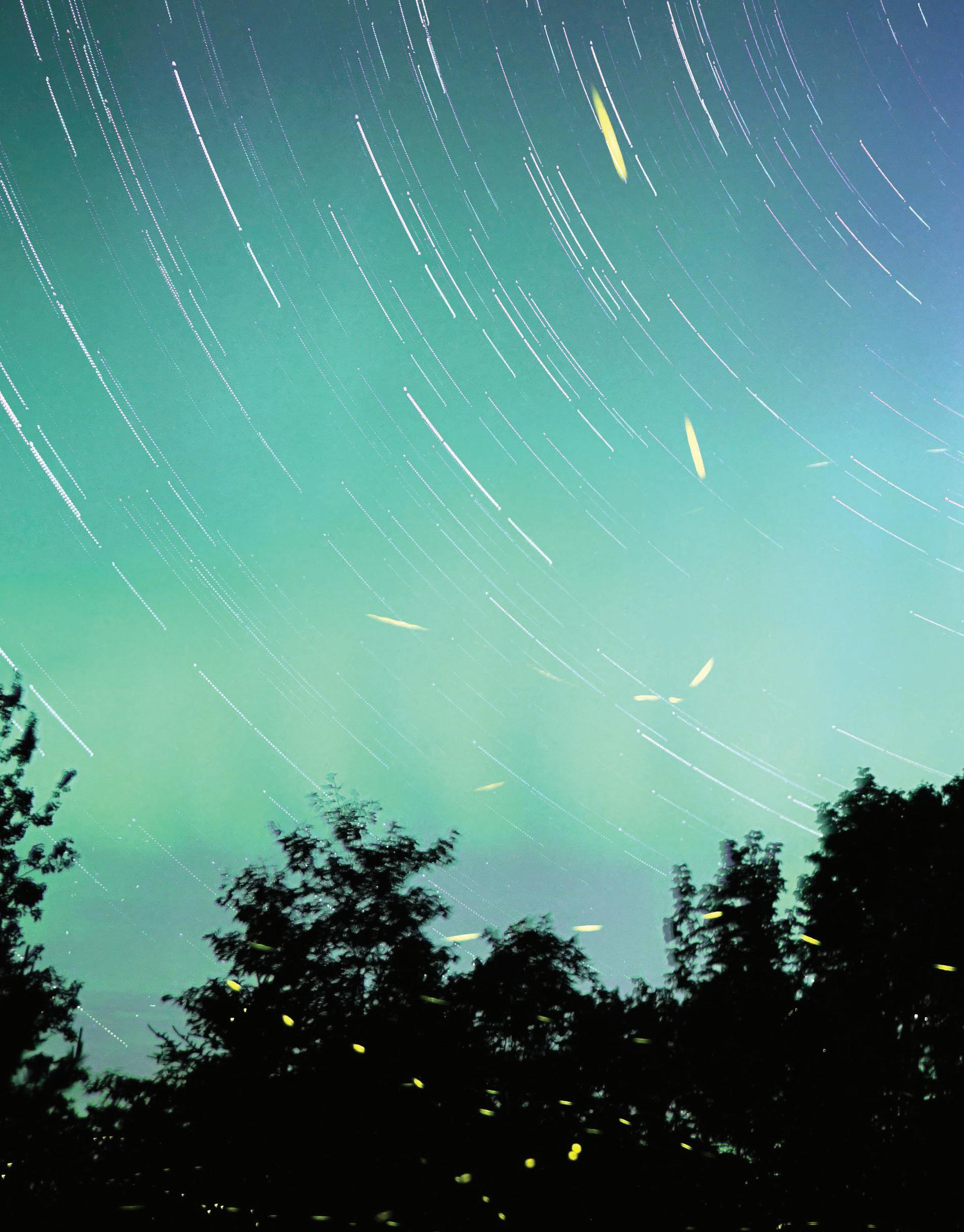
The Northern Lights Society is an association for individuals who have made planned gifts to benefit COA. These gifts include bequests, charitable gift annuities, and gifts of life insurance, to name a few.
If you have
included COA in your estate plans but do not see your name listed, please contact the
The Champlain Society, College of the Atlantic’s premier giving society, was created in 1988 to give appropriate recognition to those special friends who contribute at the highest levels to the Annual Fund.

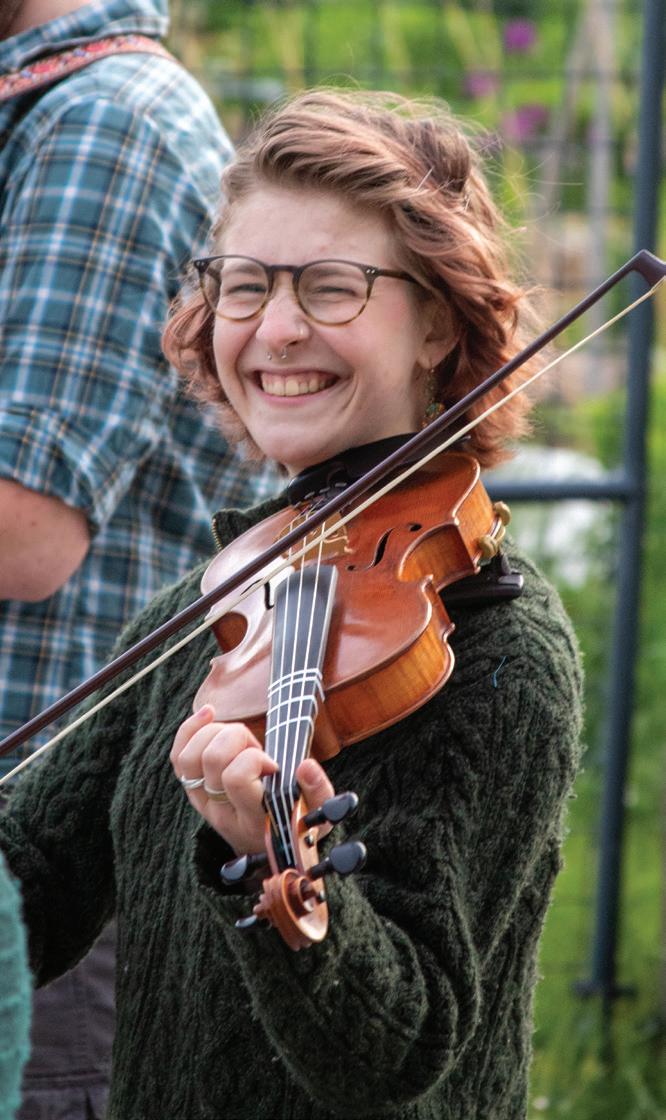

The importance of annual giving is critical to the stability and ongoing operations of the college.
Such support advances the college’s mission, ensures academic excellence, provides financial aid where needed, and enhances the maintenance and stewardship of the campus.
For more information on becoming a member of the Champlain Society, please contact Shawn Keeley at 207-801-5620, or visit coa.edu/tcs
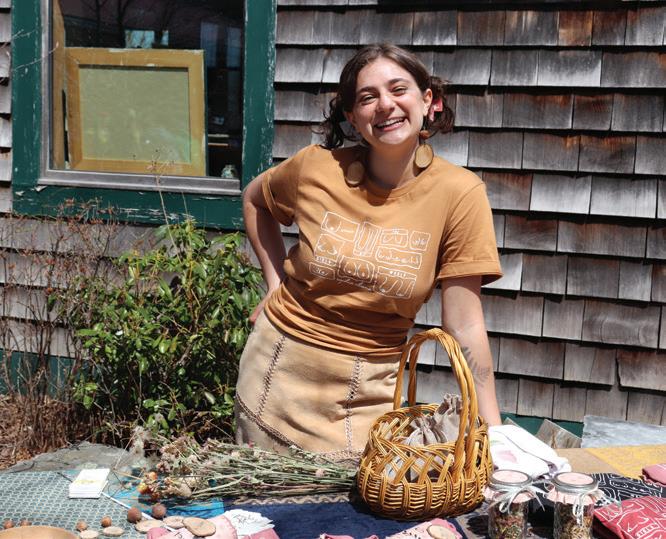
The faculty, students, trustees, staff, and alumnx of College of the Atlantic envision a world where people value creativity, intellectual achievement, and the diversity of nature and human cultures. With respect and compassion, individuals will construct meaningful lives for themselves, gain appreciation for the relationships among all forms of life, and safeguard the heritage of future generations.
College of the Atlantic enriches the liberal arts tradition through a distinctive educational philosophy—human ecology. A human ecological perspective integrates knowledge from all academic disciplines and from personal experience to investigate—and ultimately improve—the relationships between human beings and our social and natural communities. The human ecological perspective guides all aspects of education, research, activism, and interactions among the college’s students, faculty, staff, and trustees. The College of the Atlantic community encourages, prepares, and expects students to gain expertise, breadth, values, and practical experience necessary to achieve individual fulfillment and to help solve problems that challenge communities everywhere.
Cynthia Baker, chair
Michael Boland ’94
Beth Gardiner
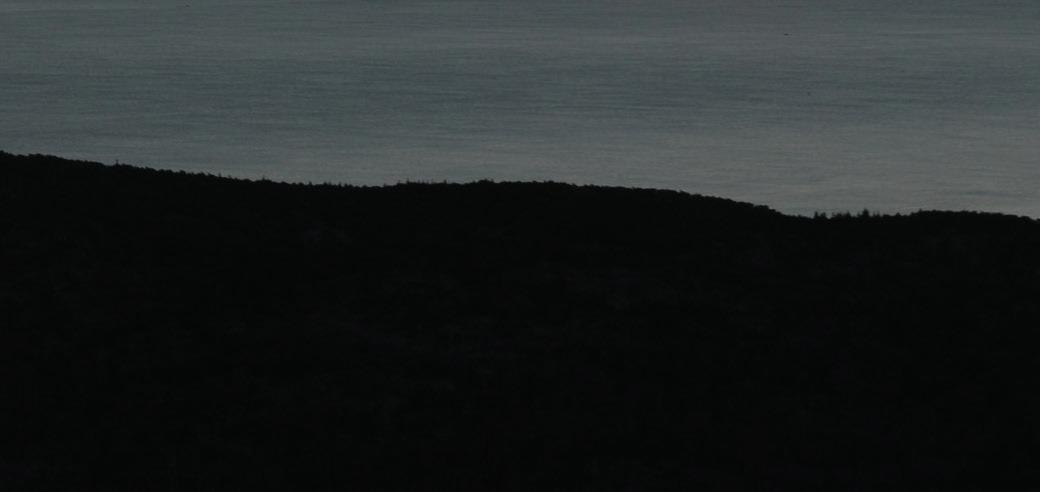
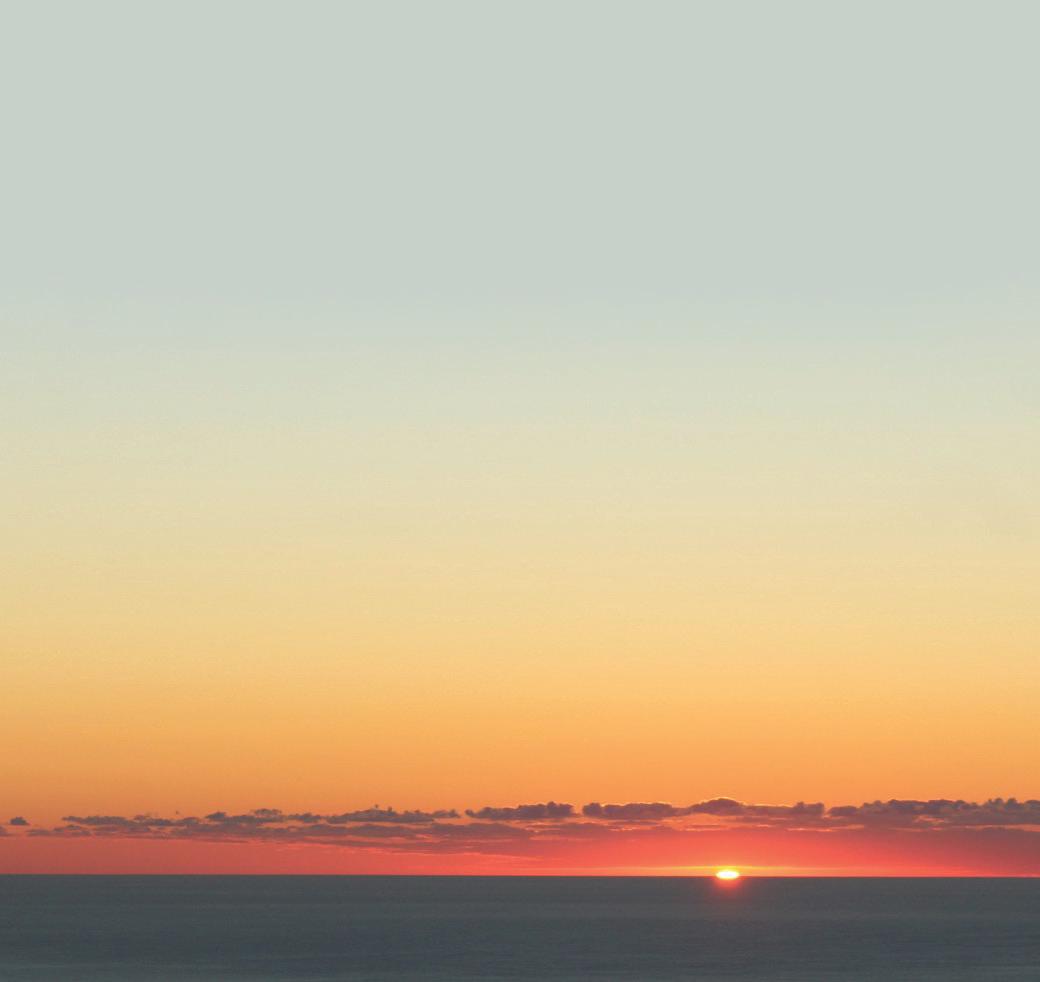
Amy Geier
George Hambleton
Lissa Hodder
Cookie Horner
Casey Mallinckrodt
Tony Mazlish
Jay McNally ’84
Martie Samek
Laura Stone
Shawn Keeley ’00, dean of institutional advancement (staff)
Steve Sullens, chair
Clay Corbus
Jay McNally ’84
Hank Schmelzer
Gifford Combs (advisory member)
Brooke Parish (advisory member)
Bear Paul, administrative dean and CFO (staff)
Missy Cook, controller (staff)
If this book has inspired you to learn more about possible investment opportunities, please let us know. Contact College of the Atlantic’s Advancement Office at 207.801.5620. You can also learn more about College of the Atlantic’s endowment needs and make a gift online.
coa.edu/giving
















